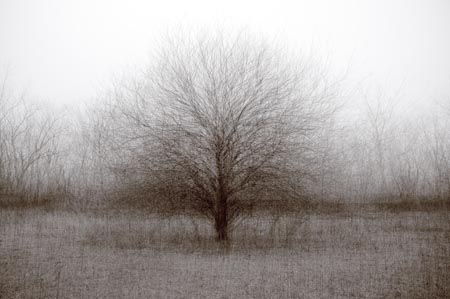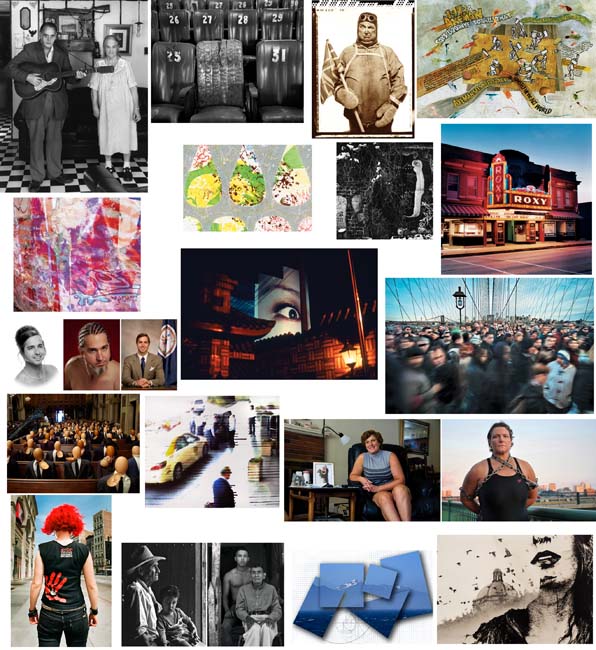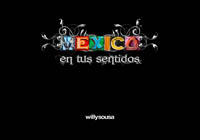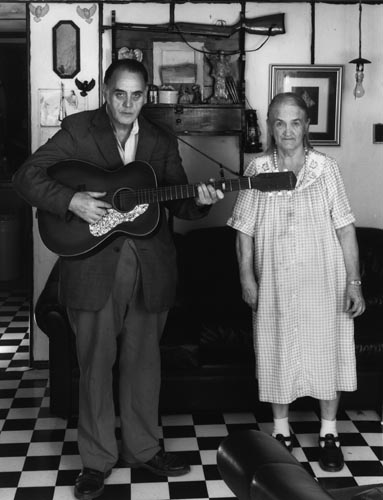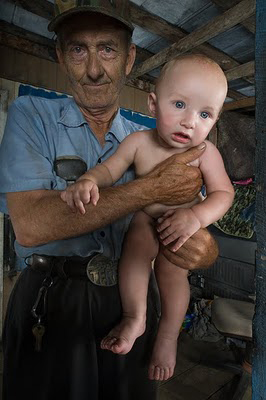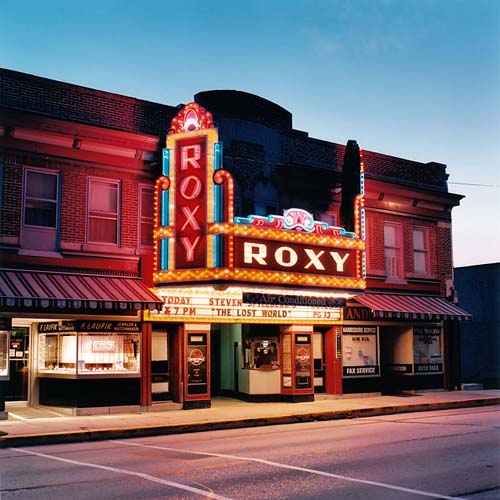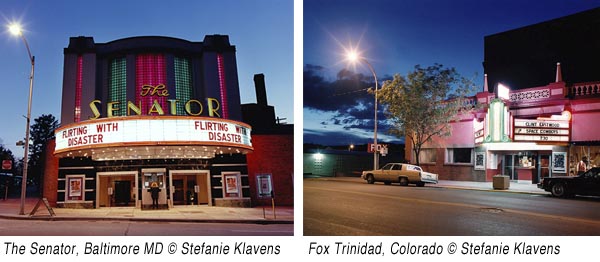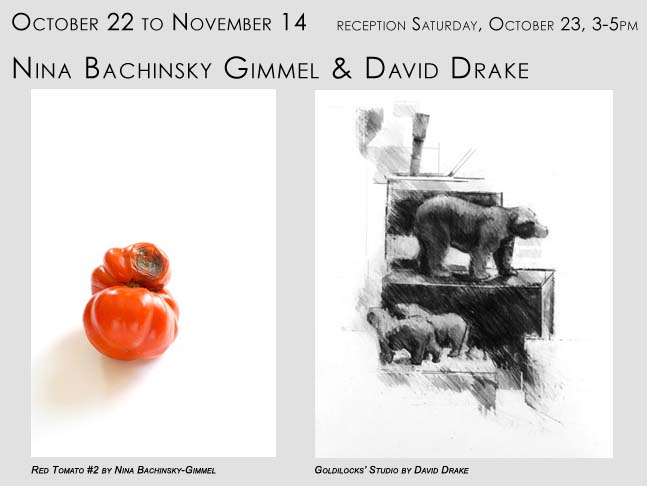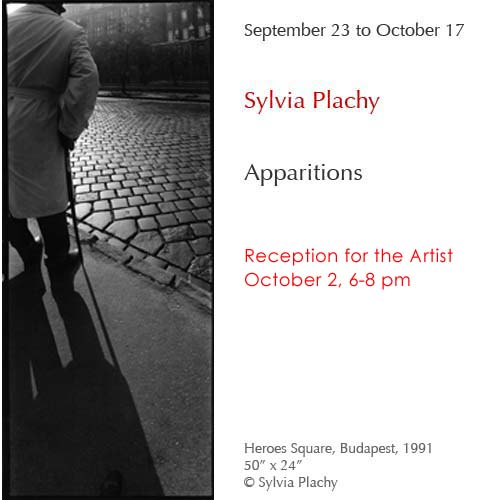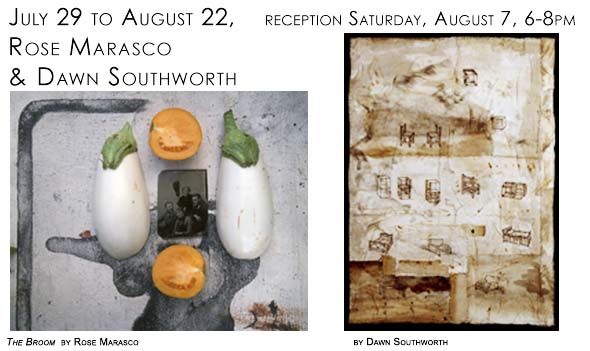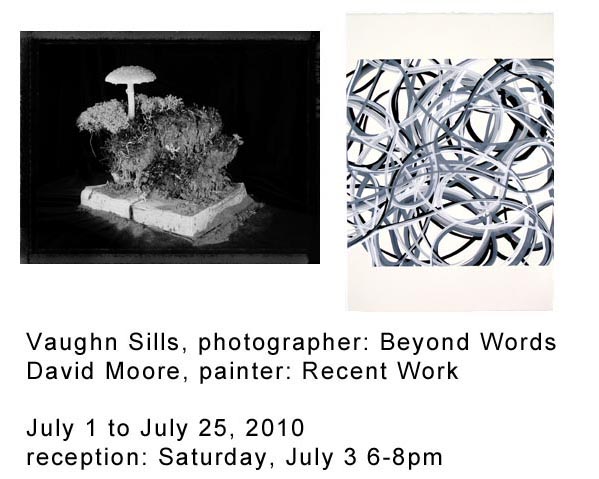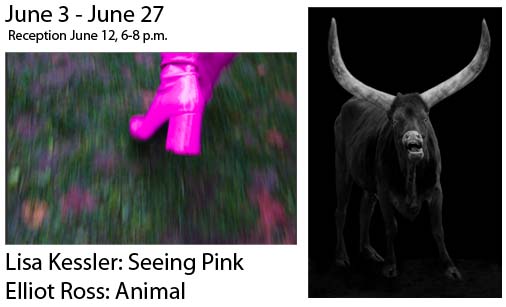August 1 to August 31, 2014
Artists’ Reception, Saturday August 9, 6-8pm
also DINE/ART BeLo3rd
Dima Gavrysh
Andrea Camuto
Portfolio Showcase
PDavid Gardner and Stan Raucher
Dima Gavrysh, Inshallah (God Willing in Arabic)
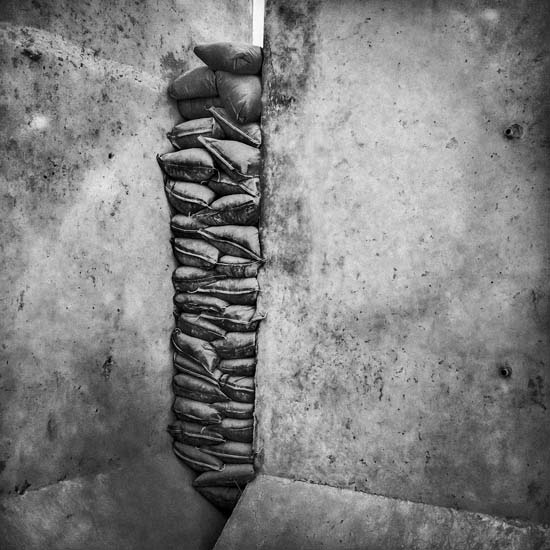 Pasab by Dima Gavrysh
Pasab by Dima Gavrysh
Andrea Camuto, Terrain of Loss: Afghan Exiles in Their Own Land
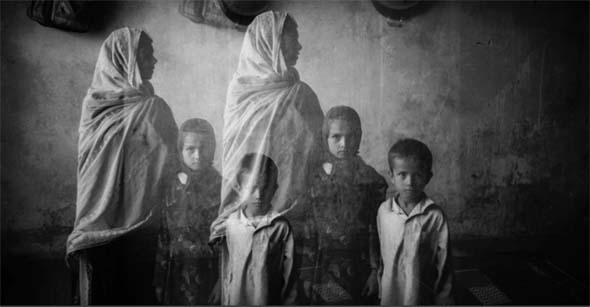 Zia, Shabana and Mirwais by Andrea Camuto
Zia, Shabana and Mirwais by Andrea Camuto
Portfolio Showcase
Theme – The Documentary Project:
Work of Personal, Local, National, International Concerns
David Gardner, Life on Wheels: The New American Nomads

Ralph and Patsy, Campground Hosts, UT by David Gardner
Stan Raucher, Los Israelitas – The New Promised Land

A Sabbath Prayer by Stan Raucher
Dima Gavrysh, Inshallah
 Inshallah (God willing in Arabic) is a project that explores the Soviet and American occupations of Afghanistan, and draws on my childhood fantasies that romanticize the military and intertwine with my past and present personal conflicts.
Inshallah (God willing in Arabic) is a project that explores the Soviet and American occupations of Afghanistan, and draws on my childhood fantasies that romanticize the military and intertwine with my past and present personal conflicts.
As a Ukrainian who was born and raised in the former Soviet Union, this is the second time that I live in a country that is fighting a war in Afghanistan. I create a dark fairytale filled with my fears and dreams, based on my fascination with the army’s strength and order, set on the front lines of what has become America’s longest running war in history. Mesmerized by the complexity of the Afghan chaos, I strive to better comprehend my personal relationship to these wars: two empires, two mentalities, same battlefield, twelve years apart. (photo: Tangi by Dima Gavrysh)
bio: Since 2009, visual artist Dima Gavrysh has been exploring the American war in Afghanistan through video installation, photography, appropriated imagery and data visualization. In addition to the Davis Orton Gallery, Dima has exhibited his work in solo and featured shows at Circuit Gallery, Toronto, Pictura Gallery, Bloomington IN and (upcoming) Blue Sky Gallery, Portland OR. Among his awards are Tokyo International Photography Festival/winner, Magenta Flash Forward/winner, PDN’s 30 and Critical Mass Top 50. His book Inshallah is forthcoming from Kehrer Verlag (2014).
For the past 12 years Dima has worked as a documentary photographer with major publications and news agencies such as Associated Press, Bloomberg News and Agence France-Presse. He has also worked on multiple projects around the globe, including collaborations with Doctors Without Borders and the United Nations Population Fund and numerous recent embeds with the US Army in Afghanistan. Dima’s work has appeared in a variety of international publications, including New York Times, Stern, Paris Match and Time.
Many thanks to Circuit Gallery in Toronto and Claire Sykes, Partner, for all the invaluable assistance in a) bringing Inshallah from Canada to the US and b) curating this collection of Gavrysh’s photographs. Their selections from the greater series make for a very powerful exhibition.
Andrea Camuto
Terrain of Loss: Afghan Exiles in Their Own Land
 In 2005, I made the first of a series of trips to Afghanistan, where I began photographing refugees in makeshift living quarters in the war-ravaged remains of the former Russian government buildings of Kabul. Many families had been in exile for years, having fled the Soviet occupation of the 1980s, the internecine Mujahideen wars of the 1990s when Kabul was under siege, or the Taliban. In 2002, Afghans began returning to their homeland from Pakistan and Iran after the fall of the Taliban. Nearly everyone I met expressed great relief and looked forward to peace and a new start.
In 2005, I made the first of a series of trips to Afghanistan, where I began photographing refugees in makeshift living quarters in the war-ravaged remains of the former Russian government buildings of Kabul. Many families had been in exile for years, having fled the Soviet occupation of the 1980s, the internecine Mujahideen wars of the 1990s when Kabul was under siege, or the Taliban. In 2002, Afghans began returning to their homeland from Pakistan and Iran after the fall of the Taliban. Nearly everyone I met expressed great relief and looked forward to peace and a new start.
By 2007, an estimated 4.8 million refugees had come back to Afghanistan. Most could not afford the high rents of Kabul, so they settled where they could, hoping to find work that often never materialized. Feeling great compassion for their struggles, I was compelled to return several times, most recently in 2009. As my ties with these families deepened, I followed them into such places as the women’s hospital and the women’s prison. Each trip furthered my understanding of the political and social complexities of Afghan culture. Entrenched attitudes, coupled with rampant illiteracy, create the oppressive conditions under which Afghan women are forced to live.
In these photographs I call attention to these ordinary Afghans, who go unnoticed and unrecorded in the larger narrative of the conflict in Afghanistan today.
bio: A graduate of the International Center of Photography, Andrea Camuto is a New York City-based photographer whose work explores issues of women and social justice in Afghanistan, Burma, Cambodia, India and Mali. She is the recipient of awards and fellowships from the International Center of Photography, Global Fund for Children, the Wilmer Shields Council on Foundations, Photo District News, Critical Mass- Photo Lucida, and Jacob Riis. Andrea has had solo gallery and museum shows in New York City and San Francisco and contributed to numerous group shows internationally. Her first book, Terrain of Loss, was published by El Leon Literary Arts in 2012 and was a winner in the 2013 PDN Photography Annual. She is currently working on a series of portraits in Haiti.
Selected through our Portfolio Showcase
Call for Work, the gallery is also featuring
portfolios by David Gardner and Stan Raucher.
Honorable Mention:
John Cessna, Lydia Harris, David Hiley, Emma Horning,
Jonah Markowitz, Jérémy Saint-Peyre, Arielle Simmons
David Gardner, Life on Wheels: The New American Nomads
 David Gardner looks at those Americans who have willfully traded traditional lifestyles of home and property for a nomadic existence of full-time life on the road in recreational vehicles. Known as “full-timers”, they are most often retired, but some do still work from their RV’s – using the advantage of mobility to increase flexibility and improve prospects.Gardner finds their fierce independence and positivity toward life a compelling argument to the porch and rocking chair. Photographing them in the environment with their rigs – sometimes traveling with them for extended periods – he has a unique look into a lifestyle that breaks down traditional notions of home and retirement. This journey with them has brought him to unexpected realizations of how the older generation has adapted, evolved and embraced the world around them. “It has changed my attitude of who and what I might become as I age.” (above: Beverly, Solo Traveler, AZ by David Gardner)
David Gardner looks at those Americans who have willfully traded traditional lifestyles of home and property for a nomadic existence of full-time life on the road in recreational vehicles. Known as “full-timers”, they are most often retired, but some do still work from their RV’s – using the advantage of mobility to increase flexibility and improve prospects.Gardner finds their fierce independence and positivity toward life a compelling argument to the porch and rocking chair. Photographing them in the environment with their rigs – sometimes traveling with them for extended periods – he has a unique look into a lifestyle that breaks down traditional notions of home and retirement. This journey with them has brought him to unexpected realizations of how the older generation has adapted, evolved and embraced the world around them. “It has changed my attitude of who and what I might become as I age.” (above: Beverly, Solo Traveler, AZ by David Gardner)
Bio: David Gardner’s photographs have appeared in group shows at the Fort Wayne Museum of Art, Griffin Museum of Photography, 4×5 Gallery in San Francisco and Wallspace Gallery’s New Directions showcase, Beautiful My Desire in Santa Barbara, CA. He was a featured artist in Take Me Away, sponsored by the San Francisco Arts Commission and received the 2013 Contemporary Image Maker micro-grant from Photomedia Center. Gardner’s work was the featured portfolio in Society for Photographic Education’s journal, exposure and has appeared in Photomedia Center’s publication Insight Magazine. Online, his photographs have been featured on Tone-Lit, Light Leaked, F-Stop Magazine, and aCurator, among others.
Stan Raucher, Los Israelitas – The New Promised Land
 A lengthy journey down the Amazon River leads to a remarkable location that hearkens back to Biblical times. There, in small agricultural communities scattered along the banks of the river, live Los Israelitas, an Evangelical group formed by Ezequiel Gamonal in Lima, Peru, in 1963. This sect blends the beliefs of end-of-days Christian sects with the pageantry of Hollywood cinema. Gamonal, a village shoemaker from southern Peru who enjoyed the movies of Cecil B. DeMille, converted from Catholic to Seventh-day Adventist in the 1950s. Several years later, Gamonal declared that he had been chosen by God to inaugurate the new Israel, and he proclaimed the Amazon rain forest to be the new Promised Land. He formed his own church and many of his followers left their homes throughout Peru to colonize these remote territories and begin a new way of life.
A lengthy journey down the Amazon River leads to a remarkable location that hearkens back to Biblical times. There, in small agricultural communities scattered along the banks of the river, live Los Israelitas, an Evangelical group formed by Ezequiel Gamonal in Lima, Peru, in 1963. This sect blends the beliefs of end-of-days Christian sects with the pageantry of Hollywood cinema. Gamonal, a village shoemaker from southern Peru who enjoyed the movies of Cecil B. DeMille, converted from Catholic to Seventh-day Adventist in the 1950s. Several years later, Gamonal declared that he had been chosen by God to inaugurate the new Israel, and he proclaimed the Amazon rain forest to be the new Promised Land. He formed his own church and many of his followers left their homes throughout Peru to colonize these remote territories and begin a new way of life.
The beliefs of Los Israelitas reflect early Christianity before the time of Constantine. Using their own version of the bible, they follow many of the laws detailed in the Old Testament. They observe the Sabbath on Saturday. Their sanctuaries contain large posters of the Ten Commandments with a small ark at the front of the building. Men do not cut their hair or beards, and women and girls cover their hair with headdresses. They reject many Catholic doctrines and traditions, so there are no crosses or representation of Christ, Mary or Saints to be found anywhere.
(above: Welcoming the Congregation by Stan Raucher)
Bio: Stan Raucher’s work has been shown in eighteen solo exhibits and over sixty juried group exhibitions. He was a CDS/Honickman First book Prize in Photography finalist in 2012 for his Metro series and a Critical Mass finalist in 2012 and 2013. He was featured in LensWork #97 with an interview and his Return to New York series. He was highlighted in Adore Noir magazine #10 with his Avoid Naples! Series. Raucher’s work has also been published in F-Stop Magazine, Camera Arts magazine and Shots magazine. Most recently, he received an Excellence Award in the 2012 Black & White Magazine Portfolio Competition.
June 27 to July 27, 2014
Opening Reception, Saturday June 28, 6-8pm
also DINE/ART BeLo3rd
Mary Kocol
Linda Stillman
Portfolio Showcase
Patricia Barry Levy & Linda Morrow
Mary Kocol, photography
Ice Gardens

Orange Roses Floating by Mary Kocol
Linda Stillman, flower stain drawings
Floribunda

Color Study 1: flower petal stain on paper, 10″ x 7″ by Linda Stillman
Portfolio Showcase
Patricia Barry Levy, Adaptations
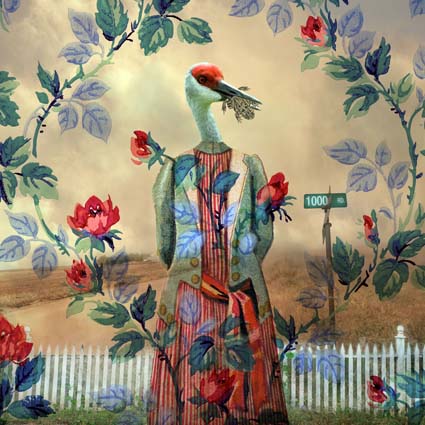
Patricia Barry Levy, SavvyCrane
Linda Morrow, Luminous Bloom

Calla 3 by Linda Morrow
Mary Kocol, Ice Garden
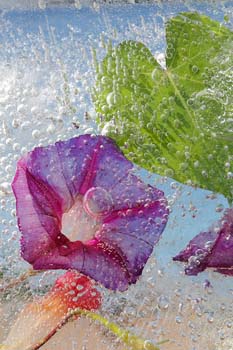
Drawing upon themes of the garden, landscape, and the ephemeral, Mary Kocol creates botanical ice tablets from gardens of friends, family, and her own. The blossoms are frozen into ice and photographed in sunlight to become fanciful and ethereal constructions. Blooms and ice are temporary; the photograph becomes the permanent art object – the record that they once briefly existed.
The need for hands-on creating inspired Kocol to build this series of ice sculptures. While the water turns into ice, the plants inside drift and float before freezing into place. She doesn’t know what the final result will look like until the sculpture is held up to sunlight. Then the unexpected details are revealed. Sunlight brings radiance to the photograph, lighting up the ice and frozen blooms like shimmering jewels. Ice is depicted in a way that we’re not used to seeing it: with sunlight beaming through, showing off its intricate details of fissures and effervescence. (above: Morning Glory Bubble by Mary Kocol)
Bio Mary Kocol is a fine art and editorial photographer based in Boston. Recent one person shows include: Gallery Naga, Boston and Julia Margaret Cameron Museum, Isle of Wight, England UK. Kocol’s work is in the collection of J. Paul Getty Museum, Los Angeles County Museum of Art, Museum of Fine Art, Boston; Museum of Modern Art, New York City; San Francisco Museum of Modern Art and Fidelity Investments. She’s a recipient of the Guggenheim Fellowship and several Massachusetts Local Cultural Council grants. Editorial clients include The New York Times Magazine, Boston Magazine, and Doubleday.
Linda Stillman, Floribunda

Linda Stillman’s flower stain drawings, Floribunda invoke the bittersweet idea of the passage of time, change and decay in nature: how plants grow and die and how we try to preserve the memory of their fleeting moments of beauty. Her drawings are made from flower petals, rubbed onto paper, creating traces of their ephemeral color while also containing small remnants of the flowers. Many record what is flowering in her gardens in Hillsdale NY and become a kind of diary or scrapbook. (above: Hillsdale Garden by Linda Stillman)
She is inspired by art forms like color charts, minimal art and folk art and by other artists who have done work with plants. “I like to find relationships between the practice of gardening, flower arranging and landscape design and the practice of drawing.” Sometimes she adds a small area of paint or color pencil to give a benchmark of the color for comparison as the plant pigment inevitably fades.
Bio: Linda Stillman, of Hillsdale NY and New York City, has been featured in solo and group exhibitions in galleries and museums around the country, including Hunter College Art Galleries, the Danforth Museum and the Brooklyn Museum. This summer an installation of her plant stain drawings will be on view in the Dorsky Museum’s exhibition “Worlds of Wonder.” She has been awarded fellowships at the Virginia Center for Creative Arts, the New York Foundation for the Arts Mark Program and the Wave Hill Winter Workshop. Stillman is a graduate of the University of Pennsylvania (BA), the School of Visual Arts and Vermont College of Fine Arts (MFA).
Portfolio Showcase - Flowers, Floral, Flowery
From plant life to life with flowers:
grown, cut, drawn, imprinted, manufactured.
Selected through our Portfolio Showcase Call for Work, the gallery is also featuring outstanding portfolios by Patricia Barry Levy and Linda Morrow
Patricia Barry Levy, Adaptations

The American Great Plains grasslands now rank as one of the most extensively altered ecosystems on Earth. However diminished, the Great Plains are alive with wildlife. The durable presence of so many animals is a tribute to their ability to adapt to our cultivated fields and gardens, fences, roads, and buildings.
Levy creates her photomontages for Adaptations using vintage wallpaper and other found objects, combined with researched and original photographs taken on visits to the Midwest. The clever animal survivors featured are shown incognito in the changed environments they have learned to make their own. Owls, foxes, deer, wild turkey, sandhill cranes, rabbits and robins represent the creatures that return season after season. (left: SavvyFox by Patricia Barry Levy)
bio: Coloradan Patricia Barry Levy has exhibited her images in galleries, art centers and museums including: Garden City Arts KS, Strecker-Nelson Gallery KS, John Jellico Gallery CO, and Joslyn Art Museum NE. Her work is in public and corporate collections including: Children’s Hospital, Denver CO; Joslyn Art Museum, Omaha NE; Denver Art Museum, Denver CO and in Vienna, Austria through the Art in Embassies program. Levy has operated a commercial studio in Denver CO since 1985 where she specializes in people/portraiture for major magazines and corporate publications.
Linda Morrow, Luminous Bloom

Linda Morrow’s Luminous Bloom represents three series: Poppy, Calla and Angel Trumpet, all the result of floral studies she has conducted over the past ten years. Each series is a foray into multiple exposure and its effect on white flowers she brings into her studio to photograph. She works in the dark: a blossom in focus against black velvet, her camera on a tripod, the shutter open for thirty seconds. Using a variety of light sources and moving her subjects around, she experiments until the shutter closes. In her final image, faint lines and shadows, not visible to the eye, appear. “ In time, I realized that the photographs were less about flowers and more about our perceptions of them.” (left: Poppy 222 by Linda Morrow.)
Bio: Linda Morrow’s photographs and artist books can be found in numerous online gallery exhibitions, in private collections, in the Joan Flasch Artist’s Book Collection/Flaxman Library, School of the Art Institute of Chicago, and most recently in LensWork, issue #112, May-June, 2014.
Her interest in photography blossomed in 1994 in a darkroom workshop at Ghost Ranch down the road from Georgia O’Keefe’s former home in New Mexico. From that point on, photography has been a serious pursuit and a priority. In fact, she retired early from teaching college English in order to concentrate more fully on image-making.
May 16 to June 22, 2014
Artists’ Reception, Saturday May 17, 6-8pm
Aline Smithson
Meg Birnbaum
Portfolio Showcase “Dress Up”
Caleb Cole and Susan Copich
Aline Smithson, Arrangement in Green and Black,
Portrait of the Photographer’s Mother
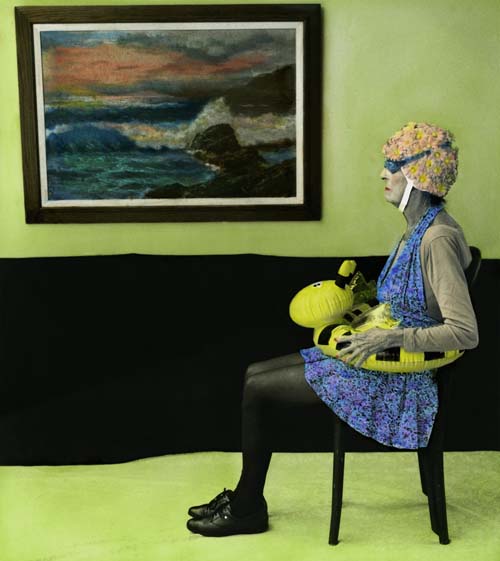
Arrangement #3 by Aline Smithson
Meg Birnbaum, Sisters of the Commonwealth

Tori D’Affair by Meg Birnbaum
Portfolio Showcase
Caleb Cole, Other People’s Clothes

The Last Page by Caleb Cole
Susan Copich, Domestic Bliss

Happy Days by Susan Copich
Aline Smithson, Arrangement in Green and Black,
Portrait of the Photographer’s Mother
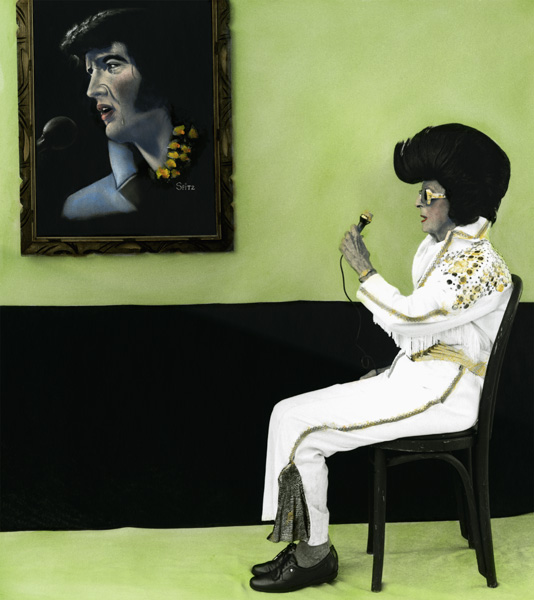
Aline Smithson’s photographic series, Arrangement in Green and Black, incorporates traditional darkroom techniques to which she has added the richness of hand painting. After Whistler’s Arrangement in Grey and Black No.1 (Whistler’s Mother), Smithson has posed her 85 year-old mother in 20 ensembles. Here the viewer can see the work in a historical context; experience Whistler’s simple, yet brilliant formula for the composition; consider the collaborative nature of portraiture, and enjoy the humor within this mother daughter relationship – all at the same time. (above, Arrangement #14 by Aline Smithson)
Bio: Aline Smithson is represented by galleries in the U.S. and Europe; her photographs have been published throughout the world, most recently in the New York Times Lens Blog, “The Pictures Rearrange Mom” by Matt McCann.
Smithson’s work is held in a number of museum collections. She has exhibited widely including solo shows at the Griffin Museum of Photography, the Fort Collins Museum of Contemporary Art, the Lishui Festival in China, the Tagomago Gallery in Barcelona and Paris, and the Wallspace Gallery in Seattle and Santa Barbara. Her photographs have been featured in numerous publications including PDN (cover), the PDN Photo Annual, Communication Arts Photo Annual and Visura, Fraction, Artworks, and Lenswork Extended magazines.
Aline founded and writes the widely read, highly praised blogzine, Lenscratch, that celebrates a different contemporary photographer each day and offers opportunity for exhibition. In 2012, she received the Rising Star Award from the Griffin Museum of Photography for her contributions to the photographic community. She was nominated for The Excellence in Photographic Teaching Award from 2008-2012 and for The Santa Fe Prize in Photography in 2009 by Center.
Meg Birnbaum
Sisters of the Commonwealth
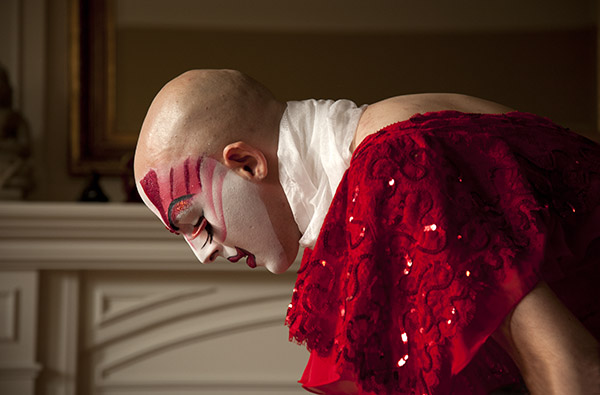
There are more than 3000 Sisters of Perpetual Indulgence worldwide with eighteen Sisters, Novices, Postulates and Aspirants in the Boston area. For over three years Meg Birnbaum has joined them as they walked in Pride Parades; screamed encouragements alongside them at Boston’s annual AIDS Walk; accompanied them to fancy fundraising dinners at city hotels; brought friends to their monthly Drag Bingo charity events and sailed with them while they sold raffle tickets on Boston harbor cruises. The Sisters welcomed Birnbaum into their lives immediately and appointed her their “photo historian”.
“I am amazed while watching as they artfully manifest into “avatars” of social activism with the seemingly simple goal of inspiring acceptance, compassion and the desire to shift intolerant perspectives while raising money – predominately for causes within the LGBT community.” (Frieda B. Fabulous by Meg Birnbaum)
Bio: Meg Birnbaum is a fine art photographer and graphic designer from Massachusetts. She designs catalogs for the Griffin Museum of Photography and is their Director of Communications. Meg has photographs in the permanent collection of The Museum of Fine Arts, Houston (Texas) and the Lishui Museum of Photography (Lishui, China). She has had solo exhibitions in Kobe, Japan, Lishui, China, Hudson, New York and Boston, Massachusetts. In 2009 she was nominated for the Santa Fe Prize for Photography. Her work has been exhibited in many group show around the United States.
Portfolio Showcase “Dress Up”
Selected through our Portfolio Showcase Call for Work, the gallery is also featuring outstanding portfolios by Caleb Cole and Susan Copich
Caleb Cole, Other People’s Clothes

Though Caleb Cole is the physical subject in Other People’s Clothes, these are not traditional self-portraits. Instead, they are a product of Cole’s exploration of private moments of expectation, a visual expression of his experiences stepping into the shoes of the types of people he sees on a daily basis. Each photograph in the series is a constructed scene that begins with an outfit or piece of clothing (either bought, found, or borrowed), then a person he imagines to fill those clothes, and finally a location where that person can play out a silent moment alone. This moment is the time right before something changes, the holding in of a breath and waiting, the preparing of oneself for what is to come. “I try on the transitional moments of others’ lives in order to better understand my own.” (above: The Pink Kitchen by Caleb Cole)
bio: Caleb Cole has exhibited at a variety of national venues, including the deCordova Museum of Art (Lincoln, MA), David Winton Bell Gallery at Brown University (Providence, RI), and Jenkins Johnson Gallery (NYC). He was featured in Boston Magazine (HOME) as an emerging photographer who is “shaking up New England’s visual arts scene.”
Cole is a 2013 Hearst 8×10 Biennial Winner, 2013 and 2010 Magenta Foundation Flash Forward Winner, 2011 St. Botolph Club Foundation Emerging Artist Award winner, 2011 Massachusetts Cultural Council Fellowship Finalist, 2009 Artadia Award winner, and a 2009 Photolucida Critical Mass finalist. He is represented by Gallery Kayafas, Boston.
Susan Copich, Domestic Bliss / Family Life

Susan Copich of Hillsdale NY takes a psychological romp through the funhouse of family life. In Domestic Bliss, American proverbs, idioms and old biblical sayings are the springboard to each dramatic set-up. These sayings help Copich harness her creative impulses and ground them into something old and known.
Copich brings to Domestic Bliss, consciously and otherwise, the experience of her own traverse: from growing up the sixth of seven children in Youngstown, Ohio, to single female living in 1990s San Francisco – radical and free-wheeling, struggling to make the rent – to married mom with two young girls, for a time on Manhattan’s Upper West Side, now the rolling hills of bucolic Columbia County in upstate New York. With the lens as her accomplice, she appropriates moments in the story of family – “my story” – that offer themselves to her in ways that are both dark and humorous. (above: Baggage by Susan Copich)
bio: Susan Copich has had professional careers as a modern dancer and Pilates studio owner, and is currently juggling an acting career along with Family Life, upstate, in Hillsdale NY where she lives with her husband and two daughters.
While her camera has long been her companion, it is only recently that she has begun two large projects, “Domestic Bliss” and “India” and a new career as fine art photographer. She has exhibited work from both series in group shows in New York City and in the Berkshires. Later in 2014 she will have a solo show of “Domestic Bliss” at Umbrella Art in New York City.
April 11 to May 12, 2014
Robert Moran
David Welch
Portfolio Showcase Walter Crump an Andrea Rosenthal
Artists’ Reception, April 12, 6-8pm
& Dine/Art BeLo3rd - restaurant tastings at 10 galleries
Robert Moran, Relics
 Rabbit Ears by Robert Moran
Rabbit Ears by Robert Moran
David Welch, Material World

Shopping Totem by David Welch
Portfolio Showcase Objects: Walter Crump & Andrea Rosenthal
Walter Crump, Still Life

Nautilus Machine by Walter Crump
Andrea Rosenthal, Dark Light

Knitting by Andrea Rosenthal
Robert Moran, Relics
 In Relics, Robert Moran honors our inventive past and saves some of its icons from the trash heap of memory. Here portraits of everyday objects, once relied on and now past their prime, become touchstones of an earlier way of life.
In Relics, Robert Moran honors our inventive past and saves some of its icons from the trash heap of memory. Here portraits of everyday objects, once relied on and now past their prime, become touchstones of an earlier way of life.
Moran photographs each object singly so that the viewer can examine its individual essence. Cracks, scuffs, rust, mending, patches – they all remind us that these objects are a collection of well used, sometimes taken for granted, sometimes loved, cultural artifacts from a different world not so long ago. (above: Underwood by Robert Moran.)
bio Robert Moran is a freelance photographer living in a small coastal town in Maine. Recent solo exhibitions include the Griffin Museum of Photography, Winchester MA,; Byrdie’s Gallery, New Orleans LA;, Magenta Flash Forward Festival, Boston MA; Running With Scissors Gallery, Portland ME. His photographs have appeared in group shows at Panopticon Gallery, Boston MA, New England Photography Biennial 2013, Danforth Museum, Framingham MA; Kodak Gallery, Spiva Center for the Arts, Joplin, MO, and many others throughout the United States. Moran, who has started and run several businesses over the course of twenty years has pursued personal photography projects close to home and on trips through Africa, Asia, South America and, most recently, Anarctica.
David Welsh, Material World
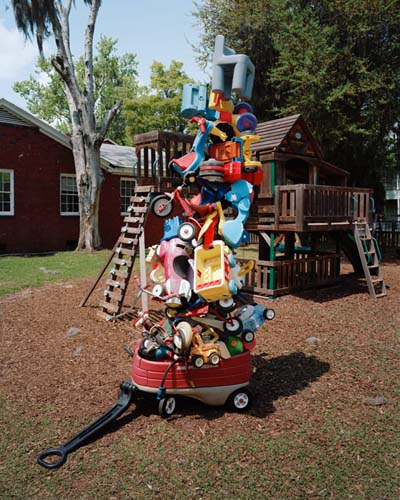 In Material World, David Welch responds to our contemporary consumer milieu with a series of monuments and totems he builds and photographed. With a wink and response to Karl Marx’s assumptions about manufactured objects,Welch treats artifacts of consumer culture as Duchampian Readymades. His constructions, which speak of accumulation and materiality, encourage debate about consumption and the ways in which we feel compelled to consume.
In Material World, David Welch responds to our contemporary consumer milieu with a series of monuments and totems he builds and photographed. With a wink and response to Karl Marx’s assumptions about manufactured objects,Welch treats artifacts of consumer culture as Duchampian Readymades. His constructions, which speak of accumulation and materiality, encourage debate about consumption and the ways in which we feel compelled to consume.
bio: David Welch is a fine art photographer based on Martha’s Vineyard. His work explores social issues, using large-format photography steeped in conceptual influences from art history and economic theory. His photographs have been widely published and exhibited both nationally and abroad. David was named one of the Magenta Foundation’s Flash Forward winners for 2012 and in 2011 he was selected as one of Photolucida’s Critical Mass top 50 photographers. David is a recent graduate of the Savannah College of Art and Design, where he earned his MFA in photography. He lives on the island with his partner Trina and children Camden & Declan.
Portfolio Showcase “Object(s)”
Selected through our Portfolio Showcase Call for Work, the gallery is also featuring outstanding portfolios by Walter Crump and Andrea Rosenthal
Walter Crump “Still Life”

Walter Crump’s still lifes reveal his attraction to the detritus our culture leaves behind. He pays homage to the discarded mechanisms and withered debris of another time, resurrecting them and giving them life as art. He test our perception of reality by creating images that appear as luminous wrecks of a dubious age, blending fiction and reality.
In the past, Crump modified his darkroom prints with bleaches, fixers and toners; now he treats his digital prints comparably shooting through prepared transparent and translucent media and building an image with multiple layers. He experiments with “controlled accidents” in his photographs where consequences beyond his control play an important part in determining the final image.
bio: Walter Crump’s work is held in the collections of, among others, the New Mexico History Museum; DeCordova Museum; Museum of the History of Photography, Krakow, Poland; Philadelphia Museum of Art; National Museum of American Art (Smithsonian) and National Museum of Fine Art, Hanoi VN. Recent exhibits include Pandemonium, The Museum of Photography and the Moving Image, New York; Going Forward, Looking Back, Practicing Historic Photographic Processes, a New England traveling exhibition; PHOTONOLA, Carol Robinson Gallery, New Orleans.
Crump who has exhibited and lectured widely about pinhole photography was co-curator of Seven Pinhole Photographers from Poland (traveling exhibition). He is a teacher at the Commonwealth School, Boston. He has also taught at the National College of Art, Lahore, Pakistan as a Fulbright Scholar and at the Mississippi Art Colony as a guest instructor.
Andrea Rosenthal, Dark Light

In Dark Light, Andrea Rosenthal responds to the loss of five dear friends by exploring light as it came through the windows of her home and touched everyday objects. Her photographs, which alternate between abstraction and realism, considers light both as “grief-like, finding its way into every recess” and as a metaphor for the healing process, “the way through which acute pain eventually subsides and transforms itself into a warm memory of loved ones lost.”
bio: Andrea Rosenthal’s photographs have been exhibited in solo and featured shows at the Griffin Museum of Photography; Newbury College Gallery; Brookline Arts Center (Brookline, MA); Gallery of Village Arts (Bellingham, WA); and Calumet Photographic (Cambridge, MA). Her work has appeared in numerous juried exhibitions, most recently, Cambridge Art Association’s “Twelfth National Prize Show;” “Photography Now”, the 2012 National Exhibition at the Griffin Museum; and “Photobook 2011” at the Davis-Orton Gallery, Hudson NY.
Rosenthal has received a grant from the Massachusetts Cultural Council; and awards including: Award of Merit, “Media Mix — National Juried Exhibition,” South Shore Art Center and International Photography Awards (Lucies) Honorable Mention, 2005 and 2004. Her book “Stations of the Scale: A Photographic Memory About Food and Suffering” (Lulu) was published in 2010. Rosenthal conceived of and curated “Women 360,” an exhibition that featured the work of eight artists at the South Shore Art Center, Cohasset MA.
April 5, 2014 – 5 to 8 pm
Davis Orton Editions Launch Party
and two day Pop-Up Store: April 5 to April 6, noon to 6pm
davisortoneditions.com

(Above, sample of artists – Top to bottom, left to right) Andi Schreiber, Arlene Becker, Elliot Ross, Ernie Button, Suzanne Gonsalez-Smith, Susan Bowen, Judith Black, Kay Kenny, Ruth Wezell, Meg Birnbaum, Richard Edelman, Stephen Strom, Michael Hunold, Kent Krugh, Sarah Sterling, Lynette Miller, Dan Region, Terri Garland, Miska Drascoczy, Jim Nickelson, Dianne Yudelson
Thank You to the Exhibiting Artists, 2013
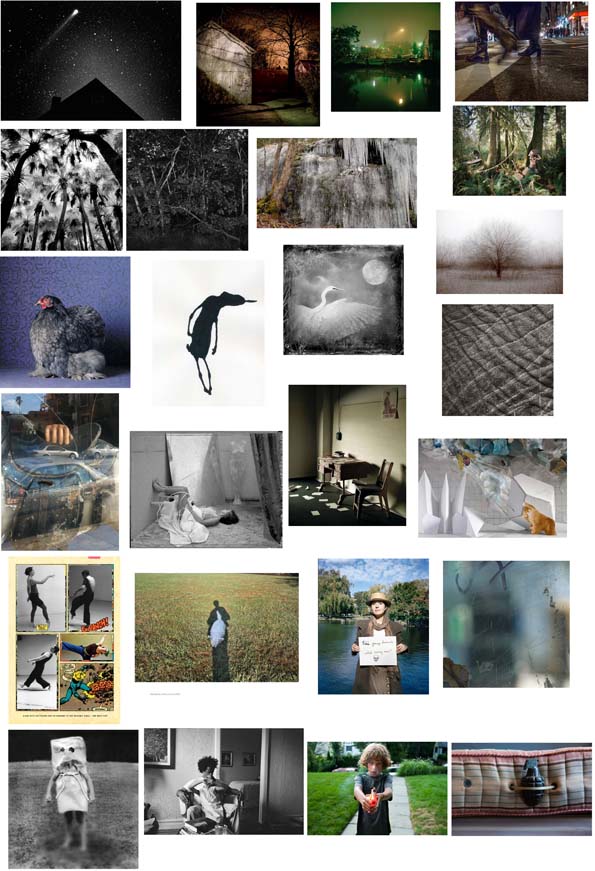
Left to Right, Top to Bottom: Stephen DiRado, Bob Avakian, Miska Draskoczy, Susan Bowen, Benjamin Dimmitt, Debi Milligan, Keiko Sono, Anna Beeke, Kent Krugh (below), Tamara Staples, Rebecca Doughty, Dianne Yudelson, Jim Nickelson, Janet Sternburg, Barbara Kilpatrick, Pavel Romaniko, James Bellucci, Ellen Feldman, Charlee Brodsky, Stefan Petranek, Tony Bowen, Carla Shapiro, Kate Sterlin, Andi Schreiber, Shane Welch
November 15 to December 22, 2013
PHOTOBOOK 2013

20 PhotoBooks in Exhibition
Photographs by Four Best of Show (bos)
Steve Anderson, Dorothee Deiss,
Andy Mattern, Ellen Wallenstein
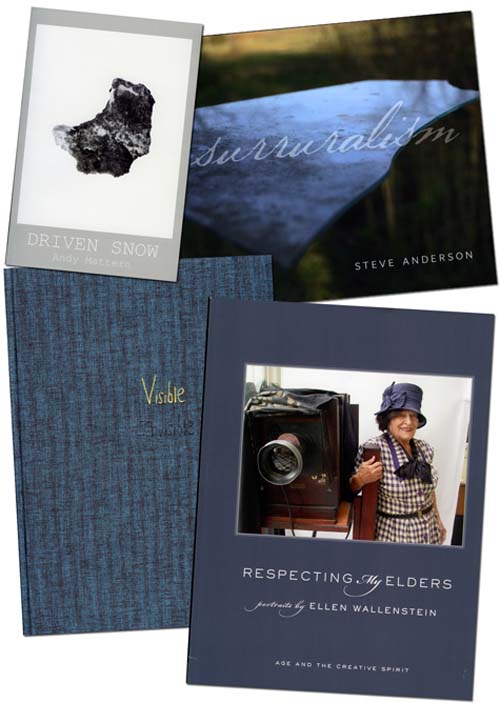
Twenty PHOTOBOOKS

Surruralism, Steve Anderson (bos)
Moving With the Seasons: Portrait of a Mongolian Family, Liza Carter
A Minha Casa e Onde Estas (My Home is Where You Are), Filipe Casaca
Visible Invisible, Dorothee Deiss (bos)
Rivington, Carlos Loret de Mola
Can You Dig It? A Chromatic Series of Floral Arrangements, Melissa Eder
All the Girls, Erica Flood
Nihil Scitur, José M. Gómez-Ros
Postcards From Zero Hour, Michael Hunold
Web of Uncertainty, Irene Imfeld
We Buy Gold, Nikki Johnson
PISS, David Lykes Keenan
Kenwood Ave Adam Long
Driven Snow, Andy Mattern (bos)
Body Light: Passages in a Relationship, Dan McCormack
The Middle of Nowhere, Thomas Pickarski
La Dolce Vista, Betty Press and Philippa Stannard
Columbus Day, Mireille Ribière
Sastriagraphs, Isabelle Sastre
Respecting My Elders – Age and the Creative Spirit, Ellen Wallenstein (bos)
October 11 to November 10, 2013
Reception: Saturday, October 12, 2013 6-8 pm
also ARTSWALK
Carla Shapiro
Kate Sterlin
portfolio showcase Andi Schreiber & Shane Welch
Carla Shapiro, Memory and Longing
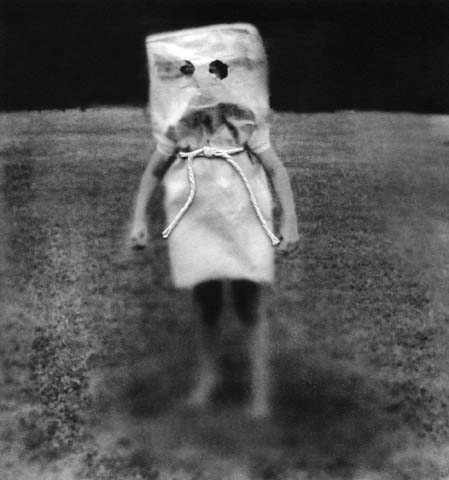
Halloween, Platinum/Palladium Print and mixed media by Carla Shapiro
Kate Sterlin, Family
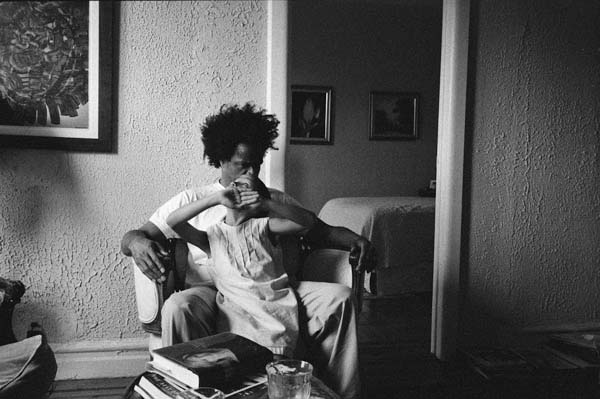
“Marc and Zsela in Chair, Brooklyn 2004″ from Family by Kate Sterlin
Portfolio Showcase Andi Schreiber and Shane Welch

“Summer’s Idyl” by Andi Schreiber

“Security” by Shane Welch
Carla Shapiro, Memory and Longing
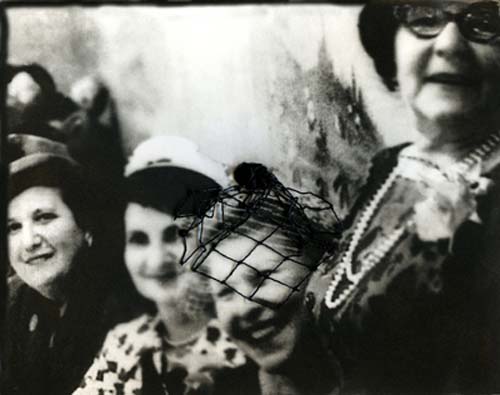
As a photographer I have taken countless pictures, but for this body of work I have been purchasing the photographs of others. Combing through the seemingly endless archives of forgotten and unwanted family snapshots at flea markets, yard sales, and online, I find that certain images have an unexpected personal resonance—an emotional connection that draws me to them. The familiarity of universal themes elicits my own recollections and longings. The discovery of these particular old snapshots becomes the source of a deep exploration of the nature of memory and of image-making itself.
I find the experience of searching for the images utterly pleasurable as I glimpse the lives of others. The snapshots that I ultimately choose impact me in a subtle, yet profound way, evoking feelings so real that it sometimes seems as if the picture could actually be of my siblings, my parents or me.
I scan these photos and alter them digitally. The alterations seem to mirror the act of remembering itself— some elements remain crystal clear, others fade to an indeterminate blur. I enlarge the images and print them in platinum/palladium, a beautiful 19th century technique that yields classic results. Finally, I add paper, fabric, and bric-a-brac to their surfaces to create a collaged effect. Throughout the process of working with these images, I experience memory, longing, and joy. The photos, while easily identifiable as remnants from another era, become timeless. (above: Lady With Veil by Carla Shapiro)
bio Carla Shapiro of upstate New York has been a visual artist working in photography for over twenty-five years. Her portfolios include photographic, mixed media and multi-media explorations about woman, aging, longing, 9/11, beauty and decay.
Carla’s work has been shown nationally and internationally. She has received many awards including The Center for Photography at Woodstock, The Golden Light Awards at Maine Photographic Workshops, New Jersey Council on the Arts, New York Foundation for the Arts, (2 times), and The O’Conner Foundation. She has attended many artists’ colonies including The MacDowell Colony (6 times) and Yaddo.
Carla teaches graduate school at Pratt Institute.
Kate Sterlin, Family
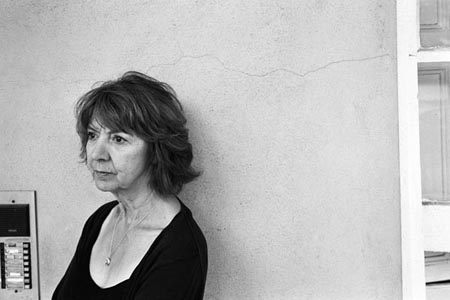
Artist Kate Sterlin is a visual storyteller.
“Created by choice or necessity, love or obligation family, is sharing a life. At the beginning, middle, and end it is shapeless and unplanned. There is an intimacy of shared time and space – moments inside of moments. If you get close enough, remain quiet enough, or stay long enough you can see them and be apart of them. Growing up inside my own family, raising my children, spending time at an orphanage and a nursing home I found these moments.” (Jenny, Brooklyn 2006 from Family by Kate Sterlin)
bio: Kate Sterlin is a New York based artist living in Hudson NY. For twenty-five years she has been creating a body of work in black and white which includes documentary street photography and intimate portraiture. Primarily self-taught, among those who have influenced her work is Mary Ellen Mark with whom she studied in both New York and Mexico.
Recent solo exhibitions include Portrait of a Landscape, Basilica Gallery Hudson, NY and FINDINGS; A Waking Dream, Vernacular Press Gallery, NYC. Her work has also been included in group shows: Of Light and Dark, Hudson Opera House Hudson, NY, Hudson Independent Artist Trail, Henry Hudson Studios, Hudson, NY ; Beyond The Fourth wall, Sensei Gallery, NYC and Night Junction Semiotics: 21, Triple Crown lounge, Brooklyn NY.
Portfolio Showcase “Family Pictures”
Selected through our Portfolio Showcase Call for Work, the gallery is also featuring outstanding portfolios by Andi Schreiber and Shane Welch
Andi Schreiber, “WonderLust”

“My photographs are small rewards; sublime bits risen from the everyday. I live here.“
Family life, while blossoming with promise can feel like slow suffocation. WonderLust is Andi Schreiber’s visceral response to her immediate surroundings – a world where she is an insider and outsider at once. Her photographs which include the intimate, the mundane and the artifice of modern life are both pieces of her world and manifestations of inner life. (above: Bombed by Andi Schreiber)
bio: Andi Schreiber is a documentary artist based in Westchester County, New York. Her images have been featured in galleries around the US selected by jurors including, among others: Caleb Cole, Aline Smithson, and Chris Verene and have appeared in online galleries and magazines including F-Stop Magazine Portfolio Issue, Photo/arts Magazine, and the influential photoblog,Lenscratch.. She is a finalist in Critical Mass 2013 and Review Santa Fe, 2013. Schreiber is photographer, picture editor and designer for Eye Candy Editions, Scarsdale, NY.
Shane Welch “Home”
 On January 17, 2010 documentary photographer Shane Welch’s younger brother left home without word or warning. Most of his clothes and possessions remained, and his room still appeared to be lived in. Months went by before anyone, friends or family, knew where he was or that he was even safe. “His notes, clothes, poetry, journal, miscellaneous objects and the images on his wall were nearly all we had to remember him by.” The events and issues surrounding and leading up to his sudden disappearance inspired this series of photographs. (above: Workspace by Shane Welch)
On January 17, 2010 documentary photographer Shane Welch’s younger brother left home without word or warning. Most of his clothes and possessions remained, and his room still appeared to be lived in. Months went by before anyone, friends or family, knew where he was or that he was even safe. “His notes, clothes, poetry, journal, miscellaneous objects and the images on his wall were nearly all we had to remember him by.” The events and issues surrounding and leading up to his sudden disappearance inspired this series of photographs. (above: Workspace by Shane Welch)
bio: Chicago-based photographer Shane Welch’s images have appeared in group exhibitions at Catherine Edelman Gallery, Chcago, Slideluck Potshow Chicago, the Center for Photographic Arts, Milwawkee WI, Columbia College Gallery, Chicago, the San Diego Natural History Museum and online at SocialDocumentary.net. His personal and commercial work has been featured in numerous online and traditional magazines.
September 6 to October 6, 2013
Reception: Saturday, September 7, 2013 6-8 pm
also 5 Gallery Stroll BeLo3rd
Charlee Brodsky
Ellen Feldman
portfolio showcase Stefan Petranek & Tony Bowen
Charlee Brodsky, Monster and Other Tales
Photography and artist books

From “Monster” (Hateful day when I received life) by Charlee Brodsky
Ellen Feldman, The Dancer as The Invisible Girl
Photography and comic book

From “The Dancer as the Invisible Girl,” Untitled 11 by Ellen Feldman
Portfolio Showcase “Word & Image” Stefan Petranek and Tony Bowen

Jade, Archeology Student from The Genetic Portrait Project by Stefan Petranek

Whitechapel – call me from Scratch: The Urban Palimpsests by Tony Bowen
Charlee Brodsky, Monster and Other Tales

… I didn’t start out as a dog photographer When asked to describe what I do, I reply, I am a documentary/fine art photographer; my work deals with social issues and beauty. I have worked on subjects ranging from breast cancer, to mental health, to the decline of a neighborhood steel community, to urban life in India.
Four years ago, as I was transitioning from analog to digital photography, I used my dogs to become comfortable with my new camera, software, and inkjet printing. As subjects, Sam and Max were superb. They never said no to photo shoots cloaked as walks, and responded well to direction when bribed with treats. With a stack of new prints, I shared this young work with colleagues. One earnestly asked, “But what have you really been up to?” Had I lost my marbles?
As I continued to probe what I wanted this work to be, I started linking photographs with photographs, and then added words. These words are not mine, however. My collaborators in these works—Herman Hesse, Mary Shelley, Fyodor Dostoyevsky, to name a few—are known for their insights into the human psyche, the beauty of their language, and their deep understanding of human heroics as well as human foibles.
Through artist books and prints I present these stories that grasp life, in humor, drama, and complexity, retold by a little white dog who looks like he needs a grooming. What started as a fun way to become more familiar with digital photography has become a passion. (above: From Monster ["Why did you form a monster so hideous?"] by Charlee Brodsky)
bio Charlee Brodsky is a fine art documentary photographer and a professor of photography at Carnegie Mellon University. In 2012 she was chosen as Pittsburgh’s Artist of the Year, an award given annually by the Pittsburgh Center for the Arts.
Her books include: From Mall Town to Mill Town, with writers Jim Daniels and Jane McCafferty; I Thought I Could Fly… Portraits of Anguish, Compulsion, and Despair; Street, which won the Tillie Olsen Award in 2007; Knowing Stephanie, which was one of only eight books accepted in the illustrated book category of the American Association of University Presses’ outstanding books of 2004 exhibition; A Town Without Steel, Envisioning Homestead, with anthropologist Judith Modell. In 2002 Brodsky received a regional Emmy with three others for her work on Stephanie, a documentary video.
Brodsky has also curated exhibitions dealing with the history of photography in Western Pennsylvania. This work culminated in Pittsburgh Revealed curated with Linda Benedict-Jones, a major exhibition at the Carnegie Museum of Art in 1997, accompanied by the book of the same name. She exhibits her work nationally and regionally, has been honored with Pennsylvania Arts Fellowships and other awards. Brodsky received a Masters of Fine Art from Yale University School of Art, and a Bachelor of Arts from Sarah Lawrence College.
Ellen Feldman, The Dancer as The Invisible Girl
1 Dancer + 1 Comic book + 1 Photographer =
The Dancer as the Invisible Girl
 The Dancer as the Invisible Girl is a photo/comic book and a series of 20×30-inch prints. It places images of a modern dancer I’ve photographed for years into frames of a Marvel Fantastic Four (FF) comic book. The main character splits into FF’s Susan Richards, her alter ego Invisible Girl, and dancer Nicole Pierce.
The Dancer as the Invisible Girl is a photo/comic book and a series of 20×30-inch prints. It places images of a modern dancer I’ve photographed for years into frames of a Marvel Fantastic Four (FF) comic book. The main character splits into FF’s Susan Richards, her alter ego Invisible Girl, and dancer Nicole Pierce.
Comic heroes are all about gesture and frozen motion. Dancers seem superhuman as they twist, stretch, and bend their bodies. In both media, meaning derives from gesture and illusion of motion.
Through the comic form I explore how movement is limited and fragmented by the frame. The primacy of the frame links comics to photography. Comic artists and photographers love cramming things into a frame, cutting the body off mid-limb, or keeping lots of space around the figure.
It is a paradox that invisibility, generally a mark of powerlessness, is the super-human quality for the only female FF. As a street photographer, I well understand the paradox of power that derives from invisibility. (From “The Invisible Girl,” Untiltled 13 by Ellen Feldman)
bio: Ellen Feldman is a fine arts photographer. Her on-going emphasis is on photographs of spontaneity, reflected in street photography and her long-term project photographing a dancer. Recent work includes a series of images of toy characters in urban settings, and three books: The Dancer as the Invisible Girl (photo/comic), Les Mystères de Paris/Paris Mysteries (street photos, Paris) and A Week in Prague: Wall People / Street People.
Her photographs have appeared in solo and juried exhibitions at the Griffin Museum of Photography (Winchester, MA) satellite gallery; Davis/Orton Gallery, Hudson, NY; South Shore Art Center, Cohasset, MA; Photographic Resource Center, Boston University; and Danforth Museum of Art, Framingham, MA.
She has studied photography at the Maine Photographic Workshops, Fine Arts Work Center of Provincetown, and the Photography Atelier, Lesley University. She holds a Ph.D. in Cinema Studies from New York University.
Portfolio Showcase “Word and Image”
Selected through our Portfolio Showcase Call for Work, the gallery is also featuring outstanding portfolios by Stefan Petranek and Tony Bowen
Stefan Petranek “The Genetic Portrait Project”
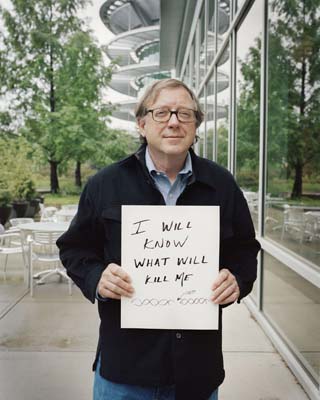 From the food we consume to the medical advice we receive, advances in genetics and genomics are being translated into things that influence a multitude of practical, social, and personal choices we make. In “The Genetic Portrait Project,” Stefan Petranek gives voice to how Americans from all walks of life perceive these rapidly expanding fields by photographing participants alongside their response to the question:
From the food we consume to the medical advice we receive, advances in genetics and genomics are being translated into things that influence a multitude of practical, social, and personal choices we make. In “The Genetic Portrait Project,” Stefan Petranek gives voice to how Americans from all walks of life perceive these rapidly expanding fields by photographing participants alongside their response to the question:
“How do you think genetic research will affect the future?”
Petranek presents a diverse range of American sentiment, from scientists, artists and thinkers with a deep understanding of genetics to average Americans off the street. Taken together his goal is to create a visual record of how Americans are grappling with an area of science that is on the cusp of changing how we all think about life and our power to influence it in the most fundamental way. (Above: Steven, Magazine Editor by Stefan Petranek)
bio: Employing photography, video and sculptural forms, Stefan Petranek explores the subtleties of how we perceive nature through the lens of contemporary culture, especially in response to technological and scientific advances. Petranek’s work has been exhibited widely in the U.S., as well as in Canada, China, and Bulgaria. In 2012, his Genetic Portrait Project was exhibited at the Rochester Contemporary Arts Center. His video and photographic work were also included in Beyond/In Western New York 2010 at CEPA Gallery and his Fossils series was included in the book Water published in 2009 by Alphabet City Media and MIT Press. In Toronto, he is represented by Circuit Gallery.
Tony Bowen “Scratch: Urban Palimpsests”
 Tony Bowen’s (ongoing) body of photographs explores found glass surfaces in various locations in London and Sussex. Over time echoes of various narratives emerge, combining natural marks: detritus, moisture, weathering and deliberate ones: a tender and intimate declaration, a violent outburst, a confessional message, an incoherent gesture reminiscent of some kind of primal automatism.
Tony Bowen’s (ongoing) body of photographs explores found glass surfaces in various locations in London and Sussex. Over time echoes of various narratives emerge, combining natural marks: detritus, moisture, weathering and deliberate ones: a tender and intimate declaration, a violent outburst, a confessional message, an incoherent gesture reminiscent of some kind of primal automatism.
“I am fascinated by the rawness, the ambiguity and the contexts of these natural palimpsests. Light reveals a mysterious calligraphy and trigger a sense of forensic curiosity.” At their best, two or more incidents combine to offer unintended juxtapositions, interpretations and potential meanings. Bowen’s work encourages exploration of the corners and recesses of our immediate environments – to see the richness and beauty found in the banal; the ordinary; the present, and to find new ways of looking at landscape. (Above: East Sussex Regret by Tony Bowen)
bio: Photographer Tony Bowen of Brighton, England divides his time between is personal projects and his work as an art and design educator. “Scratch – Urban Palimpsests” was shown at DPM Images in Brighton as part of Brighton Photo Fringe in October 2012 and work from the series has been shown in the Open House programme in Brighton; Brick Lane Gallery’s “Photography Now” show (London, Feb 2013) and the on-line “forexample.org” visual arts resource.
In the US, Bowen was included in the “Art of Photography Show 2012″ at the San Diego Institute of Art (California) and was awarded an honourable mention in the 2012 Los Angeles International Photography Awards (California). “Scratch” photographs have been presented at: Dark Room Gallery, Vermont; Black Box Gallery, Portland, Oregon; and the Kiernan Gallery, Lexington, Virginia. In 2013, images from “Scratch” will be featured in the publication, MANiFEST, Creative Research Gallery and Drawing Center, Cincinnati OH and in the 58th edition of F-Stop Magazine.
August 2 to September 1, 2013
Janet Sternburg
Barbara Kilpatrick
portfolio showcase Pavel Romaniko and James Bellucci
Janet Sternburg, PASSAGE
 LAYING ON OF HAND by Janet Sternburg
LAYING ON OF HAND by Janet Sternburg
Barbara Kilpatrick, Performance for Camera and Imaginary Audience
 Venus Hum 31 by Barbara Kilpatrick
Venus Hum 31 by Barbara Kilpatrick
Portfolio Showcase “Staged”: Pavel Romaniko and James Bellucci
 Untitled 2008 by Pavel Romaniko
Untitled 2008 by Pavel Romaniko
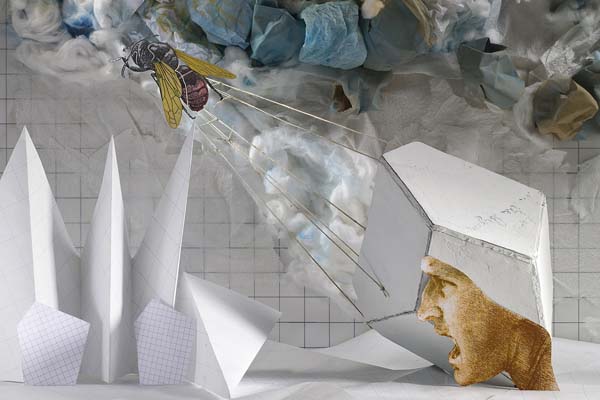 “Polyhedron of Creativity Carried Away By The Pest of Logic” by James Bellucci
“Polyhedron of Creativity Carried Away By The Pest of Logic” by James Bellucci
Janet Sternburg, PASSAGE
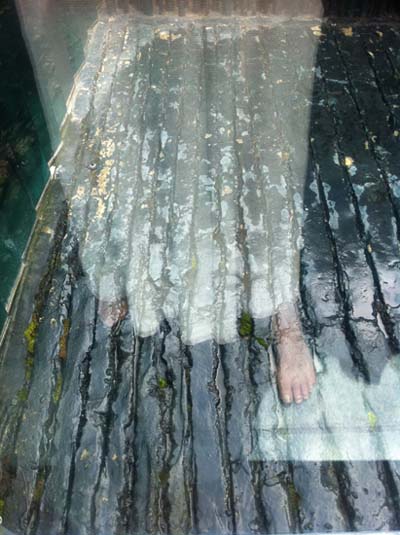 “Janet Sternburg’s images can be understood as a school of seeing and an iconography of memory all at once.” Cultural critic Joern Jacob Rohwer.
“Janet Sternburg’s images can be understood as a school of seeing and an iconography of memory all at once.” Cultural critic Joern Jacob Rohwer.
“When I photograph, I layer. When I write, I juxtapose. In both, I am working with time.”
Janet Sternburg’s photographs are born from an inexhaustible desire to look; to meditate on intention and accident; to uncover the layers of time within a single moment.
“I want to mingle inside and outside, layer past and present, create a fertile confusion sufficient to the richness of mind and experience.” She is attentive to those moments when everyday reality becomes charged and responds to that charge with images that convey elusive but potent meanings.
Sternburg works with disposable and iPhone cameras, exploring their special qualities. “The throwaway disrupts the normative way of seeing. What we usually see as separated visual tangents is mingled on a single plane. Preferences disappear as does three-point perspective. Everything within the frame, then, is of interest and value.” And everything within the frame is captured in an instant. (above, SIREN by Janet Sternburg)
bio: Janet Sternburg works across many art forms, in images and words. She is a writer of memoir, essays, poetry and plays, as well as a fine-art photographer. Her books include the memoir, Phantom Limb: A Meditation on Memory; Optic Nerve: Photopoems, an experiment in using photographs as stanzas; the classic two volumes of The Writer on Her Work described as ‘groundbreaking . . a landmark; and, forthcoming, The Unfeeling: A Memoir of Love and Damage. Her play, The Fifth String was produced in May, 2012, at New York’s La Mama Theater.
In 1998, Sternburg picked up a camera and began another life as a photographer. Her work has now been shown at museums and galleries around the world, with solo shows in Berlin, Munich, New York, Los Angeles, Mexico, and Korea where she was commissioned by The Seoul Institute of the Arts to create a full-building installation. Portfolios of her work have been published in Aperture and Art Journal. She is a regular contributor to the on-line cultural journal, Times Quotidian, writing on photography and words.
Her honors include fellowships and residencies, among them from the National Endowment for the Humanities, the American Embassy in Berlin, The MacDowell Colony, and the Djerassi Resident Artists Programs. She is one of forty artists from around the world selected by The Utne Reader as ‘movers and shakers. . . whose art will change the world . . . full of ideas and insights that challenge us to live more fully.’
Barbara Kilpatrick, Performance for Camera and Imaginary Audience

Barbara Kilpatrick is an interdisciplinary visual artist who unites elements of sculpture, photography and set / costume installation.
“When I first saw depictions of performance art as a student, the plain, grainy photographs and unornamented text seemed to draw attention away from the document and towards the transient event. Beauty was suspect and inadmissible.” Later, when Kilpatrick began to collaborate with choreographers, she recognized this viewpoint as a particular stance, one option among many. Hoping to extend the experience of dance into the studio, she created performances for camera, in which the audience is absent but implied. These “aestheticized” performance documents link the fixed object with the temporal event, providing a memento or souvenir of the time-based action.
In the photographs from her series, Venus Hum, Kilpatrick creates a world within the confines of an 8’ x 8’ x 8’ wooden box or “room”, with apertures/windows facing East and West, in a meadow in Ghent, New York. She photographed during specific times of the day and certain light conditions, using a body-cast sculpture and herself as performers, and the camera as the audience. The photographs were later sequenced along with drawings and a sound score, by Elise Kermani, that recorded the sound of the work’s making: heartbeats, sewing machines, scissors, and the strains of the tarantella. Shown here are selected gelatin silver photographs from an imaginary performance.
Exuberance, in a sense, is the flip side of Venus Hum. Created collaboratively with sound designer Elise Kermani and vocalist Marty New, the work was composed in her Brooklyn studio at night, with long exposures. Here the performer “played” her body-cast sculpture as a musical instrument. By focusing a beam of light on the sensors, she activated a sound composition of pre-recorded songs and vocal texts. Video captured her live, improvisational performance; what is shown here are selected gelatin silver photographs from a performance for camera.
Both Venus Hum and Exuberance emerged in the interval between the waning of the analog and the waxing of the digital camera. Kilpatrick used a 1961 Speed Graflex camera and expired Polaroid 50 positive/negative film, knowing that the photographic process that she knew and loved was slipping away, and was as transient as the performance she was trying to capture and contain. (above: Exhuberance 1 by Barbara Kilpatrick)
bio: Barbara Kilpatrick, of Ghent and New York City, has exhibited in solo and group shows and collaborated with numerous artists in a range of disciplines throughout the Northeast. In 2012, her work, Bearskin, a performance for puppets and movement artists, was presented at FIAF (French Institute/Alliance Francais). Solo shows include Keep-Sake: a set and sound installation for camera and imagined audience at Ancram Opera House, Ancram, New York; New Arts Program, Kutztown, PA; and On Floating Bodies, Dance Theater Workshop Gallery, New York and Embodiment: Sculpture, Photographs, and Works on Paper by Barbara Kilpatrick, Construction Company Gallery, New York.
Kilpatrick’s work with dancer-choreographer Vicky Shick extending some seventeen years, culminated in a BESSIE award (New York Dance and Performance Award) for their body of collaboration. Her collaborations with sound designer-multi-media artist Elise Kermani have led to projects in performance, installation and video.
She has received support and numerous grants including the MAP Fund, a program of Creative Capital, supported by the Rockefeller Foundation (with Shick and Kermani); the New York Foundation for the Arts SOS Grants; and from the Cill Rialaig Artist’s Residency in Ballinskelligs, Ireland.
Portfolio Showcase “Staged”
Selected through our Portfolio Showcase Call for Work, the gallery is also featuring outstanding portfolios by Pavel Romaniko, “Nostalgia” and James Bellucci, “Anecdotes”
Pavel Romaniko “Nostalgia”
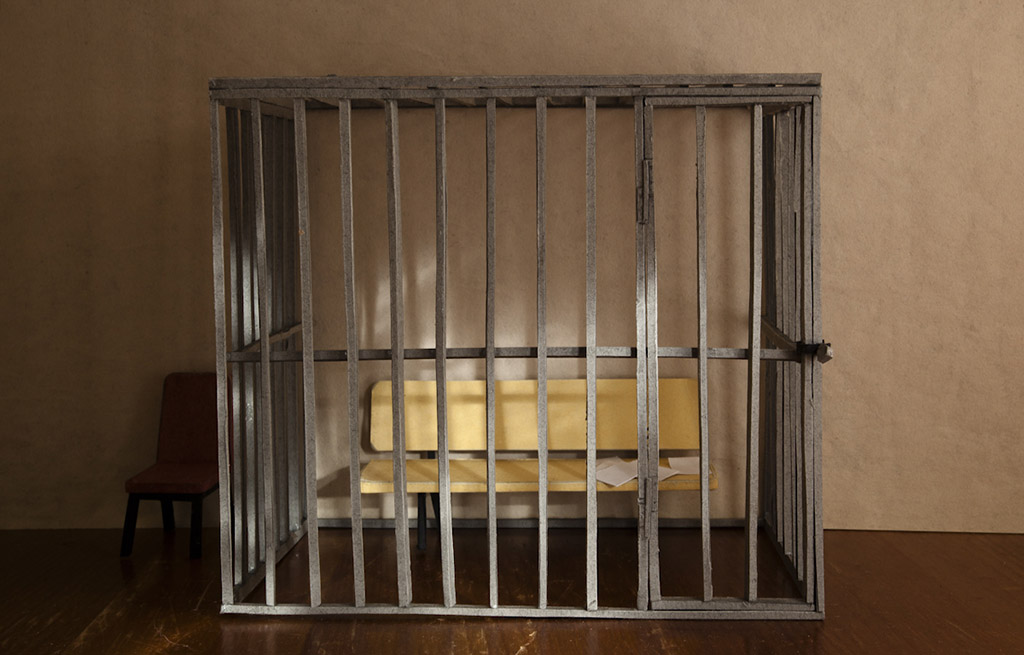 Pavel Romaniko, born in a small town outside of Moscow, emigrated to the United States at age 17. Nostalgia, an ongoing body of work begun in 2008, is a reflection on the topic of exile, home, and developing a relationship with one’s past and belonging. Here Romaniko depicts politically charged yet simple interior spaces through miniature sets he constructs out of paper and then photographed. These spaces are in a transient state. They are not specific to their own location; they are not geographically defined. Instead they become symbolic reflections on exile, blurred memory, and Romaniko’s longing for a relationship with his personal and cultural past. The empty, melancholic interiors are not only paper constructions, they are reconstructions created from Romaniko’s recollection of the past and found photographs. The nostalgia Romaniko feels for his personal past mirrors his native Russia’s attempts at reconciliation with its tumultuous history and its uneasy relationship with a rapidly changing present.
Pavel Romaniko, born in a small town outside of Moscow, emigrated to the United States at age 17. Nostalgia, an ongoing body of work begun in 2008, is a reflection on the topic of exile, home, and developing a relationship with one’s past and belonging. Here Romaniko depicts politically charged yet simple interior spaces through miniature sets he constructs out of paper and then photographed. These spaces are in a transient state. They are not specific to their own location; they are not geographically defined. Instead they become symbolic reflections on exile, blurred memory, and Romaniko’s longing for a relationship with his personal and cultural past. The empty, melancholic interiors are not only paper constructions, they are reconstructions created from Romaniko’s recollection of the past and found photographs. The nostalgia Romaniko feels for his personal past mirrors his native Russia’s attempts at reconciliation with its tumultuous history and its uneasy relationship with a rapidly changing present.
Romaniko notes that in the act of building the Soviet myth, facts from history texts, documents, photographs and even the consciousness of people were violently eradicated. In the process, a new history was fabricated, thus creating a new order, a new collective memory, and turning and entire country and its many cultures into exiles in their own land. In the years since, artistic efforts to reconstruct the past have turned into, among other things, an anxious preservation of memory. Nostalgia has great impact on constructs of cultural memories. At the same time we are reminded that the images produced and circulated within that culture need to be carefully examined. Perhaps, they have no ability to tell a story of their own but can only remain in a form of melancholic nostalgia. (above: Untitled 2011 by Pavel Romaniko)
bio: Pavel Romaniko was born in Pereslavl-Zalessky, a small town outside of Moscow, Russia, in 1980. He came to the United States at the age of seventeen. Romaniko completed a BA in Studio Arts from Northwestern College in Saint Paul, Minnesota (2002), and an MFA in Imaging Arts from the Rochester Institute of Technology (2009). Recent solo exhibitions include Nostalgia at Tyler Gallery, Northern Virginia Community College; Art Center, Orange Coast College, Costa Mesa, CA, and Glory at Gallery Kunstler, Booksmart Studio, Rochester, NY. His work has been featured as part of Museum of Contemporary Photography Midwest Photographers project. Romaniko is currently on faculty at the University of North Texas, Denton, TX.
James Bellucci, “Anecdotes”
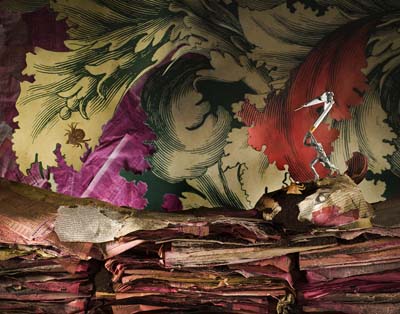 James Bellucci’s Anecdotes is a series of tableaus that illustrate stories derived from Biblical text, scientific discovery and self-created narratives. Each three-dimensional set, constructed with paper, cardboard, string, and fabrics then photographed and represented as a two-dimensional image, question the authenticity of the grand narrative. The images explore scientific discoveries along with religious beliefs revealing Bellucci’s reservations, perceptions, and sentiments toward both. “As my knowledge and beliefs changed from childhood into adulthood, Anecdotes deconstructs these conflicting narratives and subverts, parodies and internalizes each text.” (above: DaVinci Battles Celestial Fossil Matter! by James Bellucci.)
James Bellucci’s Anecdotes is a series of tableaus that illustrate stories derived from Biblical text, scientific discovery and self-created narratives. Each three-dimensional set, constructed with paper, cardboard, string, and fabrics then photographed and represented as a two-dimensional image, question the authenticity of the grand narrative. The images explore scientific discoveries along with religious beliefs revealing Bellucci’s reservations, perceptions, and sentiments toward both. “As my knowledge and beliefs changed from childhood into adulthood, Anecdotes deconstructs these conflicting narratives and subverts, parodies and internalizes each text.” (above: DaVinci Battles Celestial Fossil Matter! by James Bellucci.)
bio: James Bellucci has exhibited most recently at ISIS Gallery, University of Notre Dame, the Midwest Museum of American Art, Elkhart IN, Sage Art Center, University of Rochester and, Pingyao International Photography Festival, Pingyao, China. He currently works at University of Notre Dame teaching within the College of Arts and Letters, managing photographic studios and equipment and providing academic support. He has been an adjunct professor at University of Rochester, SUNY Brockport and Monroe Community College and has also worked at the George Eastman House International Museum of Photography and Film, located in Rochester, NY, where he initiated a museum-wide digitization protocol for permanent collection materials by way of a federal grant from the Institute for Museum and Library Services. Bellucci received his B.F.A. in photography from Shepherd University and M.F.A. in Imaging Arts and Sciences from the Rochester Institute of Technology.
Tamara Staples
Rebecca Doughty
portfolio showcase Dianne Yudelson and Jim Nickelson
Tamara Staples, “The Magnificent Chicken”
Photography and Book (Chronicle Books 2013)

Blue Cochin Bantam Pullet by Tamara Staples
Rebecca Doughty, “Ink”
Ink on paper

Inky #14 by Rebecca Doughty
Portfolio Showcase: Dianne Yudelson and Jim Nickelson

Snowy Egret by Dianne Yudelson
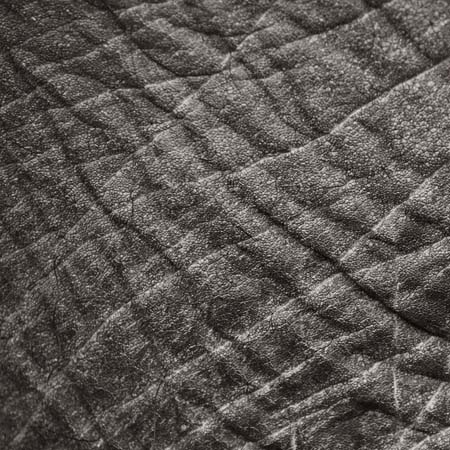
Hope Elephants 1 by Jim Nickelson
Tamara Staples, The Magnificent Chicken
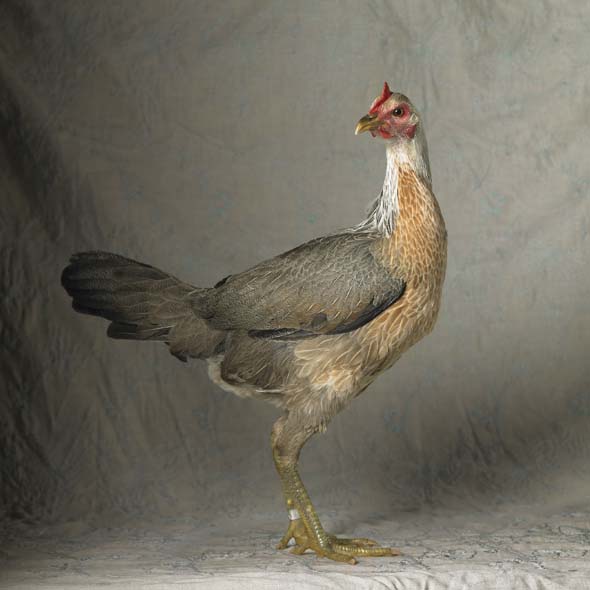
Tamara Staples celebrates champions of the chicken world. Her intent is to create a portrait of each bird that shows it’s unique qualities and commands respect. Staples styles each portrait using light and backgrounds of lush fabrics and papers to elevate her subjects in the same way that Dutch painters used such materials to denote wealth and prestige in society. She spends between ten minutes to a half an hour for each portrait session. Of course, it all depends on the mood of her models.
Staples’ love for these birds began over twenty years ago during visits to her favorite uncle, a chicken breeder who lived in Athens, Georgia. He invited her to her first poultry show. While today we equate chicken with food, there is an existing culture that aims to perfect these birds through breeding based on a book entitled, The Standard of Perfection, first published in 1874. At poultry shows all over the world, known as The Fancy, chickens of all shapes, colors and sizes await their judgment. Each breeder spends years creating a work of art, where genetics is key. And each bird IS a work of art, from the amount of toes on each foot to the wingspan, from the color to the weight. These birds are bred solely for show and live luxuriously into old age. (above: Silver Duckwing Modern Game Large Fowl Hen by Tamara Staples)
bio Tamara Staples began her career as a stylist for print and television commercials. As a commercial and editorial photographer, her work has appeared in Harper’s Magazine, Time Out NY, New York Times, Men’s Journal, O Magazine, New York Magazine and Town and Country to name a few. In 2001, Staples published her first photography book of personal work, The Fairest Fowl, Portraits of Championship Chickens (Chronicle Books). Her second book of portraits, The Magnificent Chicken, was published in 2013 (Chronicle Books). Interviews and featured stories have appeared in The Daily Beast, National Geographic Weekend, The Wall Street Journal, Slate, LA Weekly, Modern Ink, The Huffington Post,” and The Atlantic. She is the recipient of a NYFA Grant and a PDN self-promotion award. Recently, her work inspired a play that ran off-Broadway, entitled Still Life. Staples lives and works in New York City.
About the birds: While today we equate chicken with food, there is an existing culture that aims to perfect these birds through breeding based on a book entitled, The Standard of Perfection, first published in 1874. At poultry shows all over the world, known as The Fancy, chickens of all shapes, colors and sizes await their judgment. Each breeder spends years creating a work of art, where genetics is key. And each bird IS a work of art, from the amount of toes on each foot to the wingspan, from the color to the weight. These birds are bred solely for show and live luxuriously into old age.
Rebecca Doughty “Ink”
 Rebecca Doughty’s work is distinctive for its comic and tragic animal figures. In these new drawings she departs from her narrative line-based work, and brings her character companions to life in graphic ink silhouettes. The animals appear as anonymous and shadowy, and at the same time their edges carefully articulate the peculiarities of each individual.
Rebecca Doughty’s work is distinctive for its comic and tragic animal figures. In these new drawings she departs from her narrative line-based work, and brings her character companions to life in graphic ink silhouettes. The animals appear as anonymous and shadowy, and at the same time their edges carefully articulate the peculiarities of each individual.
In one group, Inkies, hybrid animal figures exist in white space, appearing either to act or be acted upon, as they tumble, contort, are pushed, pulled, or struggle to move forward. Her Profile drawings are oddly reminiscent of 19th century silhouette portraits, honoring and poking fun at traditions of portraiture. Decorative picture frames add to the formality, but the artist paints them uniformly white, giving a ghostly sense of disappearing tradition. (above: Profile 9 by Rebecca Doughty)
bio: Rebecca Doughty’s drawings and paintings have been exhibited in many places since the 1980’s, including The Drawing Center in NYC, The Boston Drawing Project, DeCordova Museum, Rose Art Museum, The Schoolhouse Gallery in Provincetown and the Davis Orton Gallery(2010). She has received fellowships and awards from the Ucross Foundation, The Ballinglen Arts Foundation, The Massachusetts Cultural Council, and a Best Show Award from the International Association of Art Critics (AICA) Boston. Her work is in the permanent collections of the Provincetown Art Association and Museum, DeCordova Museum, Simmons College, and private collections in the US, UK, Mexico and Japan. She lives in Cambridge, Massachusetts with her husband, poet Edison Dupree.
PORTFOLIO SHOWCASE: Animals Real and Imagined.
Selected through our Portfolio Showcase Call for Work, the gallery is also featuring outstanding portfolios by Dianne Yudelson, “From the Antique Aviary” and Jim Nickelson, “Hope Elephants.”
Dianne Yudelson, “Antique Aviary”
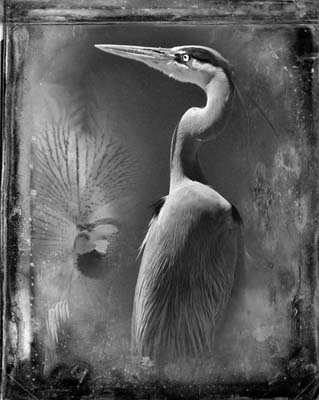 As a young girl one of Yudelson’s fondest memory was sitting on her grandmother’s porch while she showed her tintypes of her great grandmother and other loved ones. “Holding these tintypes and gazing into the eyes of my ancestors while hearing stories of my grandmother’s childhood was an experience I hold dear to my heart.” Yudelson’s series Antique Aviary is a melding of her lifelong passion for birds, wildlife photography and deep appreciation of the tintype image.
As a young girl one of Yudelson’s fondest memory was sitting on her grandmother’s porch while she showed her tintypes of her great grandmother and other loved ones. “Holding these tintypes and gazing into the eyes of my ancestors while hearing stories of my grandmother’s childhood was an experience I hold dear to my heart.” Yudelson’s series Antique Aviary is a melding of her lifelong passion for birds, wildlife photography and deep appreciation of the tintype image.
bio: Award winning artist Dianne Yudelson has exhibited her photographs internationally. Six of her images from Antique Aviary will be exhibited throughout the summer on both THE FENCE in Brooklyn Bridge Park as part of the Photoville Festival and THE FENCE in Boston’s Rose Kennedy Greenway as part of the Flash Forward Festival. Yudelson’s most recent awards include “Photographer of the Year” Honor of Distinction at the 6th Annual Photography Masters Cup and Grand Prize Winner in the New York Center for Photographic Arts Winter Exhibition.
Jim Nickelson, “Hope Elephants”
 Jim Nickelson photographs elephants residing at Hope Elephants, a home for older and injured elephants in Hope, Maine. Elephants and their ancestors have existed since times primordial, and close study reveals echoes of those primordial times. The richly textured folds of their skin conjures up visions of both dinosaur-trodden landscapes both real and imagined.
Jim Nickelson photographs elephants residing at Hope Elephants, a home for older and injured elephants in Hope, Maine. Elephants and their ancestors have existed since times primordial, and close study reveals echoes of those primordial times. The richly textured folds of their skin conjures up visions of both dinosaur-trodden landscapes both real and imagined.
bio: Photographer Jim Nickelson, based in midcoast Maine, has exhibited his work widely including the Center for Maine Contemporary Art, Rockport ME; Three Columns Gallery at Harvard University; Center for Photographic Art, Carmel CA and Gallery Photographica, San Francisco. His work is held in corporate, public and private collections across the United States. Nickelson is a master digital printer and teaches workships privately and at Maine Media Workshops. Before committing himself to photography he was a NASA engineer and corporate lawyer.
Benjamin Dimmitt
Debi Milligan
Keiko Sono
portfolio showcase Kent Krugh and Anna Beeke
Benjamin Dimmitt: Primitive Florida
Palm Hammock, Titusville, Florida silver gelatin print by Benjamin Dimmitt
Debi Milligan: First Light, Last Light

First Light, Last Light #1 silver gelatin print by Debi Milligan
Keiko Sono: 110 Days of Winter
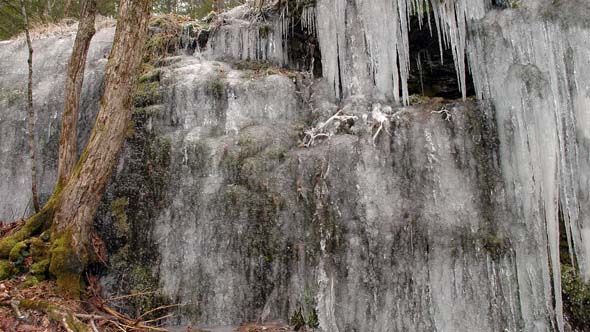
From 110 Days of Winter, single channel video, 40:20 min on a seamless loop, 2011 by Keiko Sono
Porfolio Showcase: Kent Krugh and Anna Beeke
Heritage Park Mulberry by Kent Krugh
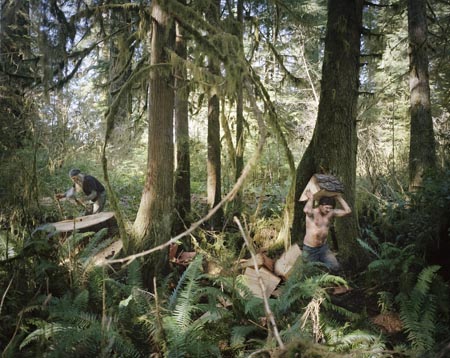
The Woodcutters by Anna Beeke
Benjamin Dimmitt, Primitive Florida

Creek Opening, Malone Island, Florida, silver gelatin print by Benjamin Dimmitt
Benjamin Dimmitt is a native Floridian who has been living in New York City for over 30 years. The Florida of his youth had abundant undeveloped areas and animated wild places that he took for granted and that are now gone. The remaining primitive places have been put at risk by unwise land use policies, nearly unfettered development and environmental degradation. Several years ago, he began photographing the wetlands, palm hammocks and low-lying forests of Florida in a process of exploring, reacquainting himself and finally interpreting the unique and fragile beauty there. He seeks out lush and fecund places where land merges with water. “I am most attracted to scenes of animated and layered growth that exhibit the urge for survival and the persistence of life.”
bio Benjamin Dimmitt’s photographs are in the collections of the American Academy of Arts and Letters, New York; Florida Museum of Photographic Arts, Tampa; the Museum of Fine Arts, Houston; and in corporate and private collections. He has exhibited internationally with solo exhibitions including Clayton Galleries, Tampa; Eckerd College Gallery, St. Petersburg and Florida Museum of Photographic Arts. His work is represented by Clayton Galleries in Tampa and the Hagedorn Foundation Gallery in Atlanta. Dimmitt’s photographs have been featured in South X Southeast Magazine, Photo District News and The New Yorker: Photo Booth Blog. He has taught at the International Center of Photography, New York since 2001 and will also be teaching at the Bascom Art Center, Highlands, NC this year.
Debi Milligan, First Light Last Light

First Light, Last Light #3 silver gelatin print by Debi Milligan
“I stand at a portal, holding the beginning of day in my hand for a moment; and the beginnings of night. Within chaos and beauty, capturing the light’s gesture is my small, ecstatic victory. The photograph is the lasting pleasure of this brief moment”
At dawn and dusk, Debi Milligan observes the conversation between light and form – the way everything is transformed through the light; now here, then suddenly gone forever. She waits, watches, and works to claim a specific moment. Day into night, night into day, the minute movements of the light and air.
bio Debi Milligan, portraitist and fine art landscape photographer, has exhibited her photographs in group shows including Art Institute of Boston, Newton Art Center, Folklore Museum – Rome Italy, Wooster Gallery, New York and New England School of Photography, Boston. Her portraits of authors and musicians including Marge Piercy, Tom Perrota, Mameve Medved, Alice Hoffman, Sue Quinn and Jill Stein appear on book jackets and CD covers. Debi has taught photography at Cambridge Rindge and Latin School (CRLS) in Cambridge MA since 2004. Among her numerous teaching awards and grants, she is the recipient of the Power of ART Award from the Robert Rauschenberg Foundation. Prior to CRLS she taught Classical and Contemporary Portraiture at the New England School of Photography in Boston. She holds an MFA from University of Massachusetts and BFA from University of Denver.
Keiko Sono, 110 Days of Winter

Still #63 from 110 Days of Winter, HD Video by Keiko Sono
Keiko Sono’s 110 Days of Winter is a high definition single channel video installation. It follows the formation and evolution of an ice layer on a Catskill boulder, beginning and ending with a bare rock wall from December to April, condensing the five-month-long process into a 40-minute loop. The slow change is barely perceptible at first, yet once the eye is settled, the morphing of ice and shift in light manifest from within. “My goal in this project is to provide the audience with a space where one can slow down and be immersed in the sensory experience, while being mindful of the changing environment we are in.” 110 Days refers to how many days there were in 2007, when the original photos were taken, from the first sign of ice to its disappearance. But last winter (2011–12), there were about 70 days. While the video on a seamless loop repeats the process endlessly, the actual ice layer may cease to return in the coming decades. 110 Days of Winter is sponsored by Artspire, a program of the New York Foundation for the Arts.
bio: Keiko Sono designs contexts. She uses visual media, video, blogs, and social media, to create events and projects that focus on connections rather than elements. She evaluates her works in terms of how many new connections are made, how much the existing ones are strengthened, and how many people or things benefit from them. Her works range from deeply personal and contemplative, which deepen her connection with the natural environment (110 Days of Winter) to widely accessible and interactive, creating robust networks within the community. Highlights in her artist’s career include: a fellowship from the Pollock-Krasner; a solo show in the project room of Art Tower Mito (the Museum of Contemporary Art in Mito, Japan); featured artist represented by Gallery Side 2 (Tokyo) in Art Forum Berlin. She is a NYFA MARK 2011 artist and received NYFA fiscal sponsorship for her video project, 110 Days of Winter. Recent shows include After the Trace at KMOCA in Kingston, NY; MARK on MAIN in Catskill NY; and The Sky is Falling! at Kleinert/James Gallery (Byrdcliffe Guild) in Woodstock. Her upcoming shows include a window project at Imogen Holloway a solo show at Roos Arts in Rosendale (October 2013). Sono is an adjunct instructor in art at Empire State College, and owner of Flick Book Studio, an open studio for connecting artists of all ages through learning and producing stop-motion animation.
PORTFOLIO SHOWCASE: Landscape
Selected through our Portfolio Showcase competition, the gallery is also featuring outstanding portfolios by Kent Krugh, “Inside the Gate” and Anna Beeke, “Sylvania.”
Kent Krugh “Inside the Gate”  “Another tree for the collection. Another window into creation.” Kent Krugh’s portraits of trees are photomontages, and by virtue of the process used to create them, he considers them “inverse panoramas.” For Krugh it is as if he crosses through a gate or threshold into another realm, spiritual perhaps, where time and space are collapsed. From the perspective of the tree, they also represent a passage of events and time. When he selects an individual tree, his intention is to open a gate and allow the viewer to listen and explore and relate to the central figure in ways not before understood or realized. (Above,”Higher Ground Cedar by Kent Krugh.)
“Another tree for the collection. Another window into creation.” Kent Krugh’s portraits of trees are photomontages, and by virtue of the process used to create them, he considers them “inverse panoramas.” For Krugh it is as if he crosses through a gate or threshold into another realm, spiritual perhaps, where time and space are collapsed. From the perspective of the tree, they also represent a passage of events and time. When he selects an individual tree, his intention is to open a gate and allow the viewer to listen and explore and relate to the central figure in ways not before understood or realized. (Above,”Higher Ground Cedar by Kent Krugh.)
bio Kent Krugh is a fine art photographer, living and working in Greater Cincinnati, OH. Krugh’s work has been exhibited at Fringe Festival 2010, Cincinnati, OH; FotoFest 2011, Houston, TX; and FotoFocus Biennial 2012, Cincinnati, OH. In 2013 he will have solo exhibitions at the Carnegie Arts Center, Covington KY; Clifton Cultural Art Center, Cincinnati, OH, Cleremont College, Batavia OH and in multiple exhibitions at ZOOMFEST 2013, Medellin, Columbia, South America, where he will also teach under the auspices of the Universidad de Antioquia. Krugh has received numerous awards in national and international print and portfolio competitions, including 2012 Critical Mass Finalist.
Anna Beeke “Sylvania” 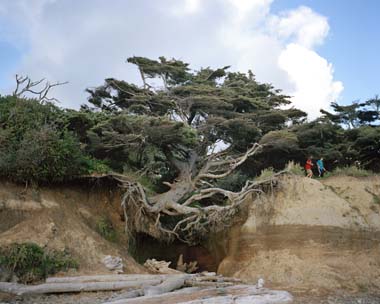 Across cultures and centuries, there are countless histories and myths that involve humankind venturing beyond the structured limits of civilization into the chaotic labyrinth of the forest. Anna Beeke’s Sylvania is a composite photographic forest cultivated from the seeds of various American woodlands, as well as our representations of those woodlands in more urban spaces. Sylvania began serendipitously: knowing she had been conceived in Washington State, Beeke had a strong compulsion to go to the Northwest, her place of genesis, sure she would find something there. As she began photographing the forest and her encounters within it, small clues, moments of magic and surprise, delight and fear, and chance encounters with strangers informed her direction. “My experiences in the forest are not quite mythic or the stuff of fairy tales, but I do seek the transmission of something more metaphoric: an appeal to the imagination and a suggestion to the subconscious.” (Above: Tree of Life by Anna Beeke)
Across cultures and centuries, there are countless histories and myths that involve humankind venturing beyond the structured limits of civilization into the chaotic labyrinth of the forest. Anna Beeke’s Sylvania is a composite photographic forest cultivated from the seeds of various American woodlands, as well as our representations of those woodlands in more urban spaces. Sylvania began serendipitously: knowing she had been conceived in Washington State, Beeke had a strong compulsion to go to the Northwest, her place of genesis, sure she would find something there. As she began photographing the forest and her encounters within it, small clues, moments of magic and surprise, delight and fear, and chance encounters with strangers informed her direction. “My experiences in the forest are not quite mythic or the stuff of fairy tales, but I do seek the transmission of something more metaphoric: an appeal to the imagination and a suggestion to the subconscious.” (Above: Tree of Life by Anna Beeke)
bio Anna Beeke’s work has been exhibited at both Aperture Gallery and ClampArt in New York City and at international galleries and festivals including the Recontres d’Arles; Pingyao International Photography Festival and “reGeneration2: tomorrow’s photographers today” exhibition and book by the Musée de L’Elysée in Lausanne, Switzerland which has been traveling internationally from 2010 to 2015. Beeke is the recipient of the Humble Art Foundation’s 2013 WIP/LTI Lightside Materials Grant and the 2013 too much chocolate + Kodak film grant. She recently received her MFA in Photography, Video and Related Media at the School of Visual Arts in Manhattan and is a graduate of the International Center of Photography’s certificate program in Photojournalism and Documentary Photography.
April 5 to May 12, 2013
Reception: Saturday, April 6, 2013
Also: Dine/Art Gallery Stroll BeLo3rd
Stephen DiRado
Bob Avakian
portfolio showcase: Susan Bowen & Miska Draskoczy
Stephen DiRado, Celestial Comet Hyakutake, 03/24/96 4:20am, Martha’s Vineyard, silver gelatin print by Stephen DiRado
Comet Hyakutake, 03/24/96 4:20am, Martha’s Vineyard, silver gelatin print by Stephen DiRado
Bob Avakian, Between Night and Day
White Barn pigment print by Bob Avakian
Portfolio Showcase: Susan Bowen and Miska Draskoczy

Legs and Feet #893 by Susan Bowen

Gowanus Mist by Miska Draskoczy
Stephen DiRado, Celestial
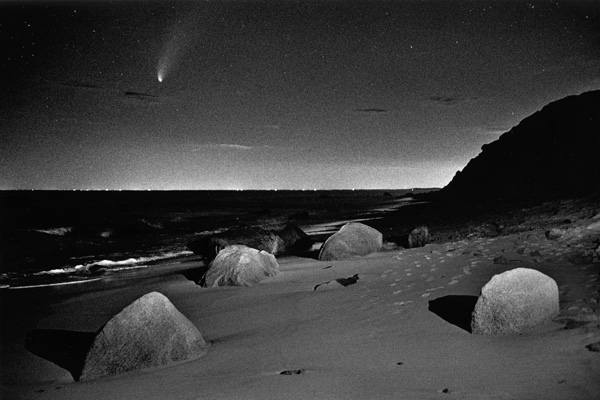
From Celestial by Stephen DiRado (Hale-Bopp, Martha’s Vineyard, 1997)
“You’re out there driving around this island and there are the heavens and I’m eight years old all over again. The sense of awe never left me.”
While many of of Stephen DiRado’s projects are decades-long pursuits represented by thousands of sheets of exposed 8×10 black and white film, other subjects, such as “Celestial” are, by their nature, occasional. At 4:10 a.m. on March 24, 1996 on the island of Martha’s Vineyard in Edgartown, DiRado produced his first photograph of a comet, Comet Hyakutake, using a small camera on a tripod, fast film (and warm clothes.) “The heavens organized itself in a remarkable way and with that first exposure, I instantly had “Comet Fever.” DiRado continued to photograph Comet Hyakutake for a several weeks. When he learned that less than year later, Hale-Bopp, “the comet of millennium” would arrive, “I realized this was a wake up call to be prepared and I was already an astrophotographer in training. I already knew how to do it.”
This is a project DiRado has returned to several times over the years. He finds a kind of humor in the structure of some of his images which may include mundane objects that are a few feet from him – for example a fence, a few yards from him – perhaps a building, a few miles from him – a fog bank, and 90 million miles away – a comet. His remarkable compositions represent a combination of intimate knowledge of the landscape, dogged persistence, passion for photography and technical decisions that come with a director’s eye. For example, in Celestial he limits exposures to 30 seconds or less to maintain the sense of the visual eye where stars hang still in the vault of the sky but other objects – satellites and planes – reveal movement.
bio Photographer and experimental documentary filmmaker* Stephen DiRado of Worcester MA and Martha’s Vineyard stays close to home where he relentlessly documents the world around him. Many of his subjects span decades of scrutiny. Two of his major projects, “Dinner Series” and “Martha’s Vineyard Project” each represents almost 30 years of photography. His remarkable (insightful, informative and amusing) new film, “Summers Spent” (2013) represents the culmination of 4 years of filming his life as a working artist.
DiRado’s photographs are in the collections of the Museum of Fine Art Boston, Museum of Fine Arts Houston, Currier Museum of Art, Berlin National History Museum, New Britain Museum of American Art and the Worcester Art Museum. Numerous solo exhibitions at the deCordova Museum, Lincoln MA, Afterimage Photography Gallery, Dallas Tx, Houston Center of Photography and the Fitchburg Art Museum, have featured different aspects of DiRado’s series.
Stephen DiRado is a Professor of Practice in the Visual and Performing Arts Department at Clark University in Worcester. He is a 2012 recipient of a John Simon Guggenheim Memorial Foundation fellowship.
*Stephen’s experimental documentary DVD, “Summer Spent” has just been published. It will be available at the gallery.
Bob Avakian, Between Night and Day
 Full Flower Moon by Bob Avakian
Full Flower Moon by Bob Avakian
“When I am out at night, alone, all cares disappear and my sense of time fades. A heightened awareness takes over as I direct my attention to the challenge of relaying the quiet and solitude I experience through the photographs I make.”
For the past year, Bob Avakian of Martha’s Vineyard has been photographing the natural landscape at night and at the break of dawn. He is intimately familiar with most of the landscapes he photographs. At night he use long exposures, which make it possible to turn a night scene into a day scene. In the early daylight hours, by underexposing, it is possible to turn day to night. Through his exposure and printing decisions, Avakian’s glowing prints, mastery of light and sense of place suggests a narrative where everything happens in a single moment in time somewhere between night and day.
“What fascinates me about this process is that there is so much surprise that it seems almost magical. Since the night is in control of setting the stage, I never know where I will wind up. It reminds me so much of life.”
bio Emerging artist Bob Avakian and his wife visited Martha’s Vineyard for the summer in 1973 and it has been home ever since. Trained in architecture, engineering and building, for years he worked in the construction field as a custom homebuilder. After finding himself in management, removed from the satisfactions of hands-on involvement, he turned to photography as a means of self-expression. As his photographic vision has evolved, he has been drawn to the natural landscape and an exploration of night photography.
Bob’s work has been featured in the influential photography blog, “Lenscratch.” In 2012 he was a Photolucida Critical Mass 2012 Finalist; received honorable mention in a number of categories at the International Photography Awards (IPA) 10th Annual competition; and received the Best of Show Award in the All Island Art Show, Martha’s Vineyard. (It was soon after that that Bob met another Martha’s Vineyard photographer, Stephen DiRado, and a friendship began.) Avakian will be featured in a one person show at the South Shore Arts Center, Cohasset MA, in May. He has recently exhibited his photographs at the Griffin Museum of Photography, Winchester MA; Gallery Seven, Maynard MA; Greg Moon Gallery, Taos NM, the South Shore Arts Center and the Cape Cod Art Association’s “Big Picture Show.”
PORTFOLIO SHOWCASE: Night Photography
Selected through the gallery’s Portfolio Showcase competition, the gallery is also featuring outstanding portfolios by Susan Bowen, “Legs and Feet” and Miska Draskoczy, “Gowanus Wild”.
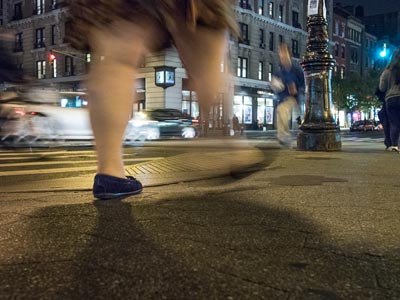
Susan Bowen’s work, “Legs and Feet”, is about motion – the intense pace and vitality of the urban setting. “I like to shoot fast and furiously, to be totally immersed and to be swept up in, and along with, the tide of the moment. I enjoy the element of chance in my photography. I like to be spontaneous in my shooting and see what surprises that brings.” The portfolio presented at the Davis Orton Gallery is a subset of her project “People Walking” and focuses on legs and feet and are shot at night at various busy street corners in New York City. The vantage point is low; Bowen sits on the ground with a small tripod and rapidly capturing people as they walk by. The slow exposure speed she selects makes for surprising outcomes: one foot in sharpness and the other totally blurred; multiple people walking together might seem to be a single person with mis-matched feet; the swirl of fabric might create a dynamic abstraction.
bio: New York artist Susan Bowen has been featured in one and two person shows in New York, Las Vegas, Pittsburgh, Reno, Dayton, San Marino, and Lubbock. She has been in numerous group shows including ones at the Safe-T, Nelson Hancock, and Sideshow galleries in Brooklyn, the Photographic Center NW in Seattle, Woman Made Gallery in Chicago, and the Center for Fine Art Photography in Fort Collins, CO.
Widely known for her overlapping multiple exposure panoramas which she shoots with a plastic camera, Bowen has most recently completed public art murals for a school in New Haven CT and four for the Department of Transportation in Minnesota. She has been a finalist for public art projects in Brooklyn, Iowa, Tampa, Indianapolis, Kansas City, and Texas.
Bowen has been profiled in Photo Techniques and Light Leaks magazines, published in Light and Lens: Photography in the Digital Age, and received an award in the Pilsner Urquell International Photography/Lucie 2007 Awards. Her photographs have also been published in Plastic Cameras: Toying with Creativity, a book by Michelle Bates.
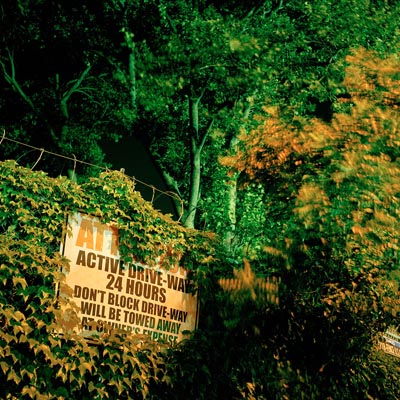 Miska Draskoczy: “I aim to turn concepts of nature photography on their head by finding the beautiful in what most consider to be a man-made environmental catastrophe.”
Miska Draskoczy: “I aim to turn concepts of nature photography on their head by finding the beautiful in what most consider to be a man-made environmental catastrophe.”
Silence. A lack of humans. Light on textured abstraction. Lumbering forms unfolding all around you. These are the qualities one thinks of when experiencing ‘wilderness’. Wandering the industrial night streets of Gowanus, Brooklyn, Miska Draskoczy experiences the same feeling of stillness, awe and liberation as one would gazing out over a remote snowcapped range. Contrary to any vision of civilized urban planning, engineered order rapidly crumbles here in this gully of organic NYC decay.
Draskoczy’s vision for this project is to capture a unique marriage of opposites; the organic in the industrial, life surrounded by decay, green within blacks and grays, stillness and peace in urban chaos. The Gowanus canal is one of the most polluted waterways in the country and the neighborhood has seen continual industrial use since the 19th century. As much of the world’s population grapples with how to connect with nature while living in increasingly urban spaces, it is both a warning against disaster and a note of hope that even such in circumstances, organic beauty can still prevail.
bio: Photographer and director Miska Draskoczy’s career has included diverse projects across a range of media. His photography has been exhibited in the US and Canada and most recently earned him the Portraits 2013 Juror’s Award at the Center for Fine Art Photography and the 2013 Director’s Choice Award at the Midwest Center for Photography for his series Gowanus Wild.
Other projects include: cofounding a conceptual arts organization purporting to be funded by NATO (NATOarts, profiled in WIRED, i-D, ARTnews, UK Esquire); directing the surreal sci-fi shorts Perfect Heat & The Trick (screening in Fantasia Fest, Fantastic Fest, SF IndieFest, LA shorts fest, and many others); writing and developing a horror feature (Mister Gimp, Slamdance Screenplay semi-finalist) and creating a documentary web series about objects in people’s homes (Here’s the Thing…).
2012 Davis Orton Gallery Exhibiting Artists
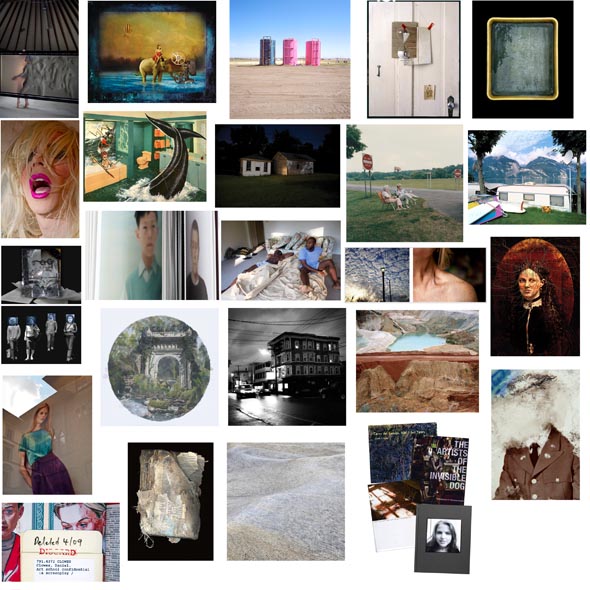
(l to r, top to bottom)
Richard Edelman, Fran Forman, Karen Halverson, John Chervinsky, John Cyr
Keiko Hiromi, Nadine Boughton, Remi Thornton, Mark Haven, Knoll & Cilla
Judith Henry, Mary Ellen Bartlett, Michael Donough, Moira Barrett, Suzanne Gonsalez-Smith,
Elaine Mayes, Julie Brook Alexander, Bob Wagner, Robin Dana, David Torcoletti,
Noel Dana, Terri Garland, Stephen Strom, Photobook Best of Show: Judith S. Miller, Malcolm Brown, Elizabeth Fleming, Jay Muhlin
PhotoBook 2012 artists (not pictured) Brett Bell, Malcolm Brown*, Robert Covington, Melissa Eder, Ellen Feldman, Elizabeth Fleming*, Stewart Harvey, Michael Hunold, Jack LaForte, Jenna Lynch,Judith S Miller*, Jay Muhlin*, Mathew O’Connell, Oliver Ogden, Martha Ormiston, Peter Riesett, Jacob Rivkin, Stephen Strom, Lito Vales, John Whipple (and Sarah Goodman) PHOTOBOOK 2012 Catalog with Link to Artist and/or Books: http://davisortongallery.com/bookshelf
Online Catalog: PHOTOBOOK!! 2012
PHOTOBOOK!!2012
Twenty Photobooks in Exhibition & Online Catalog
& Photographs by Four Best of Show (BOS)
November 16 to December 23, 2012

Twenty Photobooks
(l to r, top to bottom) Brett Bell, Simple Pleasures; Malcolm Brown (bos), The Artists of the Invisible Dog; Robert Covington, About The Garden; Melissa Eder, Fave Foods; Ellen Feldman, Week In Prague: Wall People/Street People; Elizabeth Fleming (bos), Life is a series of small moments; Stewart Harvey, I Am What I Need To Be; Michael Hunold, Postcards From August; Jack LaForte, Water And Mist; Jenna Lynch, Cairo Commute: The Women’s Car; Judith S. Miller (bos), Cerro del Conejo, NM/Ten Years, Jay Muhlin (bos), Half Life: A Portrait of Lauren, Mathew O’Connell, A Pilgrim’s Run; Oliver Ogen, Organica; Martha Ormiston, Gusts; Peter Riesett, Testament; Jacob Rivkin, Our Share; Lito Vales: Hormencio: Stream Of Conciousness; Stephen Strom, Sand Mirrors; John Whipple, Down By The River*
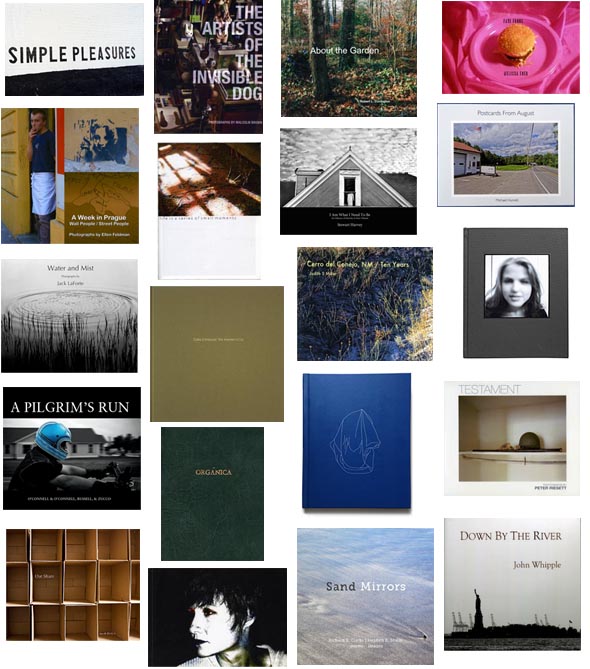
Online Catalog: PHOTOBOOK!! 2012
October 12 to November 11, 2012
John Chervinsky
and
John Cyr
Portfolio Showcase: Elaine Mayes and David Torcoletti
John Chervinsky - Studio Physics
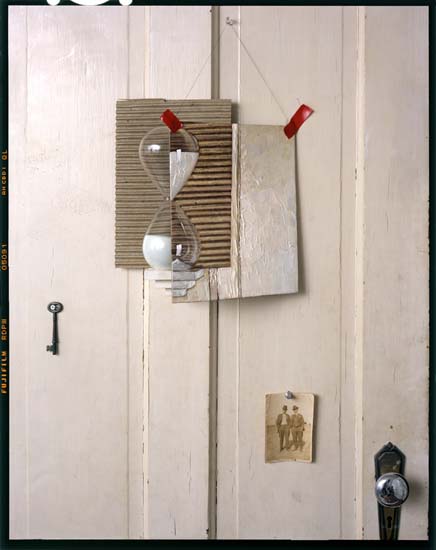
Hourglass, Painting on Door by John Chervinsky
John Cyr - Developer Trays

Sally Mann’s Developer Tray by John Cyr from Developer Trays
Portfolio Showcase: Elaine Mayes and David Torcoletti

Nice, Robert Longo by Elaine Mayes
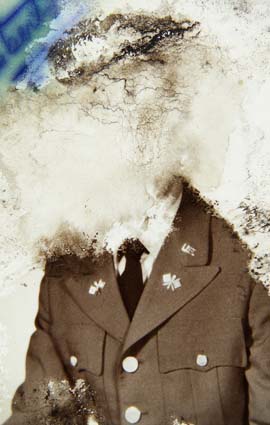
Untitled #1 from Soldiers by David Torcoletti
John Chervinsky “Studio Physics”

John Chervinsky is fascinated by the concept of time.”I can measure it, account for it in an experiment in the lab, and live my life in it, but I still don’t know exactly what it is.”
In “Studio Physics,” John Chervinsky’s images subvert the very nature of a photograph by managing to depict not a single instant, but the passage of time. Intrigued by the pioneering time and motion studies of Eadweard Muybridge, Harold “Doc” Edgerton and the experimental work of Berenice Abbott that investigated motion in seconds and nanoseconds, the artist asks, “What would happened if we picked an image capture interval of not seconds, but weeks?” To consider this – the physical phenomena of still and moving objects in space over time, Chervinsky conceived of his series “Studio Physics.”
His steps are as follows:
1) Compose and photograph a still life
2) Crop a subset of the image and send that file digitally to a painting factory in China.
3) Wait (weeks) for an anonymous artist in China to complete an oil painting of the cropped section and send it back to Chervinsky in the mail.
4) Reinsert the painting into the original setup and rephotograph.
As in his previous series, An Experiment in Perspective, which was exhibited at the Davis Orton Gallery in 2010, Chervinsky is interested in the tensions expressed in the comparison between reality vs. representation while adding, in this series, an unusual collaboration process with an anonymous artist half way around the world and subtle changes over time that we might otherwise take for granted.
bio John Chervinsky is a self-taught photographer and an engineer working in the field of applied physics. His photographs are in numerous public and private collections including the Museum of Fine Arts, Houston; Museum of Art, Portland OR; and Fidelity Investments Collection. Chervinsky spent eighteen years running a particle accelerator at Harvard University and has collaborated with museums, using accelerator technology in the analysis of art. He currently works for Harvard’s Rowland Institute for Science, originally founded by Polaroid’s Edwin H. Land.
Since it first opened at the Griffin Museum of Photography in 2005, his “Experiment in Perspective” series has been traveling the country including solo exhibits at Fermi National Accelerator Laboratory Art Gallery, Batavia IL, Michael Mazzeo Gallery, NYC, Blue Sky Gallery, Portland OR and the Davis Orton Gallery in 2010. His new series, “Studio Physics,” has been exhibited at Ellen Miller Gallery, Boston and the Richard Levy Gallery, Albuquerque NM. Chervinsky has recently been awarded an artist residency at Light Work in Syracuse NY where he will use the time and resources to design, sequence and layout a monograph of An Experiment in Perspective for eventual publication and distribution and create a limited number of handmade volumes. (above: Gladiolas, Painting on Door by John Chervinsky)

John Cyr “Developer Trays”
John Cyr is photographing available developer trays so that the photography community will remember specific, tangible printing tools that have been a seminal part of the photographic experience for the past hundred years.
By titling each tray with its owner’s name, Cyr references the historical significance of these objects in a minimal manner that evokes thoughts about the images that have passed through each artist’s tray.
From the mid nineteenth century until today, silver gelatin printing has been one of the most utilized photographic processes. From classic reportage to fine art photography, the majority of it was performed in a black and white darkroom until the mid-1970’s. As recently as 2000, black and white darkroom classes still served as the location for introduction to photography courses. The digital advances in photography over the past ten years have been remarkable.
Cyr’s project evokes the experiences of countless hobbyists, students and photographic artists for whom the developer pan symbolizes their passion.
bio John Cyr is a Brooklyn based photographer, printer and educator. His work has been featured in the New York Times, The Telegraph, Aperture, Time, Photo District News, NPR and Wired. It has also been published in Popular Photography, PHOTO+ Magazine, Rizzoli’s New York: A Photographer’s City, and Humble Arts Foundation’s Collector’s Guide to New Art Photography Vol. 2. He has been the recipient of the New York Photo Award in the Fine Art Series category, nominated for the Project Prize in the Daylight/Center for Documentary Studies Photo Awards and a winner in the Personal Series category of PDN’s Photo Annual.
In 2010, Cyr received his MFA from the School of Visual Arts in New York City. He is an adjunct faculty member at the International Center of Photography and the Hartford Art School. In addition to working on his own photographic projects and teaching, he owns and operates Silver 68, a traditional silver gelatin printing studio in Dumbo, Brooklyn’s Photo District.
(above: Developer Tray of Aaron Siskind by John Cyr)
PORTFOLIO SHOWCASE:
About Photography – The Photograph as Object
Selected through competition, the gallery is also featuring portfolios
by Elaine Mayes, “Photographs of Photographs” and David Torcoletti, “Soldiers”
The ubiquity of photographs in public locations has rendered them virtually invisible – unless, of course, one takes a second look. That is what Elaine Mayes set out to do in the summer of 2009 when she began to focus on photographs and photographic reproductions of art in public places. It begins, each time, with “seeing” the image in a public place, usually behind glass. She then photograph this image in its context including not only the surrounding scene but also environmental particulars of the world beyond reflected in the glass.
While thematically, the project is about how photographs and advertising imagery permeate our lives; it is also about how the flattening of space in a photograph can produce a collage filled with unexpected content. Mayes has made these pictures in Italy, France, New York, Seattle, Washington, DC and other locations. One unexpected outcome has been discovering and photographing the same image (from national and international campaigns) on different continents.
bio Elaine Mayes’ photographic works are in the permanent collections of, among others, the Metropolitan Museum of Art, The Museum of Modern Art, The Museum of Fine Art, Boston; the San Francisco Museum of Modern Art; and Telfair Museum of Art, Savannah GA. Her photographs were recently shown at MOMA New York, MOMA San Francisco, The Brooklyn Museum and at the Art Gallery, George Washington University, and Steve Kasher Gallery (NYC). Widely known for her images of the rock and roll revolution and Haight Ashbury portraits(1968), Mayes has created a number of documentary and conceptual projects including Wall Street (ongoing), Autolandscapes and The Atlantis Project.
Chair of the Photography Department of New York University’s Tisch School of the Arts until her retirement in 2001 and now Professor Emeritus, Mayes also taught photography and film at The University of Minnesota, Hampshire College (founding faculty), The Cooper Union, The International Center of Photography, Pratt Institute and Bard College.
Mayes is the recipient of many awards including the Guggenheim Fellowship in 1991 to photograph Hawaii. She received an Atherton Foundation grant to publish this work in a limited edition book, “Ki’i No Hawai’i” in 2009. Other photographic books include “When I dance”; “It Happened in Monterey” (about the Monterey International Pop Festival)Britannia Press 2003. She also has produced films and videos and currently is editing a video project about her friend, Helen Levitt. (above: Park Slope Beauty by Elaine Mayes)
 David Torcoletti “Soldiers”
David Torcoletti “Soldiers”
The images in “Soldiers” represents a small portion of the hundreds photographs of U.S. soldiers that, during the Vietnam War, were mailed to a South Vietnamese radio and television personality known professionally as “Mai Lan.” For hours every day, Mai Lan broadcast to American troops stationed there. She also spent much time visiting wounded soldiers in hospitals all around the country. English was her second language, but she was able to communicate very directly with her audience.
She encouraged the soldiers to send her photographs, and they did. Often they were inscribed with simple, touching and sincere declarations of appreciation for giving comfort to the subjects of the pictures. She was a small place of soft kindness in a very harsh, frightening and unfamiliar place.
The images ranged from the 2” X 3” size that accompanied a high school portrait package, to 3” X 3” color Polaroid’s, and 3” X 5” black and white snapshots of life around the base. The soldiers seemed to consider carefully how they wanted to be seen. Often, they would pose with a weapon, or show themselves at work surrounded by the visual clues of a soldiers’ life.
Mai Lan had to leave South Vietnam in a hurry as the North overran the South. She had but moments to decide what objects to take with her. She chose a small box of photographs to bring along, necessity forcing her to leave hundreds more behind.
Since the images were not stored well, and probably many were not processed well at the time of their creation, the majority suffered serious deterioration. Years after she fled Vietnam, Mai Lan, now Denise, was a colleague of David Torcoletti’s at a private school. She showed himthe images, knowing as a photographer he might appreciate them. Denise looked past the crumbling surfaces to see the faces of the soldiers whose morale she was charged with lifting. She knew many of them by name, and even remembered what their parents did for a living.
Torcoletti photographed all of the images for Denise, front and back, leaving the potential restoration of the images to others. With her permission, he photographed twenty-four that he found most powerful in their present state, adjusting them digitally the way he would have in the darkroom: exposure, contrast, burning, dodging, color balance and saturation. All of these decisions were emotional and aesthetic. For Torcoletti, the power of these objects was in the way they were disintegrating, barely holding on to the original image while becoming something else entirely. They were now less specific to the individuals depicted and more about war and hope and a peculiar, distant “love” that sustained these men in impossible circumstances.
bio David Torcoletti has exhibited his photographs at the International Center of Photography, New York City; The Springfield Museum of Fine Arts; Synchronicity Fine Arts in New York; Columbia College, Chicago; Photographic Resource Center, Boston and other venues.
He attended Rhode Island School of Photography, and the Maine Photographic Workshops and received a BFA in Photography from Ohio University, studying with Arnold Gassan, Joseph Marshall and Carson Graves, and an MFA in photography from Bard College studying with Ben Lifson. He received the Edna Way Award, as well as a Dean’s Achievement Scholarship at Ohio University, and the Milton Avery Award at Bard College. Torcoletti has taught photography courses at Amherst College, Greenfield Community College, Northfield Mt. Hermon School and Milton Academy.
Judith Henry
and
Mary Ellen Bartley
Portfolio Showcase: Laura Noel & Terri Garland
Judith Henry - Rebirth and Masquerade, photo collage

Untitled # 9 by Judith Henry
Mary Ellen Bartley - Standing Open, photography
All the More Real from Standing Open by Mary Ellen Bartley
Portfolio Showcase: Laura Noel and Terri Garland
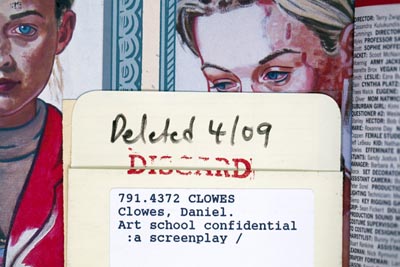
Daniel Clowes’ Art School Confidential by Laura Noel

Blue Note by Terri Garland
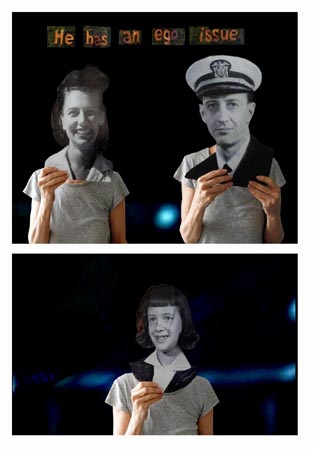 Judith Henry “Rebirth” & “Masquerade”
Judith Henry “Rebirth” & “Masquerade”
For over 30 years, multimedia artist Judith Henry has created evocative tableaus that explore the friction between our interior lives and our public selves. For her exhibition at Davis Orton Gallery, Henry will present work from two recent series, Rebirth and Masquerade.
Rebirth grew out of Henry’s fascination with public obituaries, which she has collected for years. Here the artist partially obscures grids of obituary portraits with fragments of celebrity faces culled from fashion magazines and other glossy journals. These hybrid portraits of the great, the near great and the unknown flicker in and out of recognition, underscoring the slippery nature of identity and our uneasy public relationship with death.
In Masquerade, Henry creates cinematic mise-en-scenes from appropriated word and image. She digitally collages her compositions from a variety of sources including images and objects from her previous works. Among her other sources are text torn from assorted media, repurposed overheards, Freud’s and other historic texts and imagery from mass media, family snapshots and self portraits.
In both series, Henry’s textual and visual misalignments confound the unified storylines of public life. Working with the coherent narratives of historical record and mass media, the artist reroutes and speaks through her sources, drawing absurdity, poignancy and surprise from the fading records of human existence.
Bio Judith Henry has exhibited her work at Churner & Churner Gallery, New York; Ricco / Maresca Gallery, New York; the Walker Art Center, Minneapolis; White Columns, New York; A.I.R. Gallery, New York; The Dayton Art Institute and Hundred Acres Gallery, NY. Her work has been shown abroad in Barcelona, London, Switzerland and Istanbul. Henry’s exhibition at Churner & Churner was reviewed by Holland Carter in the NY Times, the Village Voice, ARTslant and the Huffington Post. This exhibit established her role as partner in the innovative, groundbreaking conceptual design studio, Wooster Enterprises (1976-78).
Henry has created six artist’s books combining photography and text: The “Overheard” artist’s book series (Rizzoli Publishers,2000-2001); Overheard in America (Simon & Shuster, 2006); Anonymous True Stories, (Commonplace Books,1996.) Several of her short video pieces have been shown at San Francisco Short Film Festival; Technocracy, Carnegie Mellon University, Miller Gallery; Philadelphia Independent Film Festival; Ace FilmFestival, New York and at the Festival de Cine International de Barcelona.
Judith Henry’s work has been written about in the art magazine Kunstbeeld, Amsterdam, Art News, On Paper and Print Magazine. She has been interviewed on ABC and CNN.
 Mary Ellen Bartley, Standing Open In Standing Open Mary Ellen Bartley presents photography books as they stand open before her camera. Using their chance settling and a full-frame close-up view we see the books in a new way as they fall into and out of abstraction.
Mary Ellen Bartley, Standing Open In Standing Open Mary Ellen Bartley presents photography books as they stand open before her camera. Using their chance settling and a full-frame close-up view we see the books in a new way as they fall into and out of abstraction.
As one examines Bartley’s photographs, there is the beauty of the interior space and structure of the book, and there are the unique formal discoveries found from looking at them close-up. The stripes the pages create, the shadowy voids between pages that read like burns or stains, and the reflections the photos can make on the pages facing them are among the repeating formal motifs she has found.
“I’m fascinated by conceptual ideas concerning appropriation and reproduction in a mechanical versus digital age. What is the unique aura or presence of a book? How is an image seen and remembered?”
What drives the work for Bartley is the emotional connection she has to the books. In Standing Open she conveys the sensuality and intimacy of reading and looking through books as well as the fleeting inspiration and little jolts of connection that readers find in books they love.
Bio Mary Ellen Bartley’s photographs have appeared in exhibitions on both coasts. A combination of her book projects, Books, was exhibited at Corden Potts Gallery in San Francisco and she was chosen by the painter Ross Bleckner to exhibit her work alongside his at the Parrish Art Museum in Southampton, New York. Bartley is included in the recently published 20 Now:Contemporary Photographers, (Cite Group, Style publisher 2012) along artists Adam Fuss, Philip-Lorca deCorcia and David Hilliard. Upcoming shows include Out of Print at the Bakersfield Art Museum and a solo show at Guild Hall Museum in East Hampton, NY. She was a Photolucida Critical Mass 2011 top 50 winner, and she earned a Juror Commendation from Houston Center for Photography’s Annual Juried show, where she also exhibited.
A New York City native, Mary Ellen Bartley now resides in Wainscott, on the east end of Long Island. She earned her BFA at Purchase College, where she began her fine art studies in painting and drawing.
PORTFOLIO SHOWCASE Books, Magazines, Newsprint
Selected through competition, the gallery is also featuring portfolios
by Laura Noel, “Withdrawn” and Terri Garland, “The Good Books”
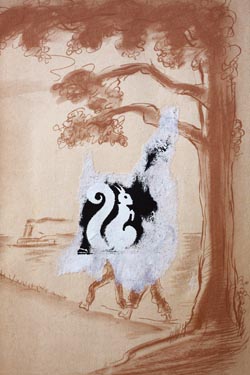 Laurel Noel “Withdrawn”
Laurel Noel “Withdrawn”
The books in this series were removed from a variety of county and city public library systems, schools, churches and universities. For Laurel Noel, photographing withdrawn library books is one way to depict time’s relentless push forward and consider the institutions that change or fade as technology evolves. Some of these discarded books were rejected as no longer relevant to current culture, others were battered, and some contain inaccurate information. Libraries are often “weeded” to make room for new materials.
To Noel, the librarian’s “Withdrawn” or “Discarded” stamp is like a silent slap across the face. A once loved volume is ostracized from the family home. “Fortunately, books have many lives and move from one home to another, carrying the baggage of their former lives – inscriptions, stains, notes and other marks.”
As society completes its move to a digital world, these small acts of personalization and artifacts of aging are harder to find. A handwritten dedication can convey sentiment to those who stumble across the volume long after the book’s original recipient has passed on. Illustrations, charts, even graphics and fonts speak to the values of specific time periods.
Though technology is often wonderful, it can also fundamentally change an important and everyday activity like reading. Books bear the marks of time passing in a way that electronic devices cannot.
Bio Laura Noel’s work has been featured in exhibitions at the Pingyao International Photography Festival in China, the Contemporary American Photography exhibition at the Internationale Fototage Festival in Mannheim, Germany, Gallery 24 in Berlin, the Hunter Museum of American Art, The Griffin Museum of Photography, The Museum of Contemporary Art Georgia, Jackson Fine Art, Lumiere, Gallery 1401 in Philadelphia, The Museum of Contemporary Art Georgia, and The Gregg Museum of Art and Design.
Her photographs have appeared in on-line and in print in Photography Now, Photography Quarterly, PHOTONEWS (Germany), Lens Culture, Planet, Art News Daily, The Humble Arts Foundation, F-Stop Magazine, One One Thousand, SouthXSoutheast, La Lettre de la Photographie, Consciencious, aCurator, Fraction Magazine and many others. Recently her work inaugurated Fall Line Press’ Free Fall series of quarterly magazines featuring the work of one photographer.
Noel was born in Atlanta, Georgia, where she continues to live and work. She received a BA in Public Policy Studies from Duke University and a MFA in Photography with Distinction from the University of Georgia. Noel works as a professor at Emory University and as a freelance photographer.
 Terri Garland, “The Good Books”
Terri Garland, “The Good Books”
Terri Garland specializes in photographing the social fabric of the American South. Garland says, “The South bares its contradictions perhaps better than most regions.” The Bibles presented here in The Good Books have been pulled from their final resting places of mud-caked pews and condemned church floors, from both the Central City and Lower Ninth Ward areas of New Orleans. Relics of former communities of faith and fellowship, these serviceable books bound neighbor to neighbor in the course of thanksgiving and worship. Today, years after hurricanes Katrina and Rita, these communities are still dissipated, their absence marked by the still-remembered, ubiquitous waterline. Three feet, five feet, twelve feet depending upon the topography of a particular area, these linear stains testify to both the stratification and stagnation of large – scale response.
Bio Terri Garland’s photographs are included in the collections of The Center for Creative Photography in Tucson, Arizona, The Art Institute of Chicago, The di Rosa Preserve in Napa, California, The Cleveland Museum of Art, Saint Elizabeth College in Morristown, New Jersey, the Bibliotech Nationale, Paris, France and Special Collections at the University of California at Santa Cruz. Among her awards are a WESTAF/NEA Fellowship, Silicon Valley Arts Council Grant and a Rydell Visual Arts Fellowship.
She received her BFA from the Art Institute in 1987 and her MFA in 1990. She teaches photography at San Jose City College. As a graduate student at the Art Institute, Garland began an examination of white Supremacist culture that has spanned over two decades, photographing individuals within the K Klux Klan, Aryan Nations, American Nazi Party and the Christian Identity Movement.
Since 2005, she has divided her time between Louisiana and Mississippi. Her current project, Louisiana, Purchased, is a visual study of the ways in which we depend upon and demand, continuous supplies of fossil fuels and the resultant damage and ongoing destruction to coastal communities in Louisiana.
August 4 to September 2, 2012
Karen Halverson
Portfolio Showcase: Stephen Strom and Robin Dana
Karen Halverson – Dakota Survey
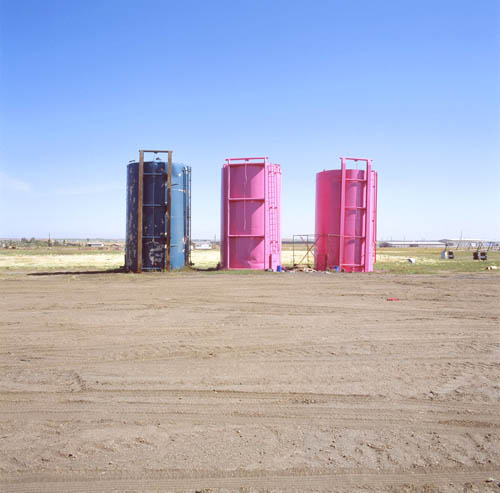 Dickinson, North Dakota by Karen Halverson
Dickinson, North Dakota by Karen Halverson

Flasher, North Dakota by Karen Halverson
Portfolio Showcase: Stephen Strom and Robin Dana

Death Valley from Dantes View by Stephen Strom

#8 Untitled by Robin Dana
Karen Halverson, Dakota Survey
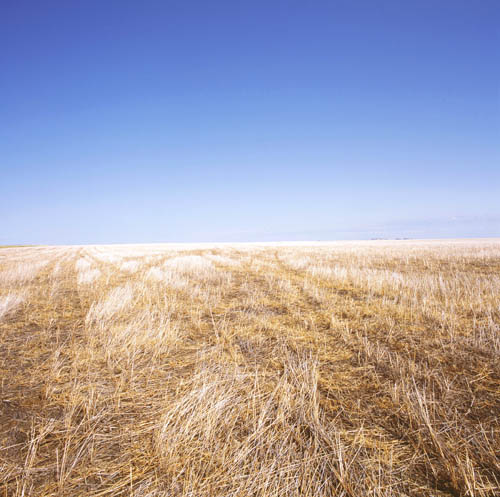 For nearly thirty years, Karen Halverson has been making photographs that comment on how we encounter, occupy, and alter the land. Much of her work concerns the landscape of the American West. In the summer of 2011, without itinerary, she drove to the Dakotas.
For nearly thirty years, Karen Halverson has been making photographs that comment on how we encounter, occupy, and alter the land. Much of her work concerns the landscape of the American West. In the summer of 2011, without itinerary, she drove to the Dakotas.
Having seen the Dakota landscape from the air, she looked forward to the experience of the Plains geometry on the ground. “I knew that, by and large, Dakota vistas would be broad and flat, making for a straight horizon line.” Heading west from Grand Forks, she quickly observed the roads running in straight lines as far as the eye could see, north – south or east – west and property lines and rows of trees called “shelterbelts” doing the same.
The Homestead Act, signed into law by President Lincoln in 1862, determined this landscape. Making use of geographical surveys, the law granted sections of land to settlers pledged to “improve” them. Euro-Americans were displacing Native Americans. Cultivated crops would replace native prairie grasses.
The landscape presented a pattern, based on flat terrain and especially on its land use. “I see the “Dakota Survey” images as landscape sections, emphasizing the lines and forms that both nature and human history have created.” Halverson chose the square photographic format for this series as an expression of the geometry she saw before her.
Bio: Karen Halverson’s work has been exhibited and collected by major American museums including the Smithsonian Institution, the Corcoran Gallery, the San Francisco Museum of Modern Art, the Los Angeles County Museum of Art, the Getty, and the Saint Louis Museum of Art. Recent solo exhibits include the Autry Center for the American West, Los Angeles CA; Huntington Library and Art Galleries, San Marino CA; and Nicole Fiacco Gallery, Hudson NY. Her exhibit at The Autry in Griffith Park, “The Marks we Make: Western Panoramas by Karen Halverson” continues through September 9, 2012.
In 2011, Halverson who resides in Columbia County, was awarded the Autry Center’s first Theo Westenberger Prize for Artistic Excellence, “transforming the way we see the American West.” The Beinecke Library at Yale University is in the process of acquiring her complete oeuvre for its permanent collection. Karen taught photography for several years at the International Center of Photography in New York and at the University of Southern California.
Above: Scenic, South Dakota by Karen Halverson
Portfolio Showcase: Landscape
Selected through competition, the gallery is also featuring portfolios by Stephen Strom, Illusions of Intimacy and Robin Dana, Watershed: How Industry has Changed the Water of the World
 Stephen Strom, Illusions of Intimacy
Stephen Strom, Illusions of Intimacy
Stephen Strom has spent most of his professional life as an astronomer, searching out patterns encoded in the light from distant stars. Over a research career spanning four decades, he has spent countless hours perched on remote mountaintops, looking upward mostly, but also contemplating the desert below during moments of quiet and solitude before and after nights spent at the telescope. During those times, he became seduced by the changing patterns of desert lands sculpted by the glancing light of the rising and setting sun as it reveals forms molded both by millennial forces and yesterday‘s cloudburst into undulations of shapes and colors.
Using long focal length lenses on his 4×5 and slr cameras to compress space Strom creates an illusion of intimacy, inviting viewers to look deeply into what light and earth together form. With a portfolio comprising images of landscapes, sandscapes and sandstone he aspire to create what the late essayist Ellen Meloy described as a “geography of infinite cycles, which, in terms geologic and human, is the story of the (earth) itself.”
Bio Stephen Strom spent his professional career as an astronomer. He has held appointments in at Harvard the Smithsonian Astrophysical Observatory, SUNY Stony Brook; and the Kitt Peak National Observatory in Tucson, AZ. At the University of Massachusetts in Amherst, MA where he worked for 15 years, he served as Chairman of the Five College Astronomy Department. In 1998 Strom returned to Tucson as a member of the scientific staff at the National Optical Astronomy Observatory served as an Associate Director of the Observatory. He retired from NOAO in May, 2007.
Strom’s photography, largely interpretations of landscapes, has been exhibited widely throughout the United States and is held in several permanent collections including the Center for Creative Photography in Tucson, the University of Oklahoma Art Museum, the Mead Museum in Amherst, MA, and the Boston Museum of Fine Arts. A monograph comprising 43 images, Earth Forms, was published in 2009 by Dewi Lewis Publishing. His photography complements poems and essays in three books published by the University of Arizona Press: Secrets from the Center of the World, a collaboration with Muscogee poet Joy Harjo; Sonoita Plain: Views of a Southwestern Grassland, a collaboration with ecologists Jane and Carl Bock; Tseyi (Deep in the Rock): Reflections on Canyon de Chelly co-authored with Navajo poet Laura Tohe; as well in : Otero Mesa: America’s Wildest Grassland, with Gregory McNamee and Stephen Capra, University of New Mexico Press (2008).
Robin Dana, Watershed: How Industry has Changed the Water of the World
 Robin Dana explores the relationships we have with our surroundings, a land which, though strip-mined and strip-malled, still dictates our sense of national identity. She focuses on the abstract beauty, lush colors, and surreal forms one might expect from images of monumental landscapes but actually represent the space between where the American brand of wild grandeur meets the reality of the ugly effects of our relentless pursuit of resources.
Robin Dana explores the relationships we have with our surroundings, a land which, though strip-mined and strip-malled, still dictates our sense of national identity. She focuses on the abstract beauty, lush colors, and surreal forms one might expect from images of monumental landscapes but actually represent the space between where the American brand of wild grandeur meets the reality of the ugly effects of our relentless pursuit of resources.
While the environments in which we live are constantly being transformed through mining, deforestation, building, and polluting and our idea of landscape as romantic, beautiful and benign is a cultural construction, Dana, with her large format camera, has found in our troubled environment,a weird beauty reminiscent of the now-alien landscapes of some of our great national parks. Here, in her images, are fantastical colors, isolated landforms, the persistence of nature in extreme conditions, and serenity.
Bio: Robin Dana, a native of Georgia, has exhibited her landscapes and photographs from from her ongoing series about the kaolin (white clay) mining industry in her hometown at galleries and museums throughout the east including the Altama Museum of Art, Vidalia, GA; Arlington Arts Center, Arlington VA; Chronogram Gallery, Kingston NY; Composition Gallery, Atlanta, GA; Agnes Scott College, Atlanta GA and Benton Museum of Art, Storrs CT. Her recent work from residencies in Washington DC, New York and travel abroad focuses on the scarification of our contemporary landscape includes photographs of the Hudson, Potomac, Savannah, Suwannee, Arno and Tiber River watersheds.
Dana has taught photography in the US and abroad, curated exhibitions, written on contemporary artists, and worked in book and magazine publishing. She lives and works in St Petersburg, Florida.
June 29 to July 29, 2012
Nadine Boughton and Fran Forman
Portfolio Showcase
Suzanne Gonsalez-Smith and Julie Brook Alexander
Nadine Boughton - True Adventures in Better Homes
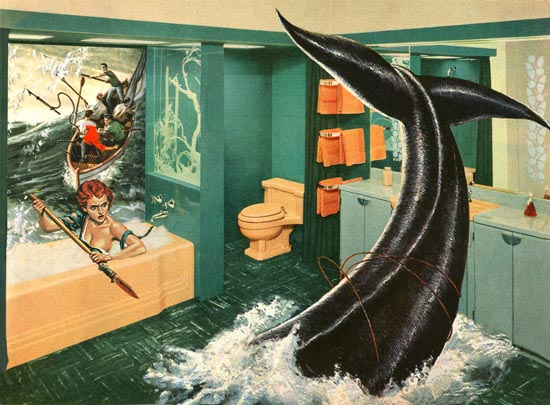
Sea Adventure by Nadine Boughton
Fran Forman - Alchemy of Memory, Selected Works

Miele’s Dream by Fran Forman
Portfolio Showcase – Suzanne Gonsalez-Smith and Julie Brook Alexander

Through a Glass Darkly by Suzanne Gonsalez-Smith

Into the Mandala by Julie Brook Alexander
 Nadine Boughton, “True Adventures in Better Homes”
Nadine Boughton, “True Adventures in Better Homes”
With a background in psychology, Nadine Boughton is always interested in what lies beneath appearances. When she discovered men’s adventure magazines of the 1950’s and early 1960’s at a flea market, she recognized them as rich artifacts of popular culture. “Seeing them as narratives from the collective psyche, I wondered how they would speak in an environment of orderly homes with sunny patios depicted in women’s magazines of the same era.”
In “True Adventures in Better Homes” these two worlds – men’s adventure magazines or “sweats” and Better Homes and Gardens - collide. Set against the backdrop of the McCarthy era, advertising, sexual repression, WWII and the Korean War, Boughton’s photocollages are filled with the tension of opposites: inner and outer spaces, wildness and domesticity, the sweat and the cool. Rich in detail and suggestion, both funny and shocking, they become perfect metaphors for the contradictions of those times.
Bio Nadine Boughton is a recipient of Photolucida’s “Top 50” Critical Mass 2011 competition. Her photocollages are featured in the Critical Mass exhibitions at Photo Center Northwest, Seattle, WA, Newspace Center for Photography, Portland, OR and RayKo Photo Center, San Francisco, CA. Her work has been exhibited at the Davis Orton Gallery, Hudson, NY, and in the Boston area at Carroll & Sons Gallery/Boston Drawing Project, Panopticon Gallery, Bromfield Gallery, Photographic Resource Center, Griffin Museum of Photography, Danforth Museum of Art. Her work has also been featured on-line in Lenscratch, Plates to Pixels, Flavorwire, Aparte 20 minutos, and Urbanautica. Boughton is a 2012 IRIS lecturer at The Annenberg Space for Photography, Los Angeles, CA, where she presented Adventures in Digital Collage.
Growing up in the shadow of George Eastman’s Kodak Tower in Rochester NY, she studied photography with Garry Winogrand, and at Visual Studies Workshop, Rochester, NY, and Lesley University Seminars, Cambridge, MA. She currently lives in Gloucester, MA where she teaches photography, collage and creative writing.
 Fran Forman, “The Alchemy of Memory” In merging photography with painting, portraiture with dreamed landscapes, technologies and generations, Fran Forman’s images blur the boundaries between the real and the unreal, re-imagining worlds that, like our own, remain forever a mystery. Challenging the arbitrary divisions that relegate certain aesthetic styles to a particular point in time; she is both influenced by and honors a range of forebearers including the Pictorialists, Surrealists, Joseph Cornell, Duane Michals, Ralph Meatyard and Jerry Uelsmann. Forman invites the viewer to look closely, to engage with her in an imaginative discourse, and to enter into a world of dreams and memory. “The visual narratives of my photo collages dissolve the boundaries of time; they connect me fantasies and dreams with the generations that have come before me and attempt to bring them back to life. Perhaps it’s my attempt to stop time.”
Fran Forman, “The Alchemy of Memory” In merging photography with painting, portraiture with dreamed landscapes, technologies and generations, Fran Forman’s images blur the boundaries between the real and the unreal, re-imagining worlds that, like our own, remain forever a mystery. Challenging the arbitrary divisions that relegate certain aesthetic styles to a particular point in time; she is both influenced by and honors a range of forebearers including the Pictorialists, Surrealists, Joseph Cornell, Duane Michals, Ralph Meatyard and Jerry Uelsmann. Forman invites the viewer to look closely, to engage with her in an imaginative discourse, and to enter into a world of dreams and memory. “The visual narratives of my photo collages dissolve the boundaries of time; they connect me fantasies and dreams with the generations that have come before me and attempt to bring them back to life. Perhaps it’s my attempt to stop time.”
Bio Fran Forman’s work is in the permanent collections of the Museum of Fine Arts, Houston and the Griffin Museum of Photography. Recent solo and featured exhibitions include Open Shutter Fine Art Photography, Dorango, CO; Cassandra Sohn Gallery, Stockbridge MA; Panopticon Gallery, Boston MA; Thompson Gallery, Weston MA; Pine Manor College, Boston MA and New Door Creative Gallery, Baltimore, MD.
Forman has won numerous awards and prizes for her photocollages. Most recently – in 2011, she was invited to exhibit and attend the Lishui (China) International Photo Festival and also won the second prize from the World Photography Gala Award (out of over 8000 entries) in the People and Portrait category. She was 1st place winner in the Fine Arts Collage sub-category for the Lucie Foundation’s International Photo Awards (IPA) in 2010 and was one of the Top 40 at the LA Center for Digital Art in 2010 and 2006.
Forman is a Resident Scholar at the Women’s Studies Research Center at Brandeis University and an adjunct professor in the Department of Fine Arts at Brandeis. She is a recipient of grants from the Sassower, Tyre, Tavris, and Puffin Foundations and was resident artist in 2010 at the Vermont Studio Center.
PORTFOLIO SHOWCASE Photo Collage / Photo Montage
Selected through competition, the gallery is also featuring portfolios
by Suzanne Gonsalez-Smith “Alchemic Vanitas” and Julie Brook Alexander, “Realities Reconsidered.”
 Suzanne Gonsalez-Smith, “Alchemic Vanitas”
Suzanne Gonsalez-Smith, “Alchemic Vanitas”
The imagery of Suzanne Gonsalez-Smith’s photomontages contains the metaphor of myths and dreams. Using the contemporary framework of her personal history she explores personal loss, religious and cultural identities and the inescapable essence of mortality.
In her layered self-portraits and appropriated photographs beauty and decay; life and death; traditional and cultural symbolism; and personal mythology and human experience co-exist. Cultural references in her images touch on the artist’s roots from childhood training in Catholicism to her Mesoamerican and Hispanic heritage.
Bio Susanne Gonsalez-Smith is an Assistant Professor of Art and Design at the University of North Dakota where she has taught photography since 2008. She has exhibited works nationally and internationally including The Main Street Gallery, Fredericksburg Center for the Creative Arts, The Center for Fine Art Photography, The Chautauqua Center for the Arts, The Hampton Gallery, Circulo de Bellas Artes (The Circle of Fine Arts) Madrid, Spain, Atelier Gallery 030202, Bucharest, Romania and most recently at the Borges Cultural Center in Buenos, Aires, Argentina. Gonsalez-Smith is the recipient of numerous grants and awards. She received her BFA at the University of New Mexico and her MFA from the University of Kentucky.
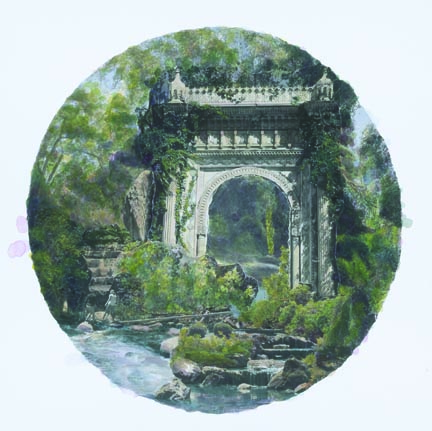 Julie Brook Alexander, “Realities Reconsidered.” Julie Brook Alexander creates visual poems. Using her black and white photographs, most often with the natural world as a base, Julie Brook Alexander populates her compositions with structures, people and objects in ways that encourage meditation as well as exploration and discovery. In addition to building images from her photographs, at times she will place actual objects such as leaves or shells onto her settings, resulting in a hybrid of landscape, collage, and still life. Photographing her built arrangements step by step, she works until she discovers the complete view. She then prints and hand paints the final black and white compostion. Finally, Alexander crafts a title to suggest a multiple approaches for interpreting her work.
Julie Brook Alexander, “Realities Reconsidered.” Julie Brook Alexander creates visual poems. Using her black and white photographs, most often with the natural world as a base, Julie Brook Alexander populates her compositions with structures, people and objects in ways that encourage meditation as well as exploration and discovery. In addition to building images from her photographs, at times she will place actual objects such as leaves or shells onto her settings, resulting in a hybrid of landscape, collage, and still life. Photographing her built arrangements step by step, she works until she discovers the complete view. She then prints and hand paints the final black and white compostion. Finally, Alexander crafts a title to suggest a multiple approaches for interpreting her work.
Bio Julie Brook Alexander’s work is in the collection of the Museum of Fine Arts, Houston, the Children’s Museum of Houston, the Musee de Arte Moderne in Rio de Janeirio Brazil, and numerous private collections. She has exhibited throughout the United States including at the Museum of Fine Arts, Houston, Houston Center for Photography, Hooks-Epstein Galleries, Houston and (upcoming) at the Center for Fine Art Photography, Fort Collins, Colorado. Examples of her collages were featured in a presentation at the Annenberg Space for Photography in Los Angeles representing new developments in the digital darkroom. Alexander is an adjunct instructor for the Fotofest Literacy Through Photography program in Houston, Texas.
May 18 to June 24, 2012
Mark Haven and Remi Thornton
Portfolio Showcase: Bob Wagner and Knoll+Cella
Mark Haven - The Commute

Rest Stop
Remi Thornton - From the Road
 Garage and Barn, Lawrence KS
Garage and Barn, Lawrence KS
Portfolio Showcase – On the Road
Bob Wagner - Kerouac’s Lowell, Mass.
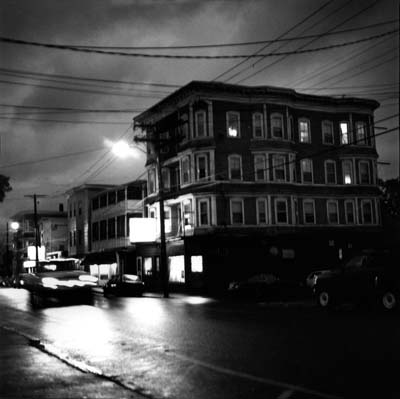
Knoll+Cella - Natural Setting

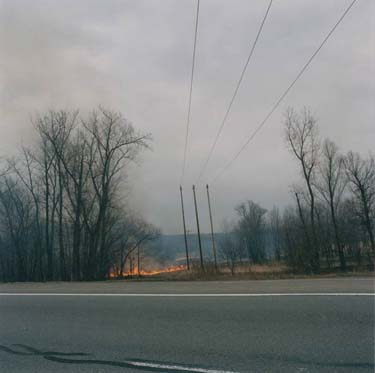 Mark Haven, “The Commute” Mark Haven began to photograph the 350-mile stretch of highway between Rochester, NY, where he taught photography, and New York City, where he resides, as a way to deal with the tedium of the weekly commute. “But as I began to look at the highway through my camera, to stop and to talk to the people along his route, I found that the drive was deepening my sense of America.”
Mark Haven, “The Commute” Mark Haven began to photograph the 350-mile stretch of highway between Rochester, NY, where he taught photography, and New York City, where he resides, as a way to deal with the tedium of the weekly commute. “But as I began to look at the highway through my camera, to stop and to talk to the people along his route, I found that the drive was deepening my sense of America.”
We are a country of cars and commuters, forever in transit. The road is an integral part of the American landscape and experience. That unique landscape, man-made and strange, is all but ignored by the motorist flying by at five miles above the legal speed limit. “After two years of photographing the road, I learned to enjoy the ride.”
Bio Mark Haven has combined a career of editorial photography, exhibitions and teaching for the past forty years. In the U.S. he has done assignment work for publications such as The New York Times Magazine, Newsweek, New York Magazine and Harper’s. His work has appeared in DoubleTake and Nest Magazine. In Europe he has published work in Zoom International (Italy), Zeit Magazin (Germany); Das Magazin (Switzerland) and Moda (Italy). A MacDowell Colony Fellow, his photographs have been exhibited recently in the 40th Reunion show at SoHo Photo Gallery and in shows at Gallery@49, Palazzo dell’ARengario, Milan, Italy, and the Noyes Museum of Art. His work is in numerous private and public collections including the New York Public Library and the Brooklyn Museum of Art.
Haven, a retired Professor from the Rochester Institute of Technology, has taught photography workshops in New York City at the International Center of Photography (ICP), Italy, Dubrovnik, Croatia and most recently, Havana, Cuba. He lives and works in New York City.
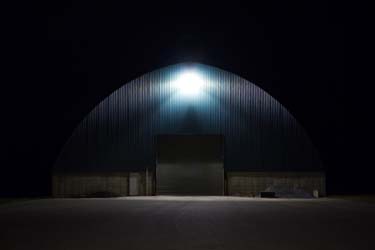 Remi Thornton, “From the Road” Remi Thornton’s eerily beautiful, cinematic night photographs in “From the Road” convey the artist’s sense of discovery as well as his tension. Here, small pockets of light throw his subjects of the commonplace – isolated dwellings, municipal service buildings and decayed structures into relief and his photographs become as much about negative space and the mystery of night as they are about the objects contained within.
Remi Thornton, “From the Road” Remi Thornton’s eerily beautiful, cinematic night photographs in “From the Road” convey the artist’s sense of discovery as well as his tension. Here, small pockets of light throw his subjects of the commonplace – isolated dwellings, municipal service buildings and decayed structures into relief and his photographs become as much about negative space and the mystery of night as they are about the objects contained within.
For Thornton, traveling to new and unfamiliar territory is crucial to his work. Taken to wandering empty parts of town and rural roads, his smartphone gives him confidence to just keep going. “So I let the road take me, follow my instincts and not really worry about where I end up.” He sees it as an occupational hazard that with his slow and erratic driving, sudden U-turns, parking in vacant lots or pointing his camera at private property he has attracted his share of suspicious glances from passing cars and police inquiries.
Bio Remi Thornton has exhibited his fine art photographs in solo and featured exhibitions at the Davis Orton Gallery, Hudson NY; BK Projects, Carroll and Sons Gallery/Boston Drawing Project, and Gallery Katz, Boston, MA. His work has been included in the RISD New England Biennial, New England Photographers Biennial at the Danforth Museum of Art, Framingham MA and “Small Works” at the Attleboro Museum, Attleboro, MA. He has also gained representation from stock agencies Getty Images, Glasshouse Images, and Jupiter Worldwide. A graduate of the Rhode Island School of Design, Thornton’s work is in a number of private and public collections including, most recently, Fidelity Investments.
Portfolio Showcase On the Road: Bob Wagner and Knoll + Cella
Selected through competition, the gallery is also featuring On the Road portfolios by Bob Wagner, “Kerouac’s Lowell, Mass.” and Knoll + Cella, “Natural Setting.”
 Bob Wagner, “Kerouac’s Lowell, Mass.” Kerouac’s Lowell, Mass. is an exploration of Jack Kerouac’s hometown that seeks out the places that influenced his life and writing in personal and metaphorical ways. The photographs are reflections on places he lived and encountered while growing up in Lowell. In our travels, we set out to find new vision, experiencing new revelations. Inevitably, these roads lead back to where we began, to one place – home. For Kerouac, Lowell is the one place that he never was able to fully escape. It holds a spiritual sense of place that transcends his words and the visionaries that surrounded him. It is the place he eternally rests.
Bob Wagner, “Kerouac’s Lowell, Mass.” Kerouac’s Lowell, Mass. is an exploration of Jack Kerouac’s hometown that seeks out the places that influenced his life and writing in personal and metaphorical ways. The photographs are reflections on places he lived and encountered while growing up in Lowell. In our travels, we set out to find new vision, experiencing new revelations. Inevitably, these roads lead back to where we began, to one place – home. For Kerouac, Lowell is the one place that he never was able to fully escape. It holds a spiritual sense of place that transcends his words and the visionaries that surrounded him. It is the place he eternally rests.
Bio Bob Wagner has worked as a photographer since 1981 based in New York City, Vienna, Austria and the Hudson Valley, where he currently resides. Shooting on assignment for magazines, his clients include Rolling Stone, Travel & Leisure, In Style, GQ, and Männer Vogue. As a Custom B&W Printer, he has printed exhibition photographs for Neil Selkirk/the Estate of Diane Arbus, the Estate of Inge Morath, and the Estate of Lucy Ashjian. His work has been exhibited in New York City at Sepia International and Robert Burge Gallery, in Los Angeles at Fahey/Klein Gallery and at the Tölzer Photobiennal in Bad Tölz, Germany. Currently, he works at the Samuel Dorsky Musuem of Art at SUNY New Paltz as preparator / exhibition designer. He received a BFA in Photography from Rochester Institute of Technology.
 Knoll + Cella, “Natural Settings” Knoll + Cella have camped throughout Europe. They observe that Italians tend to turn their living rooms inside out for the summer, carting their furniture and televisions to a more natural setting for the sake of cool breezes and card games. Northern campers in France tended to come to the same spot each year to a community they didn’t feel they had at home. In Germany they found couples who never camped the same place twice, for whom camping meant perfecting the art of making home away from home.
Knoll + Cella, “Natural Settings” Knoll + Cella have camped throughout Europe. They observe that Italians tend to turn their living rooms inside out for the summer, carting their furniture and televisions to a more natural setting for the sake of cool breezes and card games. Northern campers in France tended to come to the same spot each year to a community they didn’t feel they had at home. In Germany they found couples who never camped the same place twice, for whom camping meant perfecting the art of making home away from home.
According to the artists, there are many reasons people, themselves included, camp: freedom of movement, interaction with nature, nostalgia, escape, peace and quiet, homelessness, exhibitionism, voyeurism, cheap accommodations, a base, a place to play house, a place to hold social events, a way to test survival skills, a place to come back to. But their reasons for photographing these site stems mainly from a curiosity about their neighbors – seeing how other people make home even if that home is artificial, staged and/or idealizations. Recently transplanted to Hawaii, they imagine their project will evolve with the deserts, rain forests and quicker pace of American camping that they will soon experience.
Bio Knoll+Cella have been collaborating on projects since 1998. Their creative practice is driven by curiosity and questions of cultural identity. Many projects share an attention to the built environment, specifically temporary architecture and ideas about the use of space. They work in “post-documentary” photography, video, experimental film and architectural projections.
Klaus Knoll has work in the collections of the Museum Ludwig, Cologne; Bibliotèque Nationale, Paris; National Austrian Fine Art Photography Collection, and jointly with Cella in the the Museum of Modern Art, Salzburg. Klaus has exhibited at the Tokyo Shinjuku Nikon Salon, Berlin Brennpunkt/DGPh; Alfred Lowenherz Gallery, New York; and with Cella at the Museum of Modern Art, Salzburg and the Art Complex Museum in Boston. He holds a PhD in Literature and Communication, University of Salzburg, Austria. She holds an MFA in New Media and Cultural Studies, Vermont College. Klaus is an assistant professor of photography at University of Hawai’I Manoa. Most recently they were visiting artists at the Lingnan University Visual Studies Program in Hong Kong.
April 6 to May 13, 2012
Richard Edelman & Keiko Hiromi
Portfolio Showcase: Moira Barrett and Michael Darough
Richard Edelman
The Liminal Portrait

Liminal Portrait #43 / Lucinda
Keiko Hiromi
Drag Queen
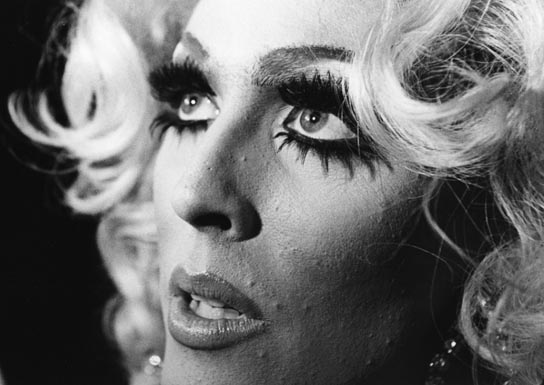
Beautiful Raquel
Portfolio Showcase: The Self-Portrait
Moira Barrett, Regarding Beauty: Notes on Turning 60

January 28, 2012
Michael Darough, Portfolio – Twins

Lost
 Richard Edelman, “The Liminal Portrait” Richard Edelman’s photographs reveal transitional moments that combine the actions of a live model with the impressions formed against a unique, hand-built pinscreen. The subjects present themselves with flowing body movements. The impressions that linger, as the model moves along the screen, are a whisper of the pose held moments ago, while light plays on the luminescent polymer pins. “The beauty of making photographs in this manner is that each session becomes, in effect, a performance.”
Richard Edelman, “The Liminal Portrait” Richard Edelman’s photographs reveal transitional moments that combine the actions of a live model with the impressions formed against a unique, hand-built pinscreen. The subjects present themselves with flowing body movements. The impressions that linger, as the model moves along the screen, are a whisper of the pose held moments ago, while light plays on the luminescent polymer pins. “The beauty of making photographs in this manner is that each session becomes, in effect, a performance.”
Bio Richard Edelman’s photographs are included in the collections of: Metropolitan Museum of Art (NY), Canadian Centre for Architecture (Montreal), Brooklyn Museum (NY), Polaroid International Collection (Offenbach), Bibliothèque Nationale (Paris) and Everson Museum of Art (Syracuse, NY). Other of his work is included in the MoMA artist book collection, Whitney Museum of American Art, and the Sackner Archive of Concrete and Visual Poetry. Edelman has taught photography at William Paterson University (NJ), the New School, the School of Visual Arts and International Center for Photography and has received fellowships from the NY Creative Artists Public Service Program and the Center for Photography at Woodstock. He is the principal of Woodstock Graphics Studio, which specializes in creative production work for artists.
 Keiko Hiromi, “Drag Queen” Keiko Hiromi first encountered Jacques Cabaret, one of the oldest drag queen venues in Boston in 2007. Uncertain at first and feeling completely out of place, “as soon as the show commenced, I became transfixed by the performers’ raw and uncut power.” As time went on Hiromi learned the performers’ stories and developed ongoing relationships with several. When she came back again in 2011 she had changed her stance. “Before, I was afraid I would interfere with the group dynamics and ruin my ‘documents’ but I now realize I have to be involved to make the picture.” As Paula Tognarelli, executive director of the Griffin Museum of Photography notes, “Keiko Hiromi is more than a casual observer. The connection and trust-bond formed between subject and witness is evident in her intimate and vibrant portraits of the drag queens of Jacques Cabaret.”
Keiko Hiromi, “Drag Queen” Keiko Hiromi first encountered Jacques Cabaret, one of the oldest drag queen venues in Boston in 2007. Uncertain at first and feeling completely out of place, “as soon as the show commenced, I became transfixed by the performers’ raw and uncut power.” As time went on Hiromi learned the performers’ stories and developed ongoing relationships with several. When she came back again in 2011 she had changed her stance. “Before, I was afraid I would interfere with the group dynamics and ruin my ‘documents’ but I now realize I have to be involved to make the picture.” As Paula Tognarelli, executive director of the Griffin Museum of Photography notes, “Keiko Hiromi is more than a casual observer. The connection and trust-bond formed between subject and witness is evident in her intimate and vibrant portraits of the drag queens of Jacques Cabaret.”
Bio Keiko Hiromi is an emerging Japanese photographer based in Boston, MA and Tokyo, Japan. She has exhibited in solo shows at the Bauhaus Gallery in Tokyo, and in group shows in the US including Panopticon Gallery, Boston; The Center for Fine Art Photography, Fort Collins CO; the Texas Photographic Society and Foundry Art Centre in Chicago. Her work will be shown (May 22 to June 14) in the Pre-Festival Boston Photographer’s Exhibition in conjunction with the Magenta Foundation’s Flash Forward Festival (June 7-10, 2012). Hiromi received the Griffin Museum of Photography’s Emerging Artist Award in 2006.
Portfolio Showcase Self-Portraits: Moira Barrett and Michael Darough
Selected through competition, the gallery is also featuring self-portrait portfolios by Moira Barrett, “Regarding Beauty: Notes on Turning Sixty” and Michael Darough, “Twins.”
Moira Barrett: “Regarding Beauty: Notes on Turning Sixty”
 Using an iphone and SLR, Barrett has embarked on a “365 project.” For the year she is 60, she takes two pictures a day – first, of a scene she finds pleasing (with the iphone) and next of an intellectually challenging self-portrait (with the sophisticated SLR.) The first image acts as an inspiration for the second.
Using an iphone and SLR, Barrett has embarked on a “365 project.” For the year she is 60, she takes two pictures a day – first, of a scene she finds pleasing (with the iphone) and next of an intellectually challenging self-portrait (with the sophisticated SLR.) The first image acts as an inspiration for the second.
She asks of herself: how has the project changed your self-image? Have you become a different person, better artist, different artist? And – do you at last know what beauty is?”
Moira Barrett is a fine art photographer based in New England. Her work has been featured in numerous regional exhibitions and galleries, including the Boston Young Contemporaries 2011, the Susan Maasch Fine Art Gallery, the Davis-Orton Gallery, the NAVE Gallery and the Cambridge Art Association’s Northeast Prize Shows. Her work has been reviewed in the Women’s Review of Books. Barrett resides in Cambridge MA with her wife Jo and daughter, Annie.
Michael Darough: “Twins”
 Much of Michael Darough’s work deals with identity. In “Twins” he has shaped an environment where two distinct versions of himself coexist in backdrops depicting scenes of everyday life. Through his creation, his imaginary twin, Marcus, he explores the different facets of himself in depictions of intimate occurences. “By constructing a fallacy, I am able to give a truthful perspective of myself.”
Much of Michael Darough’s work deals with identity. In “Twins” he has shaped an environment where two distinct versions of himself coexist in backdrops depicting scenes of everyday life. Through his creation, his imaginary twin, Marcus, he explores the different facets of himself in depictions of intimate occurences. “By constructing a fallacy, I am able to give a truthful perspective of myself.”
Michael Darough is a Visiting Assistant Professor of Photography at Lycoming College in Williamsport, PA. A native of St. Louis, in 2010 he was selected for the “Brooks Introduces Showcase” at the Memphis Brooks Museum of Art. He has also exhibited at Arizona State University, at the University of Memphis Art Museum, and the Medicine Factory in Memphis. Darough received an MFA in photography from the University of Memphis.
To our 2011 exhibiting artists, many thanks for a great year!
2011 Exhibiting Artists (in rows top to bottom, left to right) Shelby Lee Adams, Nandita Raman, Allison Leach, Howard Saunders, Laura Radwell, Amy Madden, Tomoko Daido, Stefanie Klavens, Gordon Stettinius, Jeff Jacobson, Bojune Kwon Michael Hunold, Gary Duehr, Meg Birnbaum Susan Barnett, Robert Kalman, Linette Miller, Susan deWitt
PHOTOBOOKS!!2011
Photographers and Photobooks
November 18 to December 18, 2011
Reception: Saturday, November 19 6-8pm
 Above: photobooks by best of show artists:
Above: photobooks by best of show artists:
Jonathan Lipkin, Sara Macel, Amanda Penecale and David Morris Cunningham.
The self-published photobook provides an extraordinary opportunity for photographers to present their work directly to the public. The photobook itself can be a work of art. The Davis Orton Gallery is pleased to present twenty outstanding photobooks selected through an international photobook competition. Photographs by four “best of show” artists will also be exhibited.
All photobooks and prints will be available for sale during exhibition and all books will be available for the next year in the Photobook 2011 Catalog.
20 Artists, Photobooks and Websites
Khamra Obscura by Jon Michael Anzalone
Conversations with Dan McNulty in Jersey City by Andrew Bovasso
Remembrance of Things Present by David Morris Cunningham (BOS)
Cleavage by Bethany Fancher
Light Source by Deena Feinberg
The Dancer as the Invisible Girl by Ellen Feldman
Urban Woods by Dorothy Gantenbein
Nocturnes by Frank Gimpaya
Looking Up by Michael Hunold
House Portrait: Harrison Inside by Miki Iwamura
Natural History by Nikki Johnson
Livingston County by Jonathan Lipkin (BOS)
May the Road Rise to Meet You by Sara Macel (BOS)
Food by Mary Parisi
Trust in Passing Hours by Amanda Penecale (BOS)
I Am Because We Are: African Wisdom in Image and Proverb by Betty Press
Stations of the Scale by Andrea Rosenthal
Areth: An Architectural Atlas by Adam Ryder
Postcards from an Irish Holiday by Orla Sloyan
The Boston Years: The Music Scene in Photographs by Cathy Vanaria.
*A project from Mexico, Mexico in Your Senses, initiated by photographer Willy Sousa,
that resulted in both a book and an international exhibition, will also be exhibited.
PHOTOBOOK 2011 CatalogThe PHOTOBOOK 2011 Catalog will remain on the gallery site for one year.
Street Photography / Surveillance
October 14 to November 13, 2011
Reception: Saturday, October 15, 6-8 pm
Tomoko Daido

Garbage Man, 7″x7″, silver gelatin print, Tomoko Daido
Bojune Kwon
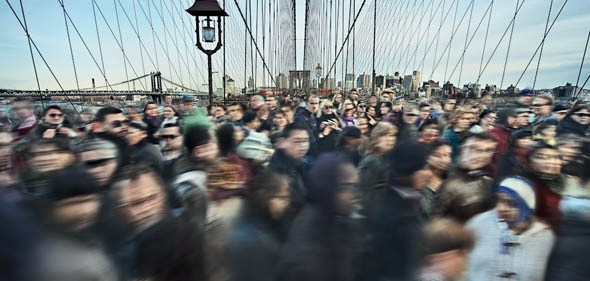
The Neurosis in the City 6 (Brooklyn Bridge) 42″ x 28″, pigment print by Bojune Kwon
With Portfolios by Gary Duehr and Susan A. Barnett
 CCTV1 from series Closed Circuit 17″ x 22″ pigment print on watercolor paper by Gary Duehr
CCTV1 from series Closed Circuit 17″ x 22″ pigment print on watercolor paper by Gary Duehr
The Tree from series Not In Your Face, 12″x18″, pigment print by Susan A. Barnett
About the Artists and Their Work
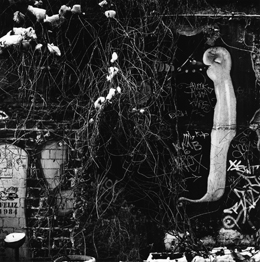 Tomoko Daido discovers suspicious and mysterious sites as she walks for hours around the city. Whether in the US or Japan, her black and white images, made with both a medium format camera and a plastic camera, suggest a parallel world to the everyday we inhabit. For Tomoko, there is a thrill and an instantaneous response to each find. This is followed by contemplation through the slow photographic process of the darkroom. “The fixed image becomes an interface between what was there and my perception of what was there.” (photograph: “Feliz”, 7″x7″, silver gelatin print by Tomoko Daido)
Tomoko Daido discovers suspicious and mysterious sites as she walks for hours around the city. Whether in the US or Japan, her black and white images, made with both a medium format camera and a plastic camera, suggest a parallel world to the everyday we inhabit. For Tomoko, there is a thrill and an instantaneous response to each find. This is followed by contemplation through the slow photographic process of the darkroom. “The fixed image becomes an interface between what was there and my perception of what was there.” (photograph: “Feliz”, 7″x7″, silver gelatin print by Tomoko Daido)
Bio
Born in Japan, Tomoko Daido lives and works in New York City. She is a member of the photographers’ group, 35MINUTESMAN, and has exhibited at Geoffrey Young Gallery in Great Barrington, Fordham University’s Center Gallery and APS Studio 35 in Tokyo. Tomoko’s book, White Elephant (2007) was selected for inclusion in PHOTOBOOK!!2010, an exhibition of twenty outstanding photobooks at the Davis Orton Gallery in 2010.
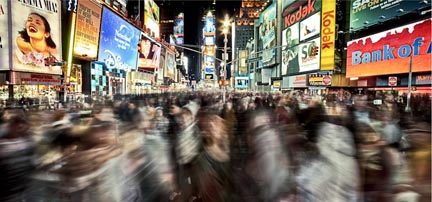 Bojune Kwon, in his series, Neurosis, restructures reality to present the overwhelming impact of the city. Each photograph in this series, digitally built from hundreds of individual exposures, is a location familiar to most as an iconic view of New York but this time seen through the eyes of a newcomer, adjusting to a very fast paced, impersonal world. “In spite of the flood of people that inhabit the city, I am often struck by the difficulty of making real connections with others.”
Bojune Kwon, in his series, Neurosis, restructures reality to present the overwhelming impact of the city. Each photograph in this series, digitally built from hundreds of individual exposures, is a location familiar to most as an iconic view of New York but this time seen through the eyes of a newcomer, adjusting to a very fast paced, impersonal world. “In spite of the flood of people that inhabit the city, I am often struck by the difficulty of making real connections with others.”
Bio: Bojune Kwon is a fine arts and commercial photographer living and working in New York City. Kwon, whose fine arts work in black & white and color centers on the built environment, has received several international awards for his images including from the Sappi/Magno Intensity Photographic Competition and the Epson International Photographic Pano (Panoramic) Awards. Born in Korea, Bojune studied photography at Seoul’s Kyung-Il University and holds a Masters degree from New York City’s School of Visual Arts in digital photography. (photograph: “The Neurosis in the City 1″ 42″ x 28″ [and other sizes] by Bojune Kwon)
 Gary Duehr‘s series, “Closed Circuit” is based on closed circuit television (CCTV) from anonymous global sources, “Closed Circuit” examines the ubiquitous state of Big Brother’s watchful eye. Just as the footage—taken from hotels and airports and parking lots and elevators—possesses an air of anonymity, so do the subjects, who are reduced to faceless projections. The closer the CCTV zooms in, the less concrete information remains. Shadowy bodies float through glaring spaces: they could be anyone doing anything, any where at any time. Duehr points out, “The very process of singling them out, sometimes with a red target for emphasis, gives their mundane behavior a sinister tint. Recorded, ID’d, processed. tagged. Who can keep their heads above the deluge?” (photograph: CCTV-2 from Closed Circuit by Gary Duehr. Pigment prints on watercolor paper, 17 ” x 22 “)
Gary Duehr‘s series, “Closed Circuit” is based on closed circuit television (CCTV) from anonymous global sources, “Closed Circuit” examines the ubiquitous state of Big Brother’s watchful eye. Just as the footage—taken from hotels and airports and parking lots and elevators—possesses an air of anonymity, so do the subjects, who are reduced to faceless projections. The closer the CCTV zooms in, the less concrete information remains. Shadowy bodies float through glaring spaces: they could be anyone doing anything, any where at any time. Duehr points out, “The very process of singling them out, sometimes with a red target for emphasis, gives their mundane behavior a sinister tint. Recorded, ID’d, processed. tagged. Who can keep their heads above the deluge?” (photograph: CCTV-2 from Closed Circuit by Gary Duehr. Pigment prints on watercolor paper, 17 ” x 22 “)
Bio In 2007 Gary Duehr was chosen as a Best Emerging Artist in New England by the International Association of Art Critics. In 2003 Duehr received an Artist Grant in photography from the Massachusetts Cultural Council, and his work has been featured in museums and galleries including the Institute of Contemporary Art, Boston, MA; Exit Art, Umbrella Arts, and New York Arts, New York, NY; Gallery Tsubaki, Tokyo, Japan; SKC Gallery, Belgrade, Yugoslavia; and Museo Nacional de Bellas Artes, Havana, Cuba. Past awards include grants from the LEF Foundation and the Rockefeller Foundation. His public artworks include a photo installation funded by the Visible Republic program of New England Foundation for the Arts, and a commission from the MBTA (Massachusetts Bay Transit Authority) for a permanent photo installation at North Station. Duehr has written about the arts for journals including ArtScope, Art New England, Art on Paper, Communication Arts, Frieze, and Public Culture.
 Susan A. Barnett started her project, “Not In Your Face”, as a dialogue with the viewer about judgment… how we make assumptions and decisions based upon what people wear, their choices in accessories and style considerations. Each of her subjects reveal parts of themselves that advertise their hopes, ideals, likes, dislikes, political views and personal mantras.While in each image, the t-shirt is starkly evident, these photographs are not about the t-shirt per se but about identity, validation and perception. In shooting from the back, Barnett challenges expectations about the portrait as in image of the face with equally revealing portraits of individuals through not only the message on the shirt but body type, dress and demeanor. (photograph: I’m Muslim from Not in Your Face, 18″ x 12″ pigment print by Susan A. Barnett.)
Susan A. Barnett started her project, “Not In Your Face”, as a dialogue with the viewer about judgment… how we make assumptions and decisions based upon what people wear, their choices in accessories and style considerations. Each of her subjects reveal parts of themselves that advertise their hopes, ideals, likes, dislikes, political views and personal mantras.While in each image, the t-shirt is starkly evident, these photographs are not about the t-shirt per se but about identity, validation and perception. In shooting from the back, Barnett challenges expectations about the portrait as in image of the face with equally revealing portraits of individuals through not only the message on the shirt but body type, dress and demeanor. (photograph: I’m Muslim from Not in Your Face, 18″ x 12″ pigment print by Susan A. Barnett.)
Bio: Susan A. Barnett has exhibited her work at, among others, Clampart Gallery, Griffin Museum of Photography, New York Photo Festival, Capital One Corporate Gallery , Houston Center for Fine Art Photography, Philadelphia University of the Arts Gallery, Pacific Center NW, and Espace Dupon. Her series “Not In Your Face” has been seen in Lensculture, Popular Photography Magazine, Lenscratch, Social documentary.net, Heinz Foundation vimeo, Pittsburgh Tribune, PDN, Oitzarisme, Fotovisura, Artslant, and Projekt 30. “Not In Your Face” has won awards from Photo Review , IPA, Px3, Pollux awards, WPGA, Texas Photographic Society, Photo World Annual Awards, Critical Mass, Hey Hot Shot Contender and New York Photo Festival. The book “Not In Your Face” will be published in 2012 from the Silas Finch Foundation, New York.
Exhibition: September 9 to October 9, 2011
Reception: Saturday, September 10, 6-8 pm
Book Signing: Saturday, October 1, 6-8 pm
“salt & truth” by Shelby Lee Adams, Candela Books, 2011
Shelby Lee Adams, photographer
salt & truth
Black and white photographs from Shelby Lee Adams’ new book “salt & truth” Candela Press, 2011 – to be released October 2011 and Shelby’s recent color work.
“It is the total inclusive spirit of the mountaineer living in the hollers that motivates and interests me…..The culture is very multi-layered in expressing the fullness of life.”
Robbie and Tyler on Wrecker, 2003 © Shelby Lee Adams
Steve and Francis © Shelby Lee Adams
Salt & Truth is the fourth book from photographer Shelby Lee Adams. A collection of 80 new photographs, taken over the past eight years and which continue a project the artist has been working on now for over 30 years. Together these powerful images of the hollow dwellers of eastern Kentucky, represent a singular access to a world that is historically not very trusting of outsiders, by a photographer who is widely recognized as a master of the medium.
Using multiple strobes and a large format camera, Adams achieves both a special quality of light and a depth of field that keeps everything in focus. Adams’s composition – marked by sharp division of space and clarity of detail – places the viewer in the role of omniscient visitor to this otherwise private moment – juxtaposing both claustrophobic familial closeness and the wide open space of the landscape itself. Adams himself, having grown up in Kentucky and familiar with the mountain culture, is both an insider and an outside observer – a dichotomy the documentary photographer must frequently confront.
Shelby Lee Adams bio
Shelby Lee Adams was born in 1950 in the Appalachian Mountains of Eastern Kentucky. A photographer renowned for his environmental portraiture, Appalachia is not only Adams’s birthplace, but the subject of his photographs as well. Adams was awarded a Guggenheim Fellowship in 2010. His work has been featured in three monographs: Appalachian Portraits (1993), Appalachian Legacy (1998), andAppalachian Lives (2003).
Adams’ photographs are represented in many major permanent collections; including the Art Institute of Chicago, Chicago, Illinois; International Center of Photography, New York, New York; Musee De L’Elysee Lausanne, Lausanne, Switzerland; The Museum of Modern Art, New York, New York; The National Gallery of Canada, Ottawa, Canada; Stedelijk Museum, Amsterdam, Netherlands; Time Life Collection, Rockefeller Center, New York, New York; Victoria and Albert Museum, London, England; Whitney Museum of American Art, New York, New York.
(above :Lloyd Deane and Grandbaby © Shelby Lee Adams)
August 5 to September 4, 2011
Jeff Jacobson, photographer
Melting Point and The Last Roll
Photographs from Jeff’s book “Melting Point” Nazraeli Press, 2006 and his latest series/upcoming book, “The Last Roll”
Jeff Jacobson’s photographs are disorienting, mysterious and beautiful. Composed in the camera with no additional manipulation, they pull us in to an unreal world that emerges from the every day.
From “Melting Point”
 Shanghai, China, 2002, 17″ x 22″ by Jeff Jacobson
Shanghai, China, 2002, 17″ x 22″ by Jeff Jacobson Los Angeles, California, 1993, 40″ x 60″ by Jeff Jacobson
Los Angeles, California, 1993, 40″ x 60″ by Jeff Jacobson
Melting Point
In his book, Melting Point (Nazraeli Press, 2006), Jacobson writes of over 20 years observations of what he describes as “a meltdown period, when old norms of politics, religion and even photography are changing…. In working from the paradox of a curious melding of beauty and fear these photographs emerged.” Of Melting Point, Mark Feeney in the Boston Globe writes: “For all his theatricality, Jacobson is as much realist as expressionist. In strictly visual terms, these images are highly arresting. Seen also in technical terms, they become objects of wonder.”
From “The Last Roll”
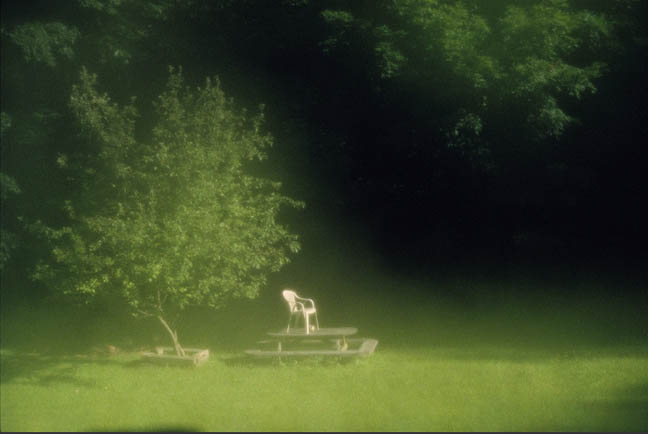 Untitled, from The Last Roll, 17 x 22″ by Jeff Jacobson
Untitled, from The Last Roll, 17 x 22″ by Jeff Jacobson

Untitled, from The Last Roll, 17 x 22″ by Jeff Jacobson
The Last Roll
In 2004, Jeff Jacobson was diagnosed with lymphoma. After each chemo session, he and his wife, Marnie Andrews, would retreat to their home in the Catskills from their apartment in New York. By 2005 they gave up their apartment and moved to the mountains, permanently. As Jeff recovered, “my photographic universe expanded to the yard, the street, the river and into Woodstock.” In 2006, Kodak announced it had discontinued the film, Kodachrome, that Jeff had used throughout his career. He purchased and stored as much film as he could.
“Coming to the twin realizations that my time on the planet and my supply of film are both finite had a liberating effect on me.” Since then, Jeff has concentrated on what he holds most dear: his family, home and the earth. The Last Roll is a project that is just about complete and will be the content of his next book. Many of the images from this series will be seen for the first time at the Davis Orton Gallery.
Jeff Jacobson bio
Jeff Jacobson trained as a lawyer and practiced as an ACLU attorney in the South in the early 70’s. It was at that time that his interest in photography grew as he photographed southern jails and rural areas. After completing a workshop with Charles Harbutt in 1974, Jacobson quit the law and devoted all his energies to photography. By 1976 he was photographing in color and experimenting with strobes and long exposures, a now familiar technique that he pioneered.
Jeff’s photographs are in the permanent collections of many museums in the United States and Europe including: the Whitney Museum of American Art, The San Francisco Museum of Modern Art, The Walker Arts Center, Minneapolis MN, George Eastman House, Rochester NY and the Smithsonian Institute. His work has been published in magazines including: The New York Times Magazine, Fortune, Time, Geo, Stern and Life. His photographs have been published in two monographs: My Fellow Americans, University of New Mexico Press (1991) and Melting Point, Nazraeli Press (2006). Jacobson was a Magnum photographer from 1978-1981. He left Magnum to help found Archive Pictures. He has been awarded grants from the National Endowment for the Arts and the New York Foundation for the Arts.
Jeff Jacobson is a highly respected teacher. He has taught workshops at the International Center for Photography, Anderson Ranch, and The Center for Photography at Woodstock; he also offers private intensive workshops from his home in the Catskills.
June 24 to July 31, 2011
Reception: Saturday, June 25 6-8pm
Closing Reception: Saturday, July 30, 5-8pm
Theaters and the Theatrical
Stefanie Klavens, photography
“The Art of the Movie Theater: A Disappearing American Tradition”
Nandita Raman, photography
“Cinema Play House” – Old Cinemas (built 1930′s to 60′s) in India
PortfolioX2 photographers
An innovative exhibition format that combines electronic and hands-on portfolio presentations. See “PortfolioX2 Submissions” for all the information. Next deadline: August 31: Street Photography and Surveillance.
About the Artists and the Work
Stefanie Klavens
During Hollywood’s golden age nearly every American city and town had its own movie palace. Designed in a wide range of flamboyant architectural styles, America’s historic theaters have entertained millions, first as vaudeville houses and later as movie theaters. After WWII, many downtown palaces closed. Some architectural treasures have been saved, finding new life as performing arts centers, but most are lost forever.
“My attachment to these theaters is both artistic and personal. I’ve had a long-held interest in 20th-century American popular culture and, growing up in Baltimore, I went to the Senator, a 900 seat theater built in 1939. Not surprisingly, it was among the first venues I photographed.”
From the ornate city palace to the intimate small-town movie house, Klavens strives to record this rapidly vanishing era in American social history using long exposures in interiors and the light at dusk for exteriors to bring the beauty of these theaters to life.
Bio
Boston-based photographer Stefanie Klavens’ recent solo exhibits include the National Heritage Museum, Lexington, MA and New England Institute of Art, Brookline, MA. She has exhibited at the Judi Rotenberg Gallery, Photographic Resource Center, Boston Center for the Arts, and the Danforth Museum. Her work has appeared in Yankee Magazine, the Boston Globe, and on the cover of Harper’s Magazine.
A Massachusetts Cultural Council Artist Grant finalist, Klavens received her BFA and Fifth Year Certificate from the School of the Museum of Fine Arts, Boston, Massachusetts.
Nandita Raman

India has a long association with cinema. The first indian feature film was made in 1899. Today the country is one of the largest film producers, making more than a thousand films a year, for an audience of 3.6 billion.
Nandita Raman’s mother’s family owned the first talkies cinema in her hometown, Varanasi, India. Most of the single screen theaters that were built were designed by the owners themselves. Some were designed practically, while others provided an opportunity for owners to express their fancies. In the 1990’s, when home video became popular in India, many theaters including Raman’s family’s closed down. While cinema halls are coming back across India, they are standardized multiplexes.
Raman photographs the old cinema halls in India built between 1930 and 1960. She is interested in the idiosyncrasies that exist in the cinema spaces. “These theaters seemed to contain cues to the psyche of the people who built and who occupy them. It is these cues that I’m interested in; manifestations of interaction between the space and the people, over time.”
Bio
Nandita Raman is a reciepient of the Sarai Independent study Fellowship ’06 and the Daylight/ CDS Project Prize, 2010. She has exhibited in India and the United States, most recently atArtpost in South Bend, Indiana. This Spring the Snite Museum of Art at the University of Notre Dame acquired an edition of the entire series of her Cinema Play House photographs. They will be exhibited at the Snite Museum, Fall 2011. Nandita has published in Moment, Elle India, Flair Italy, Outlook, and Timeout Delhi. Raman, born in Varanasi, India, comes from a graphic design and filmmaking background and is currently pursuing MFA at ICP-Bard in New York City.
Michael Hunold
 Michael Hunold photographs are a visual diary of his day-to-day working life as a lamp operator – electrician in the world of motion picture and television production. “I am interested in the life of working people behind the screen and the environment in which illusions are manufactured. My photographs are a private response to the way the production process, especially light and the process of lighting, transform the working spaces (locations, soundstages, sets) and machinery into places and objects of potential beauty and mystery.”
Michael Hunold photographs are a visual diary of his day-to-day working life as a lamp operator – electrician in the world of motion picture and television production. “I am interested in the life of working people behind the screen and the environment in which illusions are manufactured. My photographs are a private response to the way the production process, especially light and the process of lighting, transform the working spaces (locations, soundstages, sets) and machinery into places and objects of potential beauty and mystery.”
Allison Leach

In this series of photographs, Allison Leach depicts fictitious explorers of her creation who never got anywhere nor found anything. She bases her reenactments on a mixture of actual failed explorers (Scott, Livingstone), amalgamations of incompetent historical expeditions (Franklin Expedition, Donner Party), and fantastical disasters of her own whimsy. “My constructed photographs examine both the hubris of Western exploration and, reflexively, the power of photography itself.”
Allison Leach’s photography has been exhibited in London and New York City, and is represented in the permanent collection of the Smithsonian Museum (Washington, D.C.). She has received numerous awards for her commercial portrait work, including publication in several Communication Artsphotography annuals. She has been commissioned byVanity Fair, Time, Fortune, Interview, Esquire, The New York Times Sunday Magazine(among others), and served as a Contributing Photographer for People Magazine for seven years. Leach, who lives and works in upstate New York, is a MARK10 artist of the New York Foundation for the Arts (NYFA) and has served on the faculty of The Rocky Mountain School of Photography, Missoula, Montana since 2004, where she teaches Studio Lighting and Editorial Portraiture each summer.
May 12 to June 19, 2011
Reception: Saturday, May 14, 6-8 pm
Overlays
Amy Madden, mixed media, “Batik Weeds”
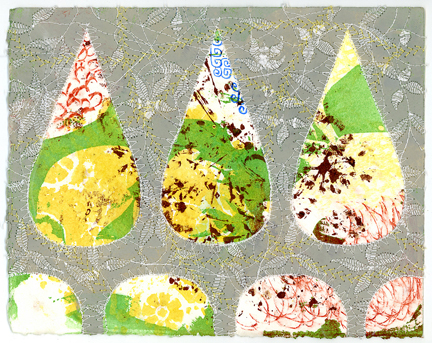
Inspired by both contemporary feminist artists and practitioners of traditional domestic arts, in this series of small works Amy Madden handprints flora onto paper; makes rubbings of textured surfaces, layers and scrapes beeswax, applies washes of color; overlays patterns and forms to define space and finally adds sewing by hand or machine. The intimate size of these paintings, the use of traditional feminine practices such as embroidery and the use of thread, wax and tacks all add to the delicacy and tactility of each piece.
Laura Radwell, photo-based abstracts,
“Impressions of Berlin and Other Works”
Laura Radwell’s attention is drawn to “strangely poignant” variations in color and geometry found in the surface deterioration of common objects. “The work begins when she photographs aspects of the world, for instance corroded metal, textured tree bark, chipping paint, that point to imperfection and impermanence. From these photographs, she creates a palette, layering them as if applying colors from tubes of paint. The images begin to lose their literal quality and are transformed into abstractions that invite the viewer to suspend habitual perception. Something imagined is created out of something real. Radwell’s most recent work is based on her impressions of Berlin, a city she has explored intensely over the past decade. Here her process is also informed by the compelling details of history she finds everywhere.
PortfolioX2
An innovative exhibition format that combines electronic and hands-on portfolio presentations. See “PortfolioX2 Submissions” for all the information. Next deadlines: May 11 and August 31.
AND PortfolioX2: (see images below)
Robert Kalman: photography - Larreynaga
Gordon Stettinius and Terry Brown: photography - Mangini Studio Series
The Davis Orton Gallery introduces a new gallery initiative, portfolioX2 (portfolio times 2) that combines electronic and hands-on portfolio presentations by two photographers. For more information (next deadline: March 23, next theme: “Overlays”) see “PortfolioX2 Submissions“.
Person/Persona: photographs by Meg Birnbaum
[svgallery name="BirnbaumPersonPersona"]
Meg Birnbaum’s ‘Person/Persona’ is a series of diptychs exploring the transformative power of costume-wearing and the creation of alter egos. “When I first started working on this project, I thought that I was simply fascinated with performers performing. But it unwittingly became a positive lesson for me in the infinite ways of finding community and building personal connections.”
Some of the personae are the individual’s original creations; some are familiar historical figures; some exist only on paper; and some only on stage. She found her subjects by attending historical reenactments and performances, talking to friends, and internet searches. Meg invited each person to write a paragraph or two about the chain of events that led to their particular choice of persona and about the impact it has had in their lives. Some people have shared inspiring stories of overcoming very personal struggles, and most feel that costumes have been the bridge to a changed, more fulfilled and happier life.
Bio
Meg Birnbaum is a graphic designer and fine art photographer based in Massachusetts. She has work in the permanent collections of the Museum of Fine Art, Houston TX, the Lishui Museum of Photography in China, Meditech Corporation, Nicolet College (WI) and the corporate program of the DeCordova Museum. Recent exhibits include: Gallery Tanto Tempo, Kobe, Japan; the Griffin Museum of Photography, Winchester MA, the Lishui Photography and Culture Festival, Lishui, China. Her series “Corn Dogs and Blue Ribbons” was the inaugural exhibition at the Davis Orton Gallery in 2009. She is represented by Gallery Tanto and Photo-Eye Gallery, Photographer’s Showcase, Santa Fe NM.
Axeman Who Will Be 70 In The Year 2010:
Mixed Media by Howard Saunders[svgallery name="howardaxeman"]
According to Howard Saunders “On a cold and rainy day on Cape Cod, I had nothing to do, no implements to speak of, no paper upon which to render ideas I didn’t know I had. But there were all these brown paper bags from the Wellfleet Market. And there was a personal history of some kind of artist who was yet to find his voice.”
Thus Axeman Who Will be 70 in the Year 2010 was born on brown paper bags. What started as a hand-made 46″ x 56″ collage became transfigured into a book, a 62 page, full-color illustrated mixed media book, funded with a grant from kickstarter. AxeMan ( Saunders alter ego) makes a fifty-plus year circuitous journey from east to west to east as he hangs around the perimeter of the art world, the cultural revolutions, and in the center of the political arena. The faux memoir form (Saunders does not have a steel head) allows him flights of fancy but stays well within the chronicle of his own life.
Now, his escape/retirement in 2007 from a think tank after thirty years has allowed him to look for a constituency/audience with no parameters other than his imagination and his desire to tell (and draw) a story.
And now, Axeman; the exhibition. Here Saunders has recreated 18″ x 24″ mixed media pieces which started as scans of details from the book. To this he has added (by hand) new text, new drawings, paint and newly collaged elements moving the myth of Axeman to the gallery walls. The phrase ‘repurposed’ has been planted on the work by the literary journal Reconfigurationsof the University of Denver which has also published an electronic version of the entire book.
PortfolioX2: on hdtv and in open portfolio box
Robert Kalman and Gordon Stettinius & Terry Brown
The Davis Orton Gallery introduces a new gallery initiative, portfolioX2 (portfolio times 2) that combines electronic and hands-on portfolio presentations by two photographers. For more information (next deadline: March 23 – next theme: “Overlays”) see “PortfolioX2 Submissions“.
To our 2010 exhibiting artists – many thanks for a great year!
| (in rows top to bottom, left to right) Sylvia Plachy, Elliot Ross, David Moore, Vaughn Sills, Mary Kocol, Ernie Button, Rose Marasco, Dawn Southworth, Rebecca Doughty, Judith Black, Nina Bachinsky Gimmel, Lisa Kessler, Moira Barrett, David Drake, John Chervinsky, Karen Bucher, Cara Barer, Jaye R. Phillips, Lisa DahlAlso photobook artists, not pictured: Ellie Brown, Emily Corbato, Tomoko Daido, Matilde Damele, Janet Delaney, Tom Feher, Deena-Mariam Feinberg, A.E. Fournet, Peter Hoang, Nathan Larimer, Fritz Lierdtke, Henrik Malstrom, Isabelle Marcelli, Karen Marshall, Eva Koleva Timothy |
PHOTOBOOK!! 2010 EXHIBITION
The Photographer and the Self-Published PhotoBook
November 18 to December 19, 2010
Opening reception Saturday, November 20, 2010, 6 to 8 p.m.
 The self-published photobook is an exciting new avenue for photographers to present their work directly to the public. In addition, the photobook itself can be a work of art. As part of the Davis Orton Gallery’s commitment to showcasing the work of contemporary photographers, the Gallery presents a juried, international photobook competition.
The self-published photobook is an exciting new avenue for photographers to present their work directly to the public. In addition, the photobook itself can be a work of art. As part of the Davis Orton Gallery’s commitment to showcasing the work of contemporary photographers, the Gallery presents a juried, international photobook competition.
20 photobooks
(all books and prints will be available for sale during exhibition)
Photographs by ‘best of show’ artists
12 month online catalog
CLICK HERE (opens new window)
JUROR: PAULA TOGNARELLI
Paula Tognarelli is the Executive Director and Curator of the Griffin Museum of Photography in Winchester, MA. The Griffin Museum of Photography is a small photography museum whose mission is to promote an appreciation of photographic art and a broader understanding of its visual, emotional and social impact. Ms. Tognarelli is an avid collector of photography books.
PHOTOBOOK!! 2010 artists including four Best of Show (BOS)
Cara Barer, The Book’s Story (BOS)
Moira Barrett, 100 Images
Ellie Brown, Two Girls: My Sisters 1996-2006
Karen Bucher, Interior Nature (BOS)
Emily Corbato, Absolution of the Wind
Lisa Dahl, Discarded Dreams (BOS)
Tomoko Daido, White Elephant
Matilde Damele, Soul Boxing
Janet Delaney, In the Kitchen
Tom Feher, In the Navel of the Moon
Deena-Mariam Feinberg, East End
A.E. Fournet, Summer Water
Peter Hoang, After Deep Silence
Nathan Larimer, Imprint
Fritz Liedtke, Skeleton in the Closet
Henrik Malmström, On Borrowed Time
Isabelle Marcelli, Devenir Sujet
Karen Marshall, With a Rollieflex The 1970′s
Jaye R. Phillips, Currents (BOS)
Eva Koleva Timothy, Lost in Learning
Two Hudson Artists:
Transformations: photographs by Nina Bachinsky Gimmel
[svgallery name="NinaBachinskyGimmel"]
“I find myself transfixed by the details of my subjects’ transformation within the cycle of life.” In this series, Nina Bachinsky Gimmel presents a photographic study of the strange and imperfect form of food. These images show the bizarre, alien and sculptural side of what we eat. Some show vegetables in the slowly decaying forms we normally overlook or discard. They are the opposite of the idealized forms we see every day in magazines and supermarkets–where looks of perfection are rendered to entice appetites. Yet they are more captivating.
Bio
A graduate of Bard College with a BA in Fine Art Photography, Nina Bachinsky Gimmel’s work has been featured in galleries throughout the Hudson Valley and Brooklyn, New York and is in several private collections. Nina’s photographs have also appeared commercially in Town & Country Magazine, New York Magazine, Inside Out, Dinner Where, Chronogram and a number of food blogs. She has studied with Stephen Shore, Larry Fink, An-My Le & Tim Davis and works with various photographic mediums including digital, medium & large format.
Recent Work: Drawings & Paintings by David Drake
[svgallery name="DavidDrake"]
David Drake’s drawings and paintings are strongly influenced by his printmaking background. While his subject matter is eclectic, as with printmaking, it is shape and the gestural line that guides his imagery. Moving back and forth between drawing and painting, Drake will stay with a single object or idea, expanding or contracting the world around it through a series of works. He has recently included text in some of his pieces, which confide to the viewer elements of his thought process in the midst of the work’s creation.
Bio:
David Drake received his BFA in printmaking from the Cleveland Institute of Art where he studied with Carroll Cassill, Ralph Woehrmann and Robert Jergens. After graduating, he taught in Cleveland Public Schools and began a life long practice of painting and drawing. Among the galleries he has exhibited in are the Maryland Federation of Art, Annapolis; Neville Sargeant Gallery, Chicago; Southern Vermont Art Center, Manchester; and the Cabane Gallery, Phoenecia NY. His work is represented in private and corporate collections throughout the country.
“I look for what’s hidden beyond the surface, when silence speaks.”
The Davis Orton Gallery is honored to present an exhibition of black & white and color photographs by Sylvia Plachy. “Apparitions” is a collection of photographs of the ephemeral.
[svgallery name="SylviaPlachy"]
Sylvia Plachy’s works are in the permanent collections of MOMA, the San Francisco Museum of Modern Art, the Minneapolis Institute of Arts, the Metropolitan Museum of Art, and the Bibliotheque Nationale. One of her photographs, “The Confrontation,” is currently featured in the MoMA exhibition: “Pictures by Women: A History of Modern Photography.” She has had one-person shows at the Whitney Museum at Philip Morris, the Queens Museum, the Minneapolis Institute of Fine Arts, and in galleries around the world.
Plachy has been awarded a Guggenheim Fellowship, a Lucie – WIPI Distinguished Photographer’s Award, and is the 2010 recipient of the Dr. Erich Salomon Award from the German Society for Photography honoring “lifetime achievement” in photojournalism.
For over eight years The Village Voice published a weekly uncaptioned, black and white photograph of Plachy’s work under the heading:”Sylvia Plachy’s Unguided Tour,” which later became a book by the same title, (Aperture, 1990) and for which she won an International Center of Photography Infinity Award. Other books include Red Light,with Jim Ridgeway (1996), Signs and Relics (2000), Self Portrait with Cows Going Home (2004) which received the Golden Light Award, Goings on About Town: Photographs from the New Yorker(2007), and Out of the Corner of My Eye: de Reojo (2007). She publishes regularly in periodicals including the The New Yorker, The Village Voice, Time, Smithsonian, and. GEO.
Seeing and Believing
An Experiment in Perspective – Photographs by John Chervinsky

Abstract Implosion, 2007 fromExperiment in Perspective, photograph by John Chervinsky
John Chervinsky’s still lifes are presented in the manner of a science demonstration or imaginary physics experiment. Chalk markings on blackboards are juxtaposed with real objects to create tensions between the physical world and the imaginary constructs that we use to define it. With the illusory effect of the chalk that he creates, the markings appear to have depth, or to be floating in space, or on the surface plane of the photograph. Rather than instructional, the chalk markings and blackboards place the work into the world of ideas. “I see these photographs as posing questions without easy answers. My intent is not to express a single, narrow perspective, but to, among other things, expose the fallacy of doing so.”
Bio
John Chervinsky is a self taught photographer and engineer. Since it first opened at the Griffin Museum of Photography in 2005, his “Experiment in Perspective” series has been traveling the country including solo exhibits at Fermi National Accelerator Laboratory Art Gallery, Batavia IL, Peer Gallery, NYC and Blue Sky Gallery, Portland OR. His work is held in numerous public and private collections including the Museum of Fine Arts, Houston; Museum of Art, Portland OR; and Fidelity Investments Collection. Chervinsky spent eighteen years running a particle accelerator at Harvard and has collaborated with museums, using accelerator technology in the analysis of art. He currently works for Harvard University’s Rowland Institute for Science, originally founded by Polaroid’s Edwin H. Land. His diverse scientific background is evident.
Cerealism – Photographs by Ernie Button
[svgallery name="ButtonCerealism"]
“Art is shaped by a person’s life experiences and I am no different.” Through early childhood, raised by a single mother who struggled to keep food on the table, it was the small things that counted for Ernie Button. “Brand name cereal was a luxury item; Cap’n Crunch made for pure breakfast heaven.” For Button, today’s cornucopia of cereals with their colorful marshmallows and bland brown objects means “playtime.” In an homage to childhood and photography, he has construct a cereal world of landscapes and portraits that have both a magical quality and an odd sense of ‘reality’. Much of Ernie Button’s imagery focus on the individual nature of objects and the unique qualities that each possesses. “My images often provide a voice to objects that are ignored and are frequently overlooked or taken for granted.”
Bio:
A resident of Phoenix AZ, Ernie Button’s photographs have be exhibited widely in solo and group exhibitions. His work has been featured at Lishui International Photography Festival, Lishui, China, Modified Arts, Phoenix AZ, Rayko Photo Center, San Francisco, CA, Mesa Contemporary Arts, Mesa AZ, Silver Eye, New Works Gallery Online, Jen Bekman Gallery / Hey Hot Shot! NYC and Anchorage Museum of History and Art. He is the recipient of many awards including the 2009 Professional Development Grant from the Arizona Commission on the Arts. Among others, his work is in the collections of the Lishui Museum of Photography, Phoenix Commission on the Arts, and Southeast Museum of Photography.
Tender Buttons: Women’s Domestic Objects – Rose Marasco
[svgallery name="MarascoButtons"]
Rose Marasco’s work as a photographer flows from an internal exploration of how people construct meaning in their everyday lives and environments. In her series, “Tender Buttons, ” she is inspired by the material culture of the domestic past – everyday objects women have made, used for work, collected, or arranged. “The objects have particular grace to which I respond. They contain a mystery about who owned them and what secrets each object might hold.” She reveals their power through the choices she makes to present them.
Bio
Rose Marasco’s photographs are in public collections including the Portland Museum of Art, Fogg Art Museum, New York Public Library, Fidelity Collection and Polaroid Collection. Among the honors she has received are Exhibition of the Year, New England Historical Association; Artists Fellowship, Maine Arts Council; and a MacDowell Colony Fellowship. Rose in a professor of photography at the University of Southern Maine and has lectured widely. In 2005 she received the Excellence in Photographic Teaching Award from the Santa Fe Center for Photography.
Burnt Offerings – Dawn Southworth
[svgallery name="southworthburnt"]
Dawn Southworth’s mixed media constructions are rich with cultural symbols, natural history references and intrinsic materials that speak of life’s richness and complexity. In addition to painting and drawing, she works her materials with obsessive and repetitive methods including stitching, cobbling, and assorted fastening and wrapping techniques, along with repeated piercing and cutting and archaic marking methods with fire and burning tools. Her constructions linger like a memory, where experience and time are compressed into lasting personal and collective histories.
Bio:
Dawn Southworth’s work is widely collected and exhibited. It has been featured in solo exhibition at Addison Gallery of American Art, DeCordova Museum, the Fuller Craft Museum and the DNA Gallery, Provincetown and in group shows at the Southern Ohio Museum, Lancaster Museum of Art, Peligro Gallery, New Orleans and GASP Gallery, Boston. Dawn is a recipient of the Berkshire Taconic Foundation: Artist Resource Trust Fellowship, Blanche E. Colman Award and an NEFA/NEA Fellowship.
Beyond Words photographs by Vaughn Sills
[svgallery name="sillsbeyondwords"]
In this series of tableaus, Sills joins together the world of nature, objects found outside her family’s Prince Edward Island cottage, with the world of intellect, a 1932 Oxford English dictionary. “I chose the objects – a squirrel’s skeleton, poplar saplings, broken egg shells lying on the forest floor - because of their extraordinary beauty and because they seem to hold the mystery of life and death.” Sills opens the aging pages of the dictionary to the word for the object, then, using wire, pushpins, tape and thread, as the “grammar” with which she works, she creates fragile constructions that, like each object, is delicate and cannot last. “Although words fall short of conveying the miraculous presence of the object, they matter; they name what I see, they describe a color, a shape, an attribute. Thus in my photographs I wish to portray not only the beauty of the object but the lure and beauty of language itself.”
Bio
Vaughn Sills has exhibited her work in galleries and museums throughout the East Coast and Southern US. Her work is in a number of collections, including the DeCordova Museum, Polaroid Collections, and Fidelity Investments. She has been awarded grants from Artadia Dialogue for Art and Culture, the Polaroid Foundation, Massachusetts Cultural Council, and New England Foundation for the Arts. Her book, One Family, was published in 2001 by the University of Georgia Press. Places for the Spirit, Traditional African American Gardens will be published in fall, 2010 by Trinity University Press. Sills is a professor of photography at Simmons College.
Recent Work paintings by David Moore
[svgallery name="moorerecentwork"]
For over thirty years, David Moore has explored the daily ritual of place, realized in his paintings by dramatic lines, gesture, and color which become micro and macro metaphors for topographical and biological synapses. Much of Moore’s recent work has been inspired by the Ceide Fields in Ballycastle, County Mayo, Ireland which he visited during a residency at the Ballinglen Arts Foundation. These are the oldest known field systems in the world, over five and a half millennia old. It is a unique Neolithic landscape of world importance, which has changed our perception of our Stone Age ancestors. The remains of stone field walls, houses and megalithic tombs are preserved beneath a blanket of peat over several square miles.
Bio
David Moore earned his MFA degree in painting at Bard College, NY, where he also studied Theosophy, Sufism, music, photography, and the luminist paintings of the Hudson Valley. He has received residencies at the MacDowell Colony, Yaddo, Millay Colony, Blue Mountain Center, the Edward F. Albee Foundation in Montauk, NY, and the Ballinglen Art Center in Ballycastle, County Mayo, Ireland. Recent honors include the prestigious Pollock/Krasner Award and a Painting Fellowship from the Massachusetts Cultural Council. David’s musical experience has also influenced his paintings. For the past 35 years he has revived the lost art of playing the Musical Saw. He records and performs across the country, and has been featured at Boston Symphony Hall, on ‘The Today Show’, and NPR performing jazz, blues, folk, and alternative music.
Seeing Pink: photographs by Lisa Kessler
[svgallery name="KesslerSeeingPink"]
Seeing Pink:
Lisa Kessler explores the idea of the color pink in America. “Pink is simply a color, but it is also an idea, one that confines and liberates, and ultimately holds a mirror to our culture.” Her documentary-style photographs examine our notions of what is real and what is fake; what is biologically determined and what is socially created. Kessler captures pink as the color of love, sweetness, and vulnerability but also of power, eccentricity and pornography. Just as the the idea of pink can represent a wide spectrum of meaning, her photographs provoke a similarly broad array of emotions.
Bio:
Lisa Kessler’s photographs are in the permanent collection of the Philadelphia Museum of Art. She was a finalist for the Honickman Foundation First Book Prize in Photography, Center for Documentary Studies for her work on the clergy sex abuse crisis. Her short film “Heart in the Wound,” exploring the impact of that crisis through the voices of survivors, premiered at the Boston International Film Festival in 2009 and was shown at the Fear No Film Festival in Salt Lake City, Utah. “Facing Peace,” a documentary portrait series in collaboration with families surviving violence was exhibited at Lesley University in 2008. Kessler teaches photography at Montserrat College of Art and is currently preparing “Seeing Pink” for book publication.
Animal: photographs by Elliot Ross
[svgallery name="RossAnimal"]
Animal:
Elliot Ross explains that each image in Animal “is not only a portrait of a non-human animal; it is, in many ways, both a self-portrait (for each of us has, to some degree, DNA in common with other species) and also a question: What can be knowable and what is unknowable of individuals of other animal species?” Ross photographs his subject animals and applies digital imaging techniques he describes as “akin to sculpting with light.” He strips away their actual surroundings to show them against a black background that adds depth, cognition and personality. Thus each of his numbered beings is a subjective and mysterious work which grows out of the objective record that a photograph represents.
Bio:
Elliot Ross’s work is in the collections of the Bibliothèque Nationale, Paris, San Francisco Museum of Modern Art, Musée de la Photographie, Charleroi, Belgium and the Art Museum, University of California, Berkeley. Images from “Animal” were recently exhibited in a solo show at the Griffin Museum of Photography, Winchester MA and in group shows: “New Visionaires,” New York Photo Festival, Brooklyn and “The Museum of Unnatural History,” ClampArt, New York. Schilt Publishing, Amsterdam will publish the artist’s book “Animal” in the fall of 2010.
Mary Kocol and Rebecca Doughty
May 6 – May 30, 2010 Reception: Saturday, May 8, 6 – 8p.m.
Gardens & Arboreta: photographs by Mary Kocol
[svgallery name="KocolGardensArboreta"]
Gardens and Arboreta
Mary Kocol photographs the landscapes of the Northeast coming back to life – the short-lived and fresh color transformations in spring and early summer. This series was made with a plastic Diana camera. Kocol has been making pictures with this toy camera for over twenty years. “I’m intrigued by how the plastic lens interprets light – with luminescent color and soft glare.” Light is an important subject in Kocol’s work and the distinctive soft focus of the camera lends a surreal, nostalgic, and ephemeral quality to her photographs.
Bio
Mary Kocol is a fine art and editorial photographer in Boston. A recipient of the Guggenheim Fellowship (1993), she has received many grants for photography, animation and filmmaking. In 2009 she was a finalist in the International Garden Photographer of the Year competition, Kew Gardens, England. Most recently, Kocol has exhibited at Gallery Naga, Boston, MA and the Julia Margaret Cameron Museum, Isle of Wight, England. Her work is in the collections of the J. Paul Getty Museum, Museum of Modern Art, Victoria and Albert Museum and many others public and private collections. Editorial clients include The New York Times Magazine, Boston Magazine, and Doubleday.
Short Stories: paintings by Rebecca Doughty
[svgallery name="DoughtyShortStories"]
Short Stories
Drawing is at the core of Rebecca Doughty’s work. As a kid, Doughty absorbed the print and moving pictures of the time– comics and funnies, Looney Tunes and MAD. The images that most intrigued her were wry and deceptively simple, a description that well applies to Doughty’s work. “I studied the protagonists engaged in their curious adventures, the humor and satire, and the deeper, darker subtexts.” The animal characters that inhabit Doughty’s paintings and drawings represent a kind of theatre, where stories and complex human predicaments are told through subtle gestures. “I find within the limits I’ve set regarding materials and scale, there’s a mine of expressive possibilities.”
Bio:
Rebecca Doughty has been making paintings and drawings since the 1980’s. Her work has been exhibited at The Drawing Center – New York City, the Boston Drawing Project, DeCordova Museum, Clark Gallery, and the Schoolhouse Gallery, Provincetown. She has received fellowships from Ucross Foundation, The Ballinglen Arts Foundation in Ireland, and awards including The Massachusetts Cultural Council, The Berkshire-Taconic Community Foundation, and Blanche E. Colman Foundation. Her work is in numerous public and private collections.
April 1 to May 2, 2010 -
hours: Thursdays – Sundays, noon to 6 pm
Reception: Saturday, April 10, 6 – 8p.m.
photographs by Judith Black and Moira Barrett
Judith Black – In My Own Backyard
[svgallery name="BlackBackyard"]
Artist Statement:
Using images of family as a touchstone for memories reveals a deep collective need to make our personal narratives and memoirs a true representation of the past, which of course they can never be. In thinking about how to make sense of almost 30 years of photographing my immediate family and self, I realized that the photographs I exhibited were our family album made public, or perhaps the reverse, my “art” made useful within the domestic space. The photographs are actual physical memories, evoking stories, truths and lies, all of which are ever changing.* For this exhibit, I work with one theme, one location, one space in which many of my photographs have been taken: the backyard.
*Abstract from a paper delivered at National Conference on Liberal Arts and the Education of Artists: School of the Visual Arts, New York City, New York, 2002
Bio:
Judith Black is a professor of Photography at Wellesley College. Her research and work examine the self and family in the genre of family portraiture. Her photography has centered on black and white large format portraiture of her immediate and extended family. Black received a B.F.A. degree from Quincy College, Quincy, IL and an M.S. in Visual Studies at M.I.T. Early on, a Guggenheim Fellowship enabled her to pursue her work documenting her family. Her photographs have appeared in numerous national and international exhibitions and publications over the past 20 year and is in museum collections nationally, including the Museum of Modern Art in New York, the San Francisco Museum of Modern Art, the Polaroid International Collection, the Davis Museum and Cultural Center, and the Houston Museum of Fine Art.
Moira Barrett – Thicker Than Water
[svgallery name="barrettblood"]
Artist Statement:
In life, we all struggle to find a place of comfort and connection, whether it is in our biological families or the circle of friends that we call our families. We all come into and leave this world alone; each of us falling prey to a feeling of separation that can only be relieved by finding our own point of kinship with others. In “Thicker Than Water,” I explore these points of connection and alienation as they pertain to my own family. As a lesbian couple with an adopted Chinese daughter, we each try to make connections that will comfort us and define who we are. Although we find warmth in our created family, it is not always enough to protect us from the undercurrent of alienation that runs through us all. We must work hard to maintain the connections that keep us grounded and feeling that we are loved. My aim is to explore the push and pull of these contrasting feelings as expressed in our family dynamic, while we question and test our identities and relationships.
Bio:
Photographer Moira Barrett is studying for her MFA in Visual Arts at Lesley University/Art Institute of Boston (AIB.) A graduate of Buffalo State University with a BA in Art, over the years, she has worked in a variety of positions in the graphic arts industry including silkscreen artist, color lab manager, and photo retoucher while completing coursework in photography and graphic design. Moira is married to Johanna Schulman, a financial planner, lives in Cambridge, MA and is the parent of Annie, age 11.
November 21 to January 3, 2010 – Holiday Art Fair and Exhibition
Small Works including: mixed media and painting by Nancy Hart, photographs by Emily Corbato, Polaroid transfer prints by Carol Krauss, fiber-art by Cassandra Goldwater, jewelry by Flo Shulman and photobooks by Andrea Rosenthal, Meg Birnbaum, Emily Corbato, Mark Orton and Karen Davis. (left: “Jeanne”, mixed media by Nancy Hart)
.
.
October 23 to January 3, 2010
Nadine Boughton, Emily Corbató, Carol Krauss
Gallery 1: The Pleasures of Modern Living
Photocollage by Nadine Boughton
[svgallery name="BoughtonModern"]
selected images from exhibition
Using vintage magazines and materials, Boughton scans and compose digital collages, piecing together fragments of memory into new narratives. “My intention is to blend the nostalgia for the past with the darkness beneath ‘the pleasures of modern living.’ I am interested in the portrayal of women and domestic culture; the illusion of security; food as an object of desire and comfort; and the grip of materiality.”
Nadine Boughton, a native of Rochester, NY, studied photography with Garry Winogrand and at the Visual Studies Workshop/Rochester and Lesley and Radcliffe Seminars. “The Pleasures of Modern Living” was recently exhibited at the Griffin Museum of Photography. Her work has also appeared at the Danforth Museum of Photography and Boston area galleries including: Panopticon, Nave and Bromfield.
Gallery 2: Constructions
Photographs by Emily Corbató and Carol Krauss
[svgallery name="CorbatoKrauss"]
selected images from exhibition
Emily Corbató and Carol Krauss’s elegant black and white photographs of buildings in steel and wood, modern and traditional are unified by skeletal structures, form and light. Side-by-side, Frank Gehry’s MIT Stata Center for the “intelligence sciences” and the anonymously built barn in New England can be viewed with a fresh perspective.
Emily Corbato has exhibited throughout New England and the US. Her work is in private and public collections including the Massachusetts Institute of Technology, Museum of Computer History (CA) and the Fitchburg Art Museums. An exhibition of her landscapes from Plum Island, MA, “Absolution of the Wind”, can be seen at Boston University: Rubin-Frankel Gallery, through December 21, 2009. She has been an Artist/Scholar at Women’s Studies Research Center, Brandeis University since 2001.
Carol Krauss is an award winning photographer who has exhibited throughout New England. Krauss is currently President of the Board of Emerson Umbrella Center for the Arts where she maintains a studio. In addition to her freelance and publication work, she teaches black and white photography in Concord MA.
September 11 – October 18, 2009
Corn Dogs, Blue Ribbons and the American Pastoral
Photographs by Meg Birnbaum
[svgallery name="megpix"]
selected images from exhibition
Artist Statement:
This is a portfolio of photographs taken over a two-year period at fourteen summer fairs in New England ranging in size from small 4H events to giant ‘expos’. I was immediately attracted to the young members of 4H and Future Farmers of America. The deep connection with their animals was particularly intriguing and, for me, enviable. Coming from an urban area, I was surprised and delighted by how open and generous the 4H and FFA communities were.
I found fairs to be a complicated balance of startling innocence and huckster sleaze. Everything is for sale, from whirlpool baths to religious salvation. So many disparate elements, and all exist in harmony against a backdrop of gleeful screams, bells and whistles, mixed with the pungent essence of livestock and the aroma of fried food. “We’ll fry anything,” one sign read, and indeed they do: fried dough, fried Oreos, and fried cheesecake just for starters.
This project presents an emotional and somewhat wistful visual record of this long-standing American tradition. I shot with black and white film using extremely basic plastic “toy” cameras because I wanted to lose sharp detail and capture just a fleeting moment, the broad stroke, a distillation of my experience during those hot summer days and nights.
Meg Birnbaum is a graphic designer and fine art photographer based in Massachusetts. She has work in the permanent collection at the Museum of Fine Art, Houston, the corporate program of the DeCordova Museum and the art collection of Meditech Corporation. Corn Dogs and Blue Ribbons has been exhibited at the Griffin Museum of Photography and Montserrat College of Art.


